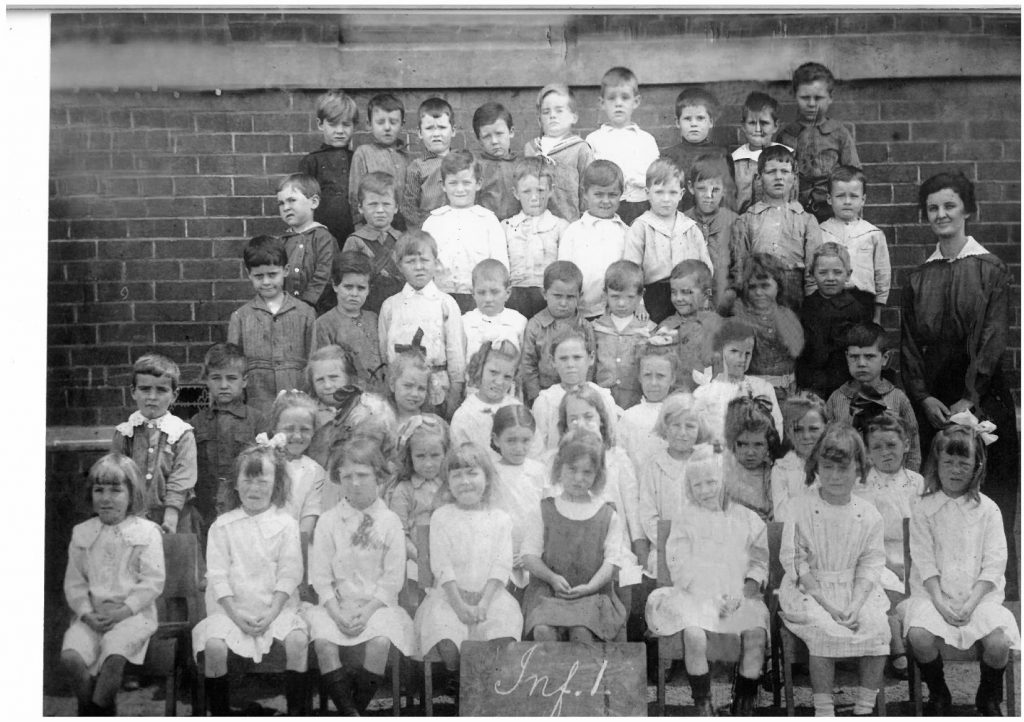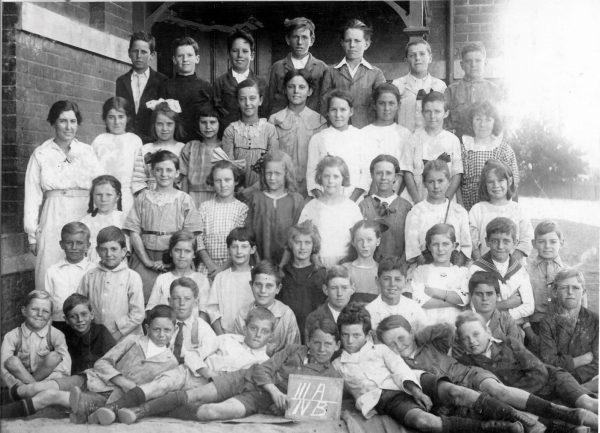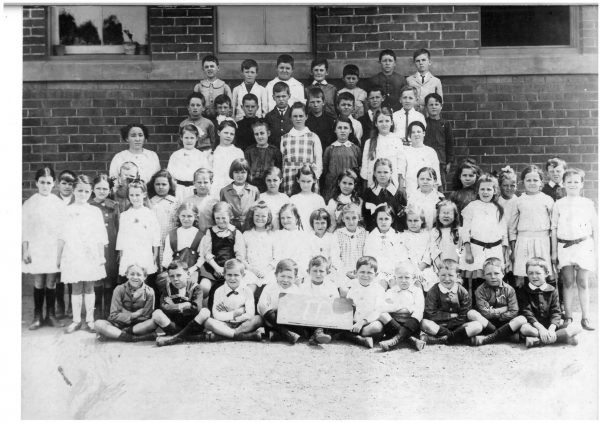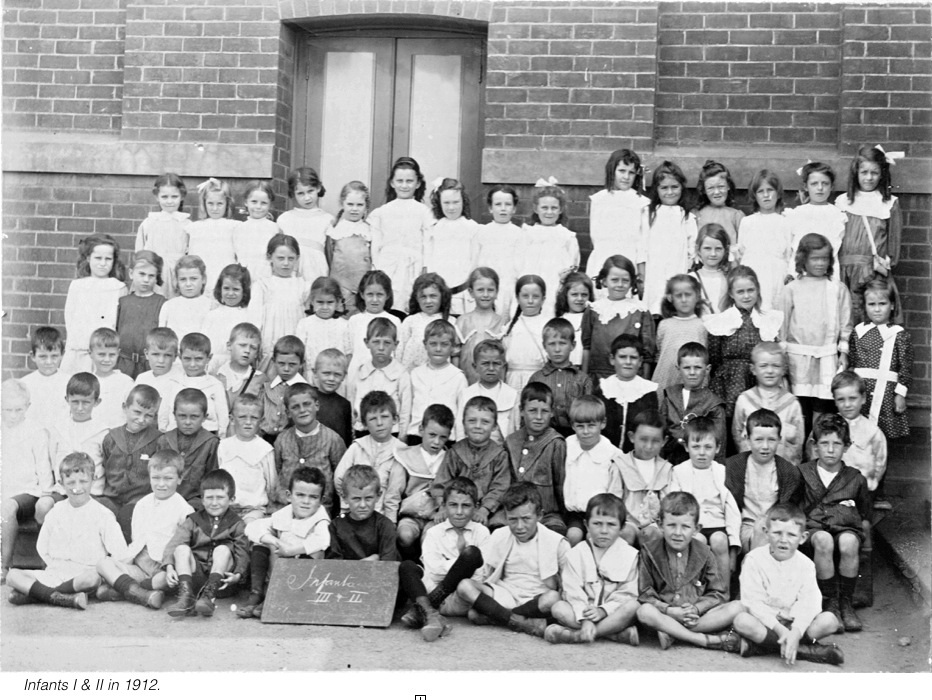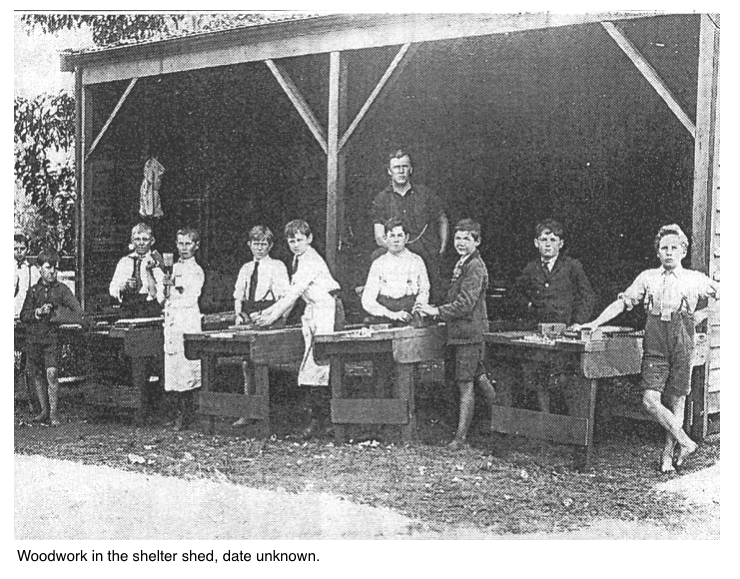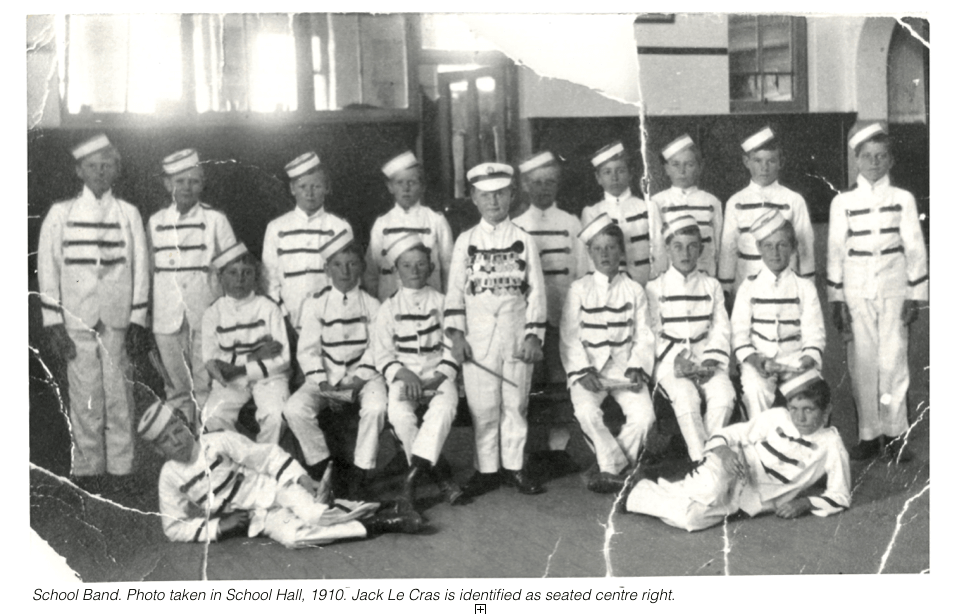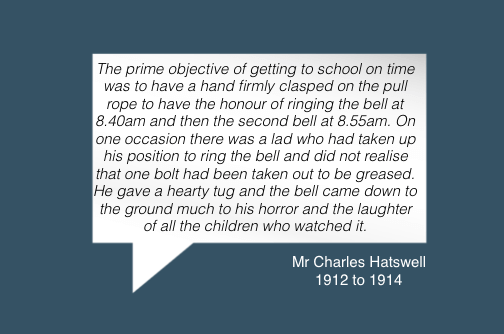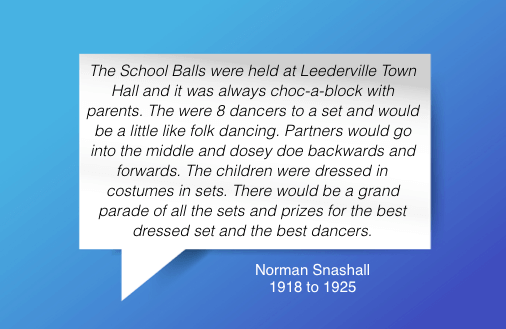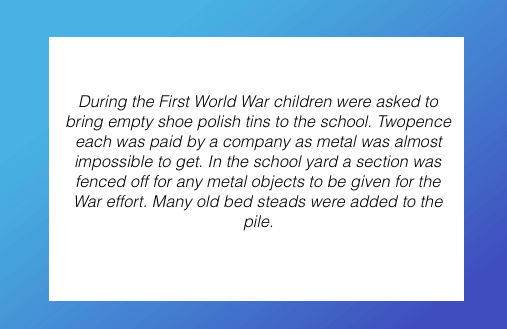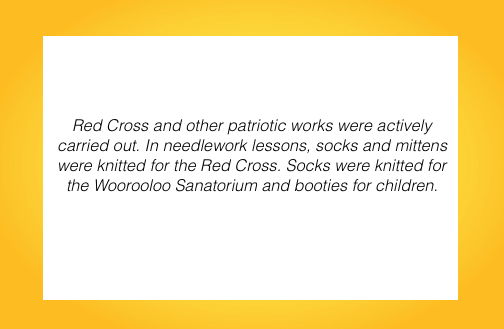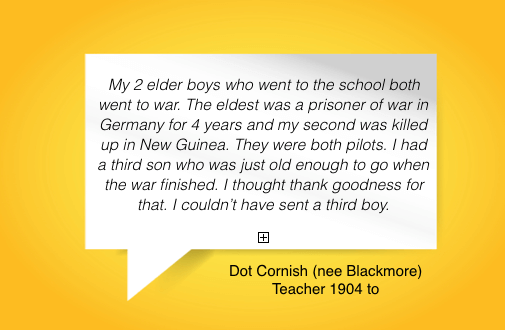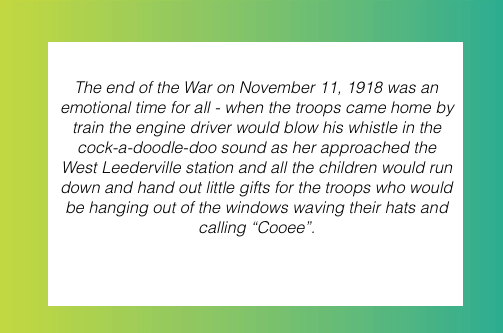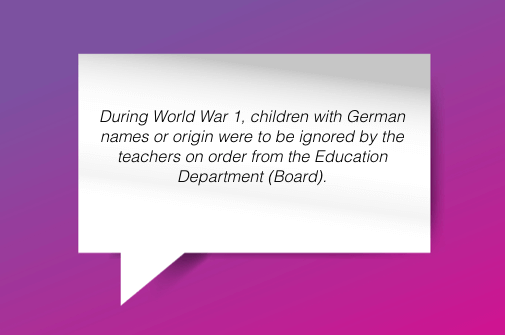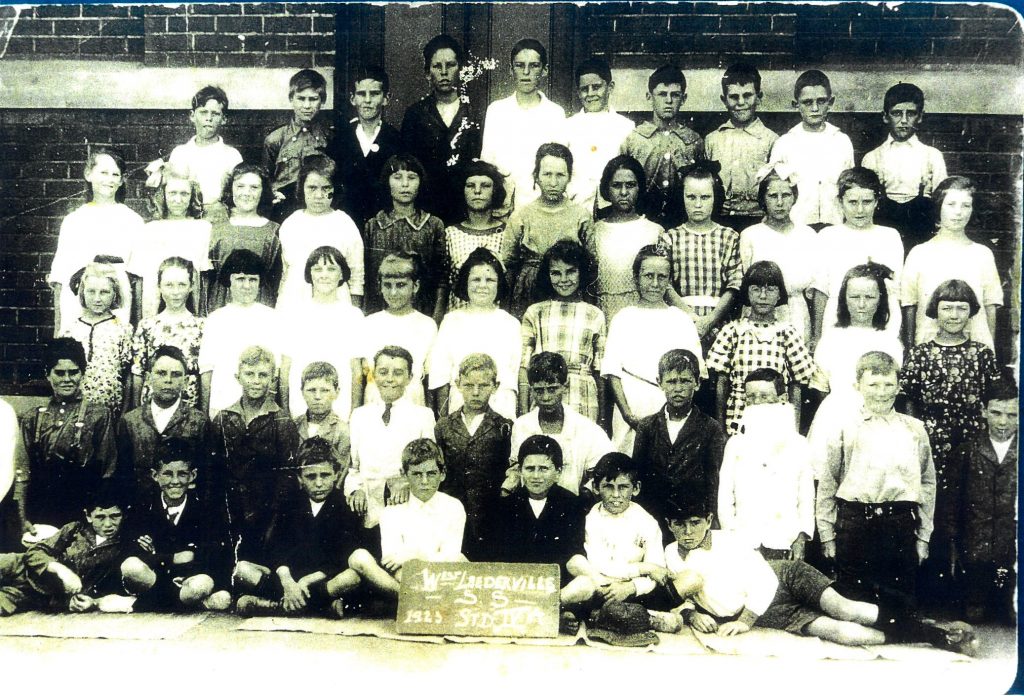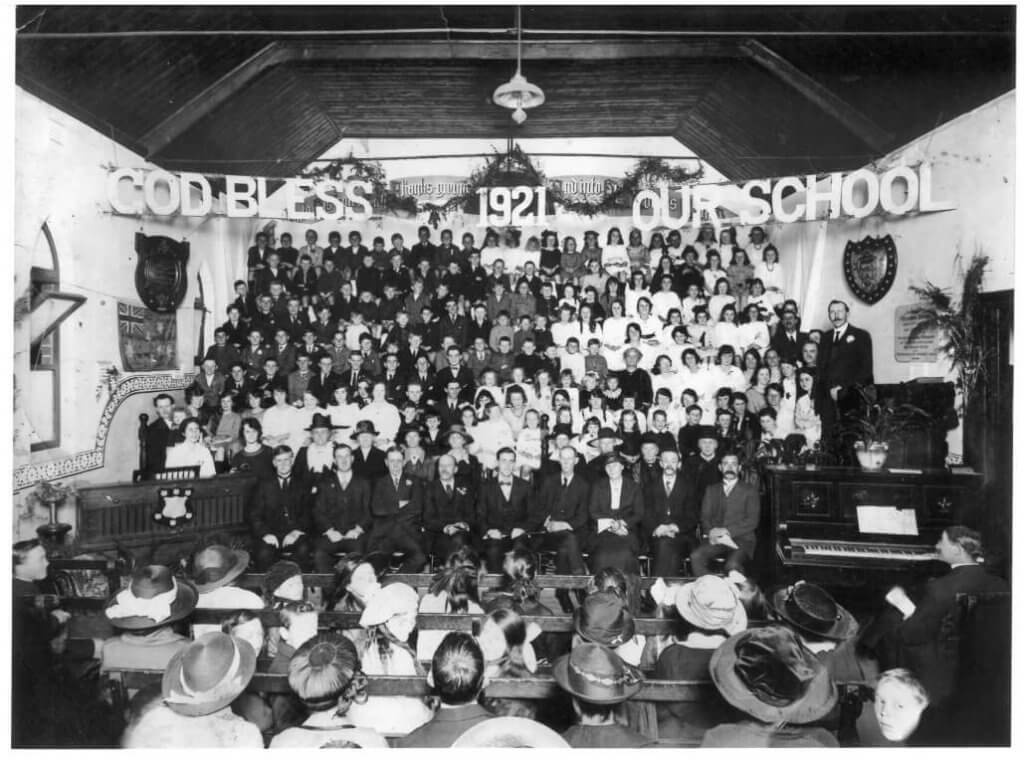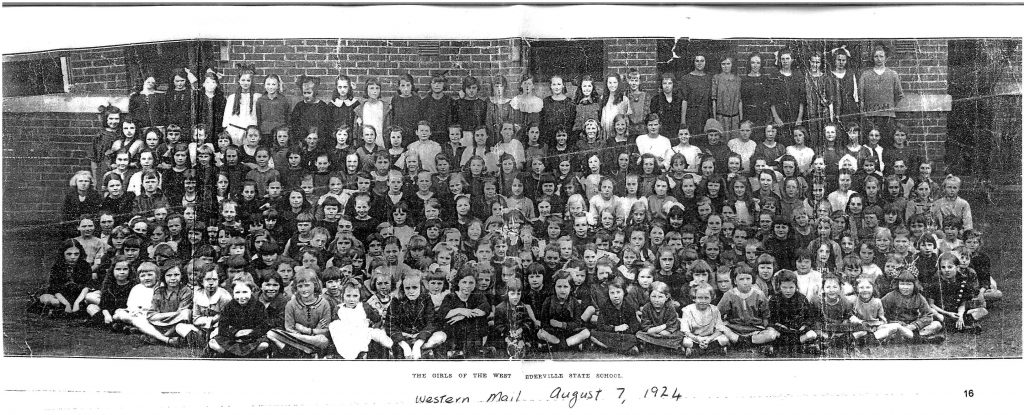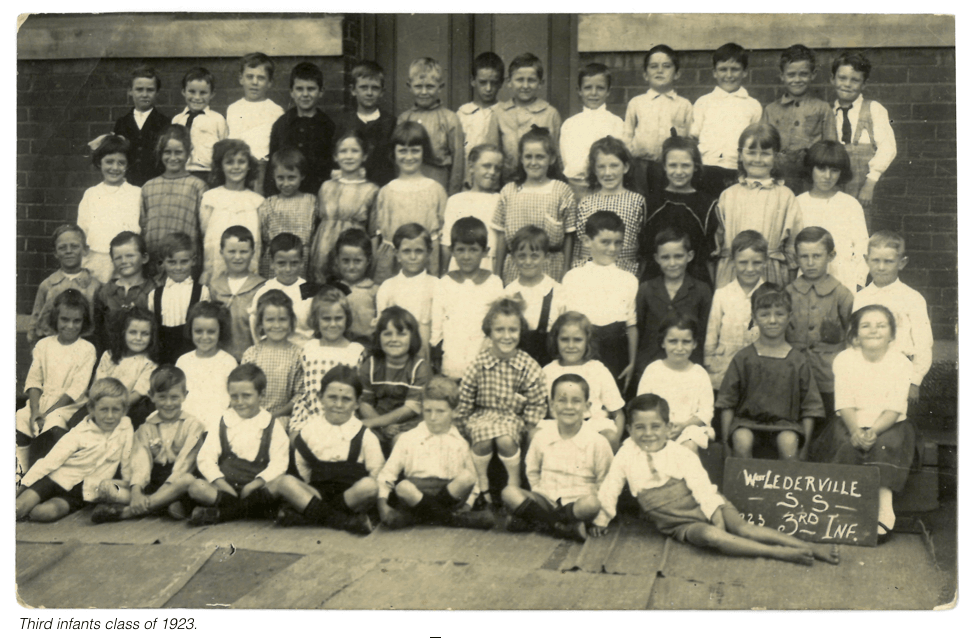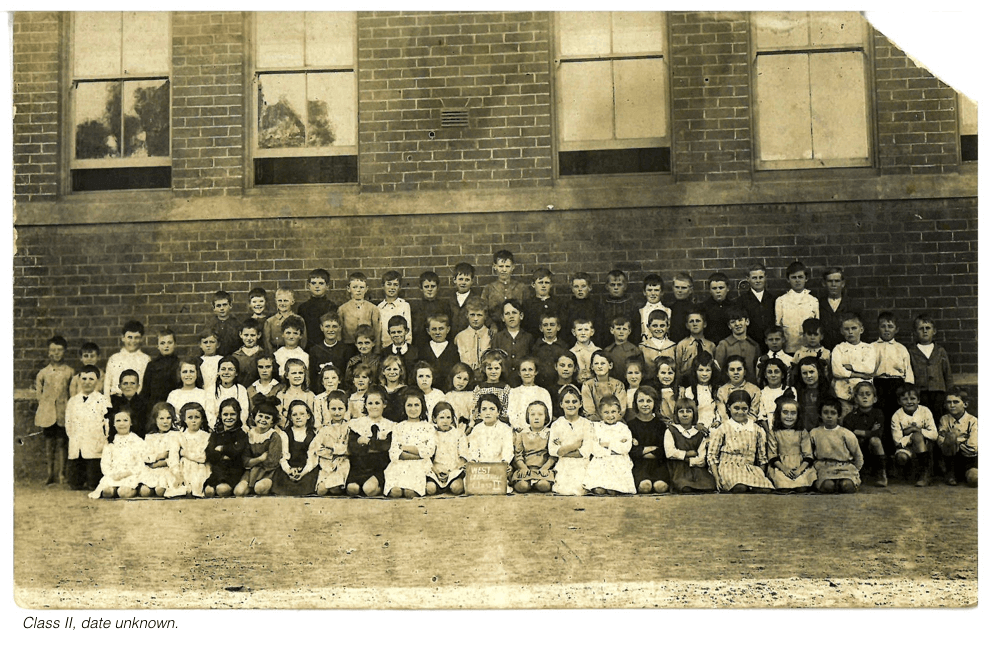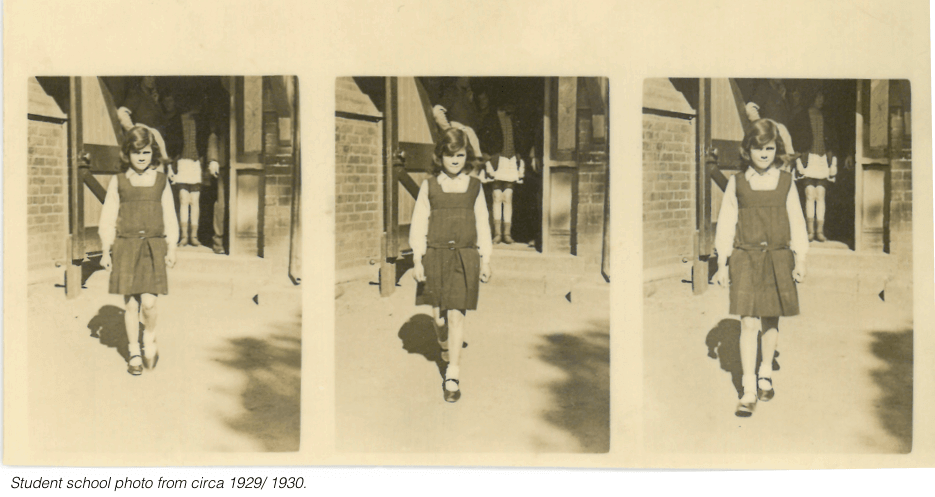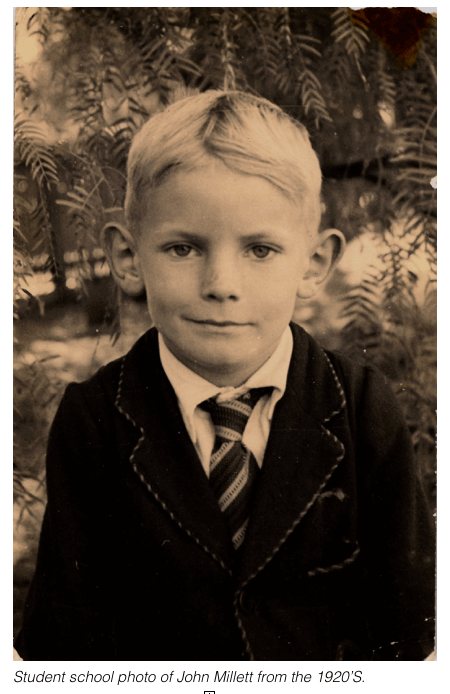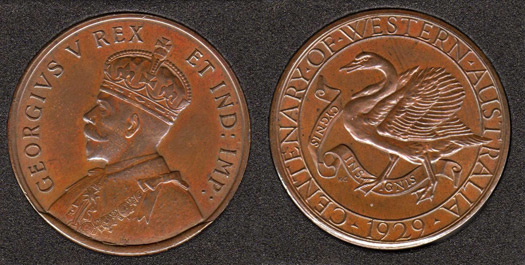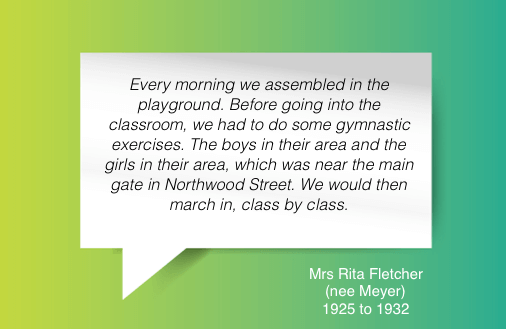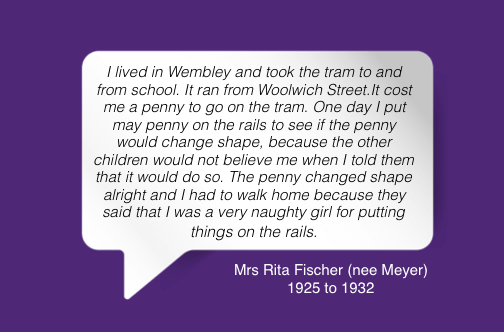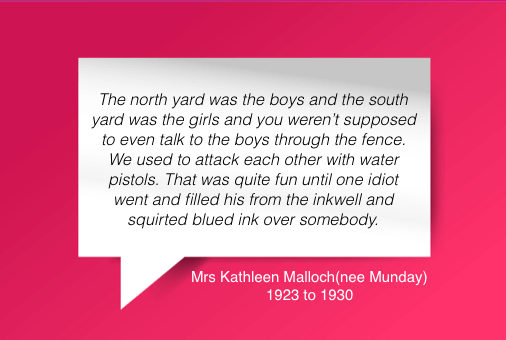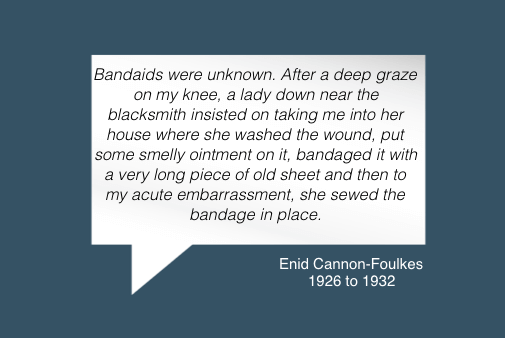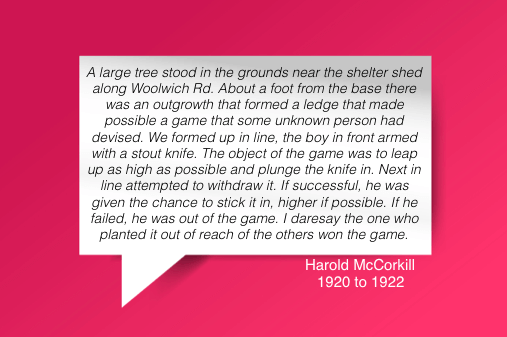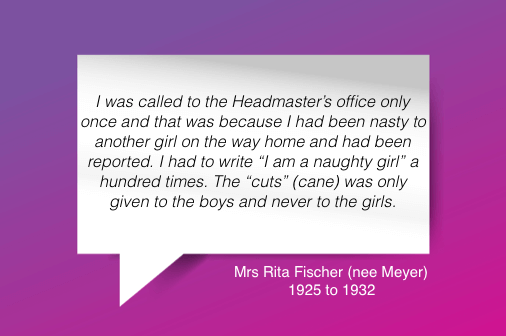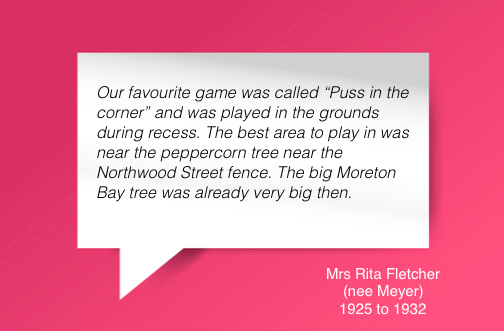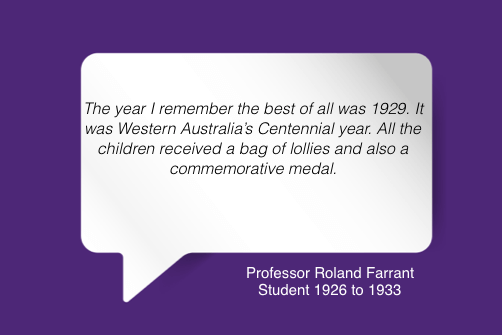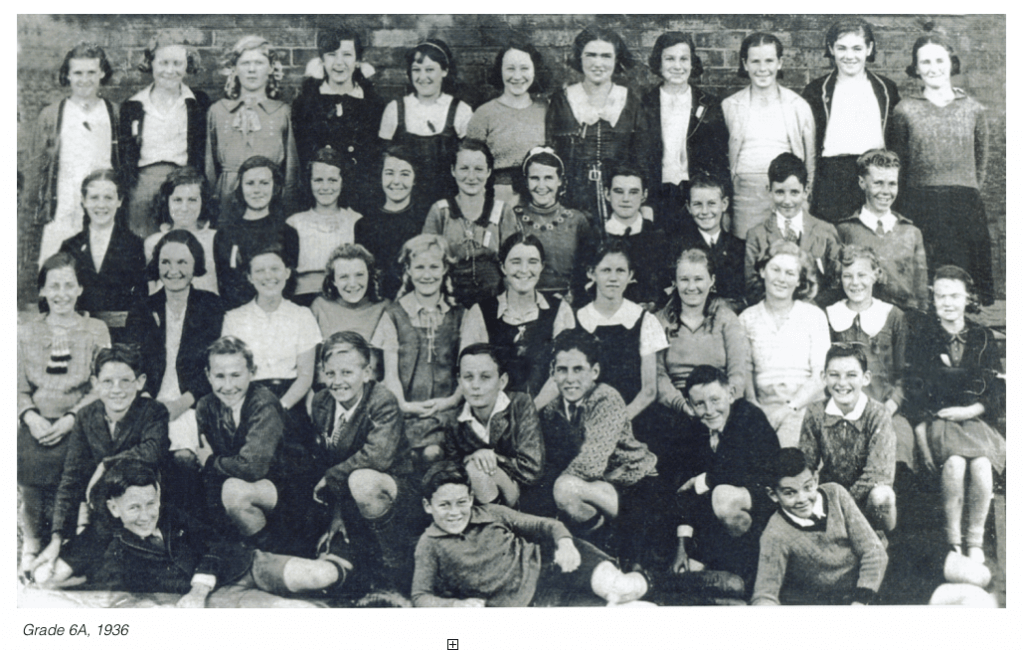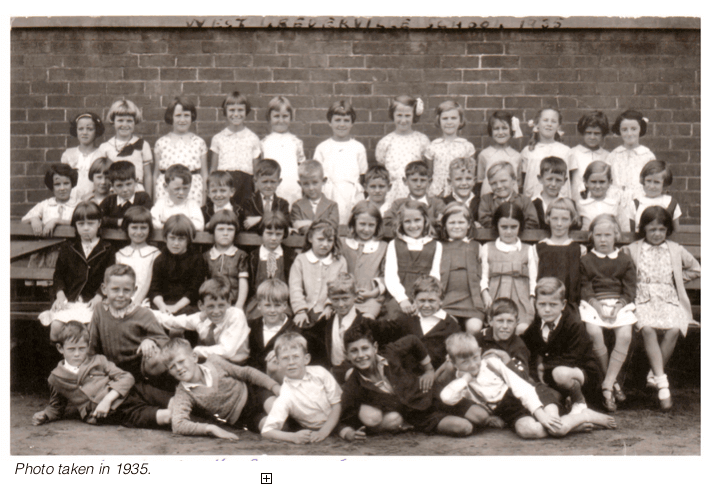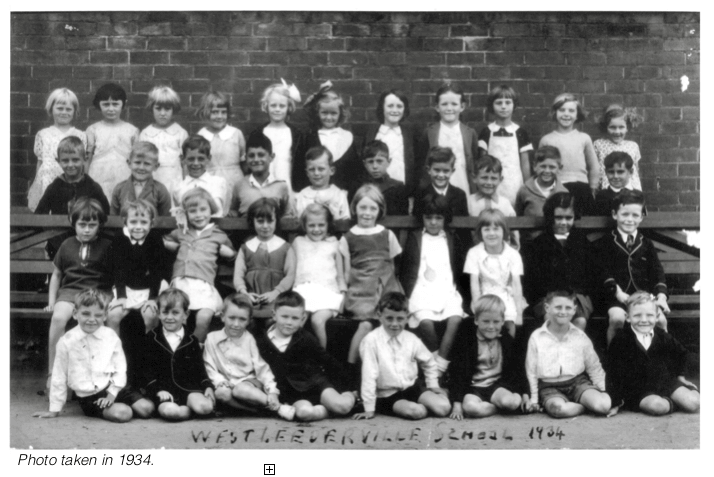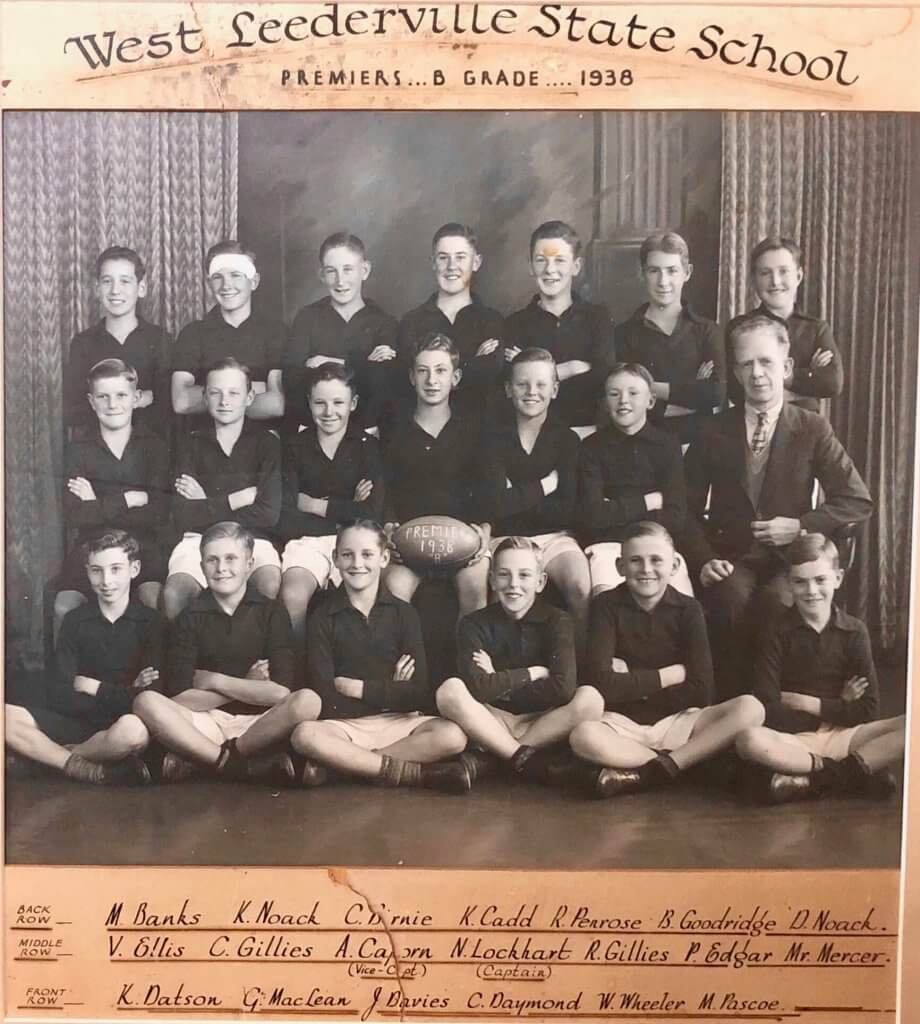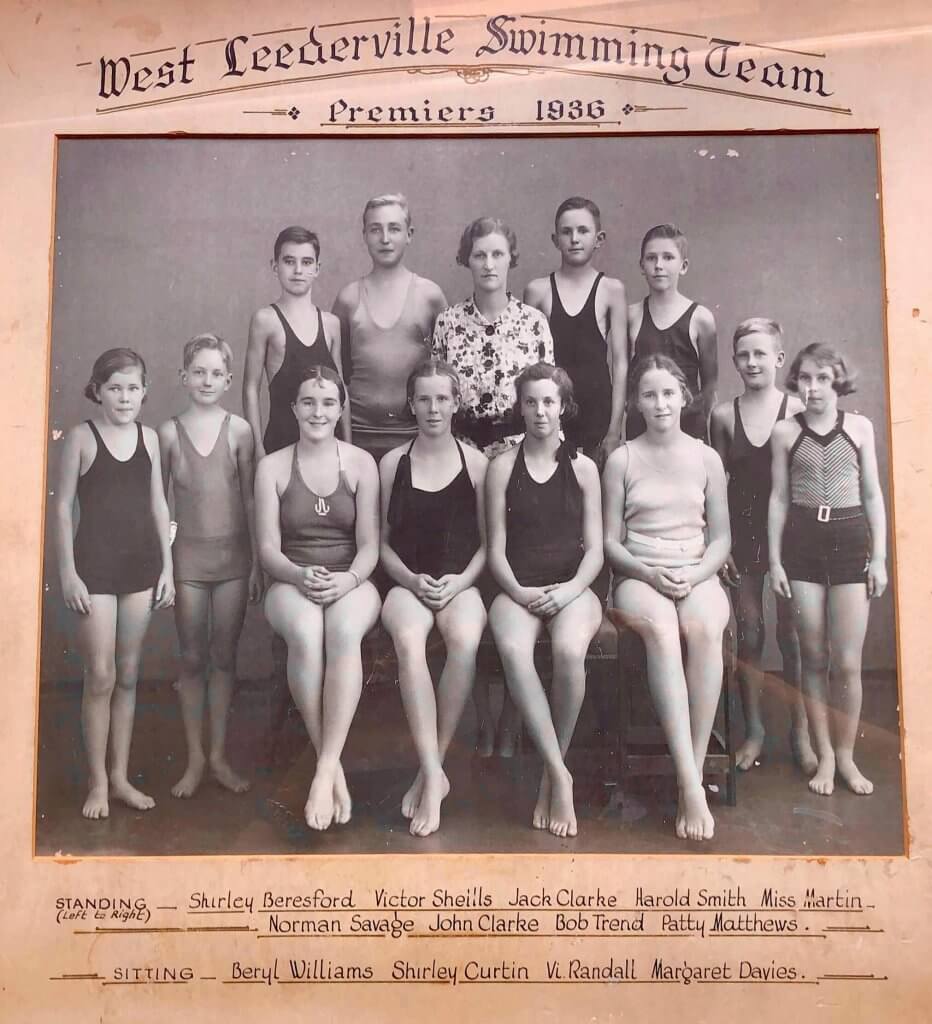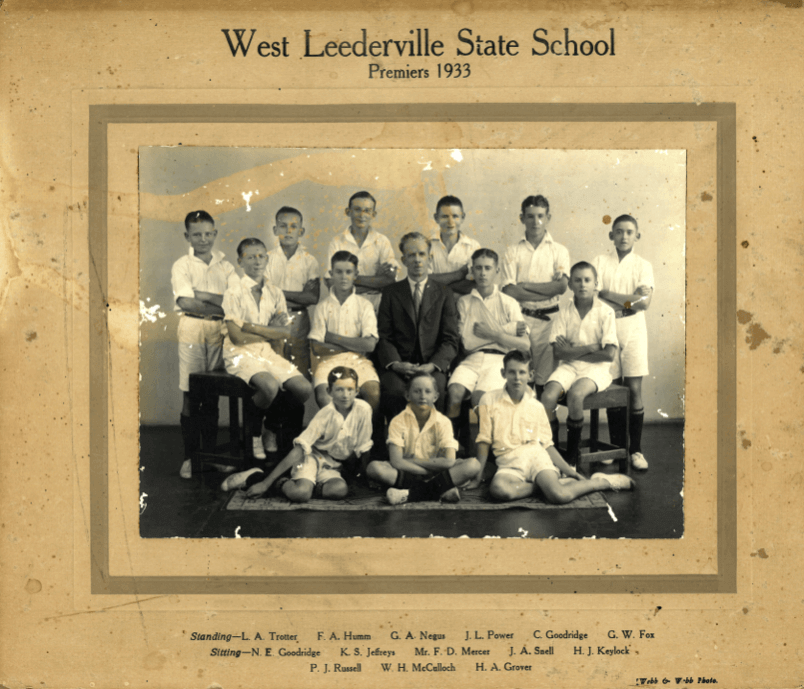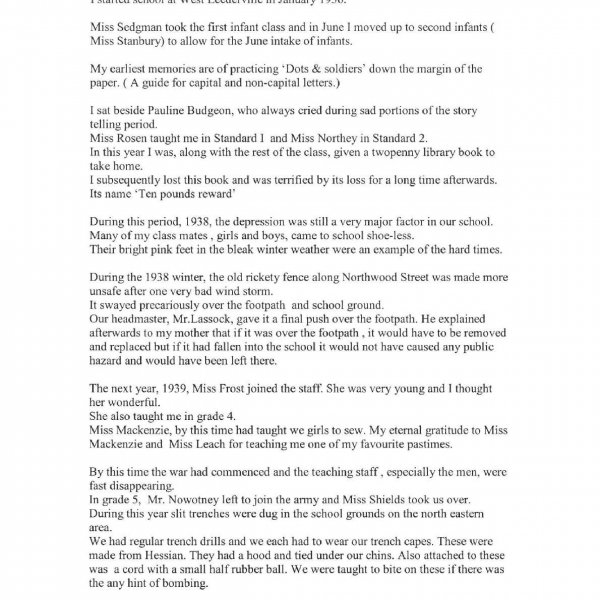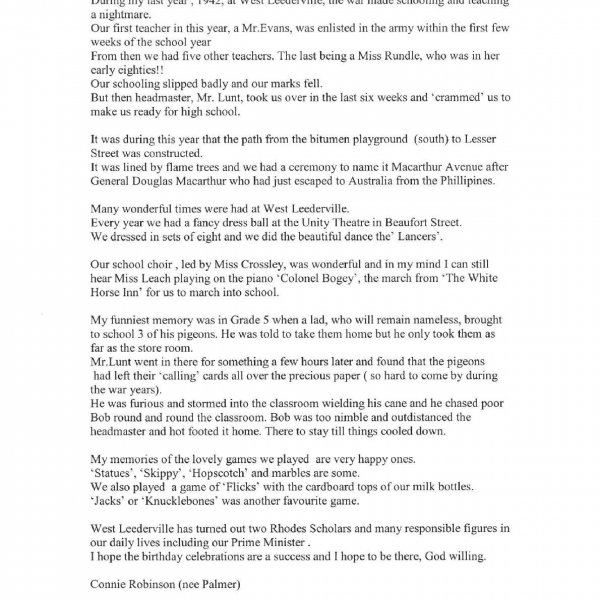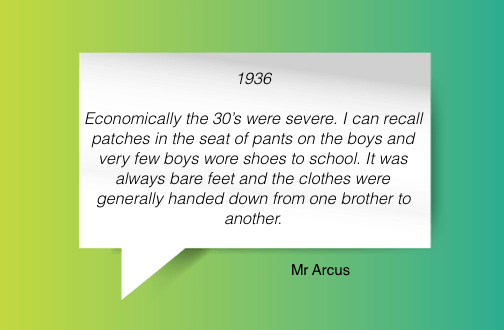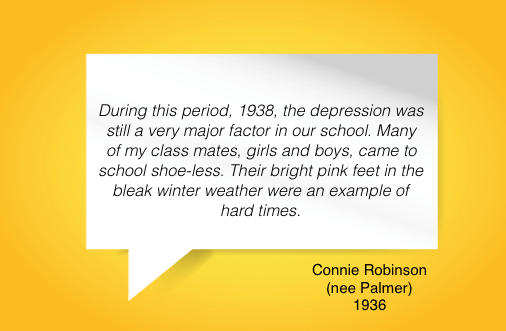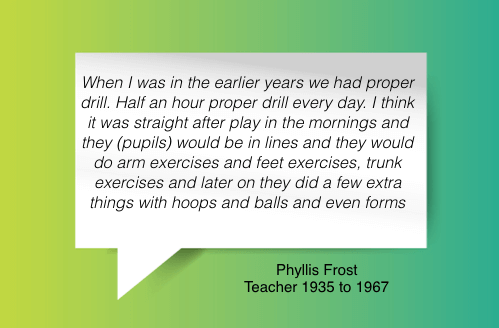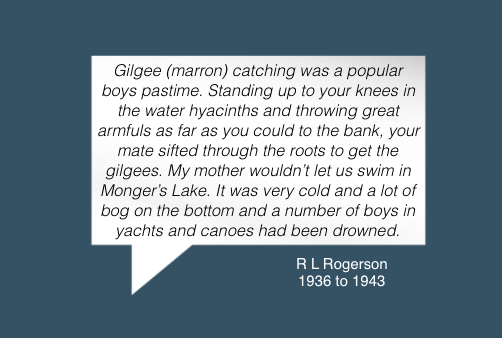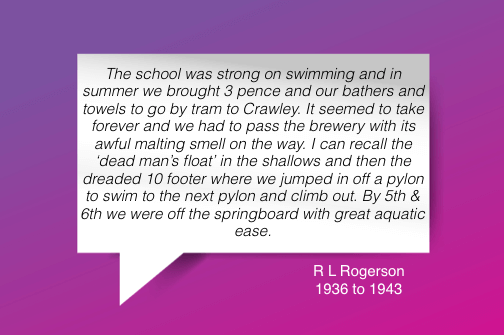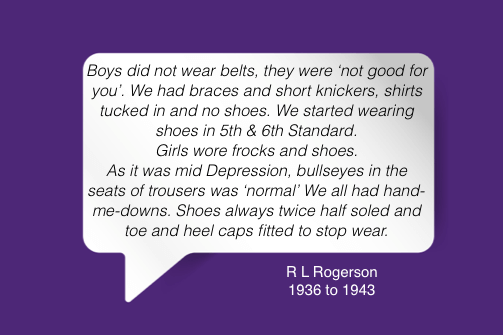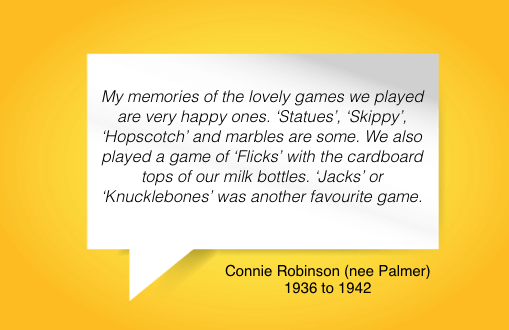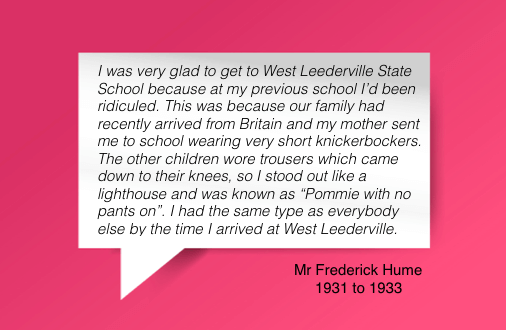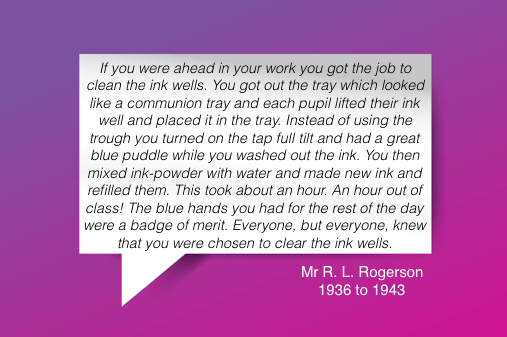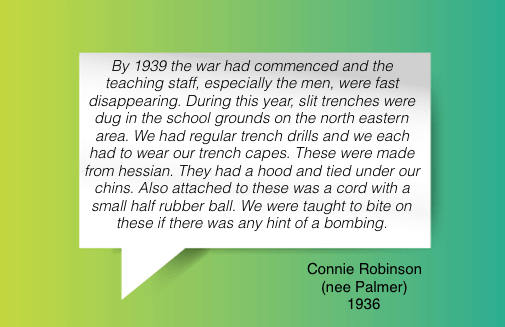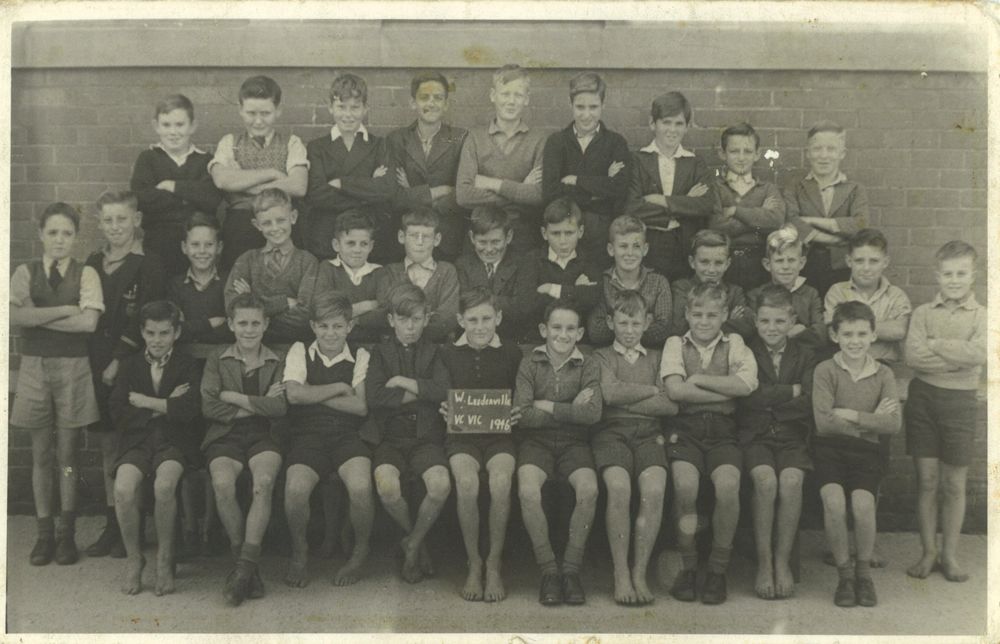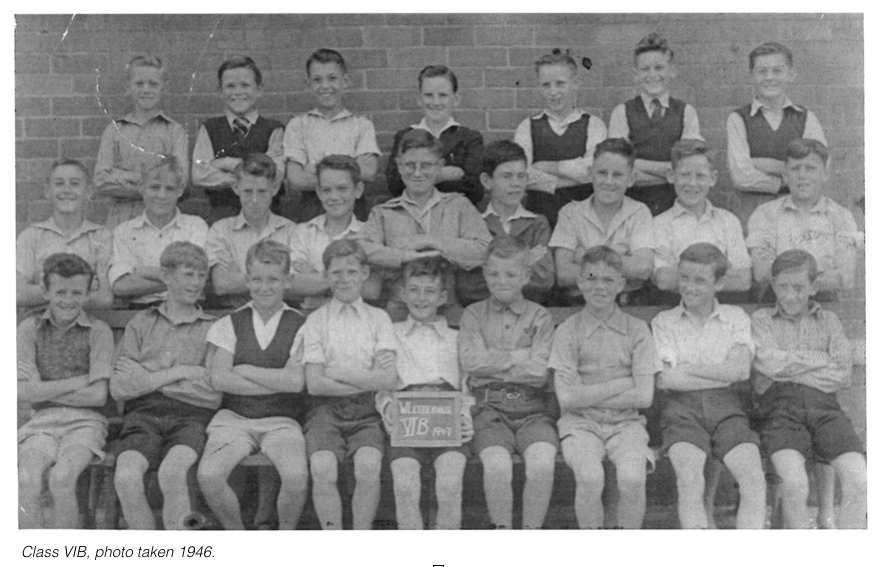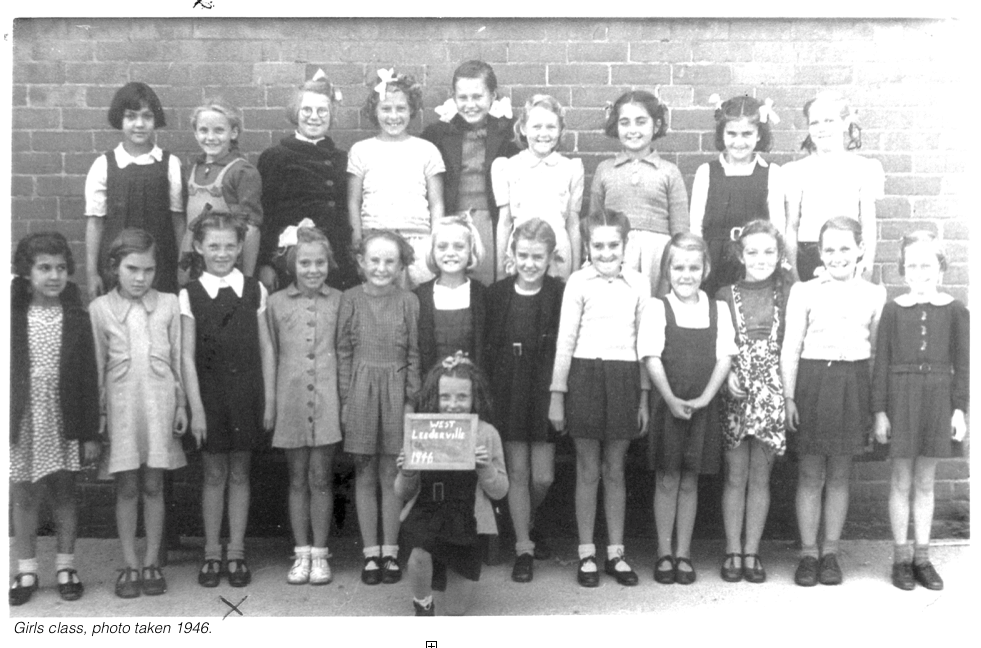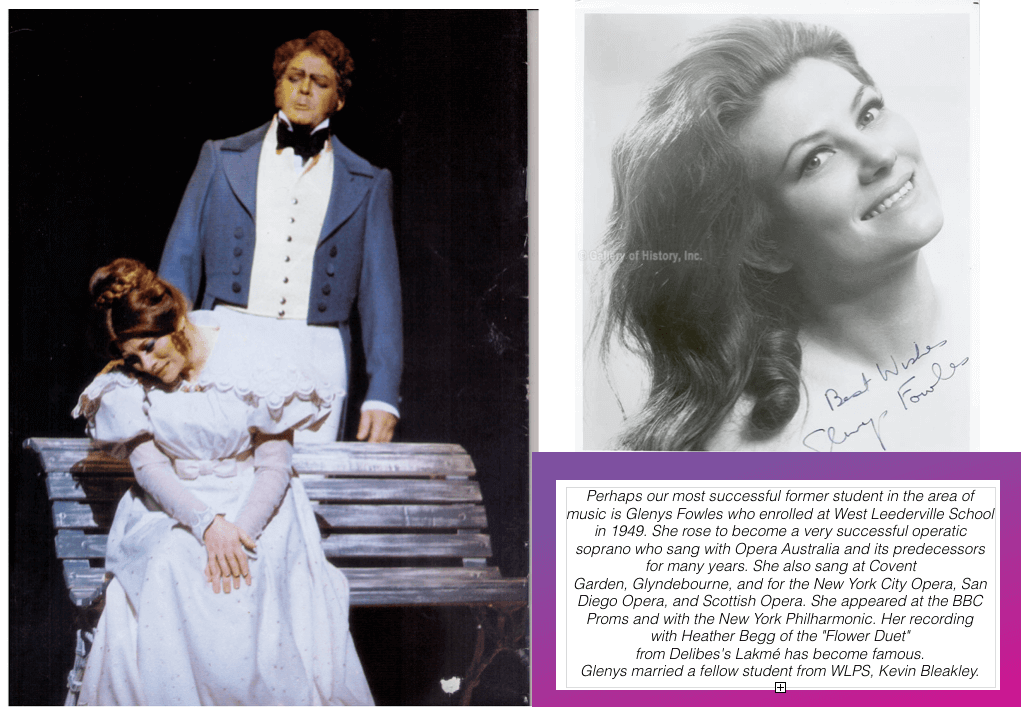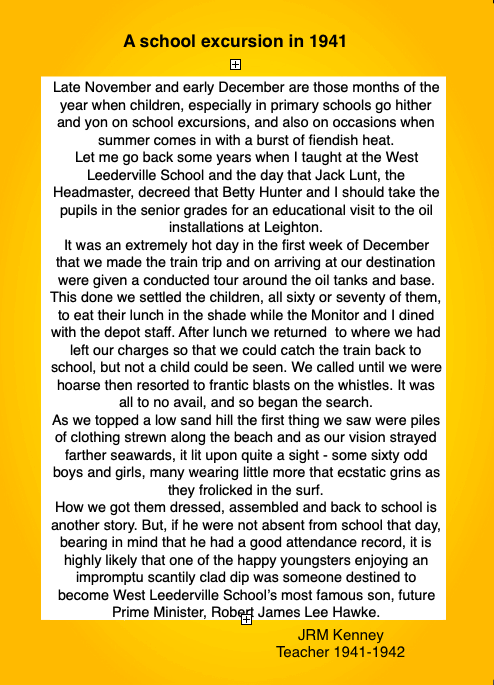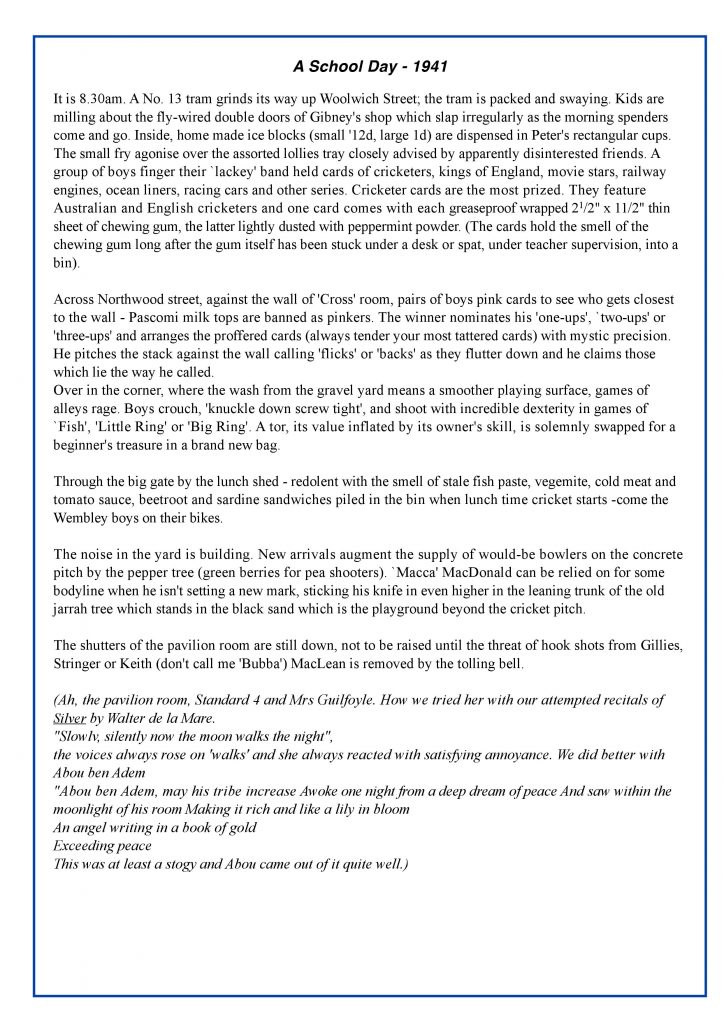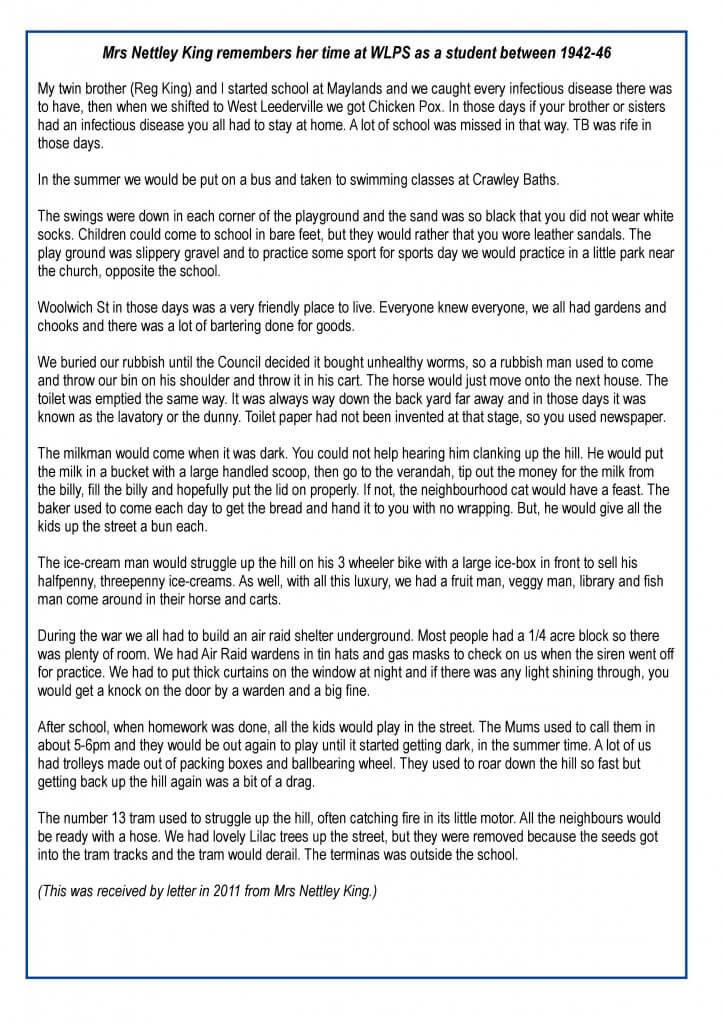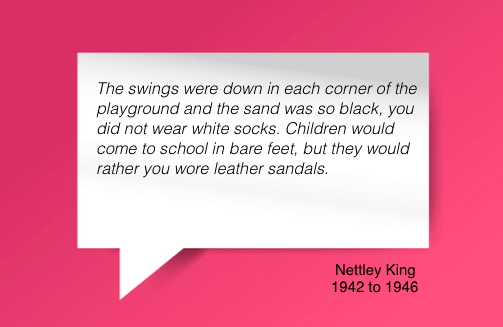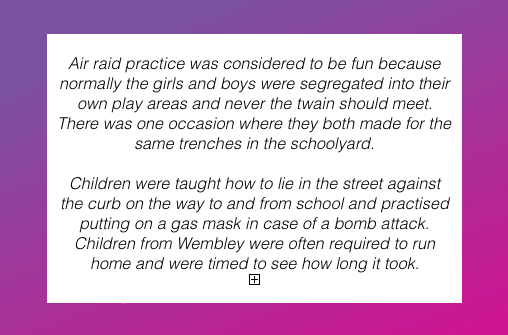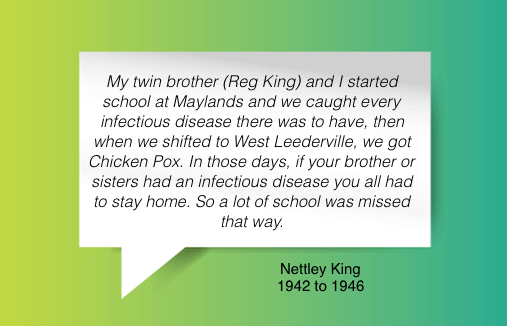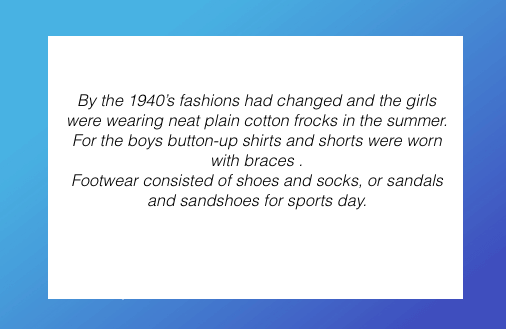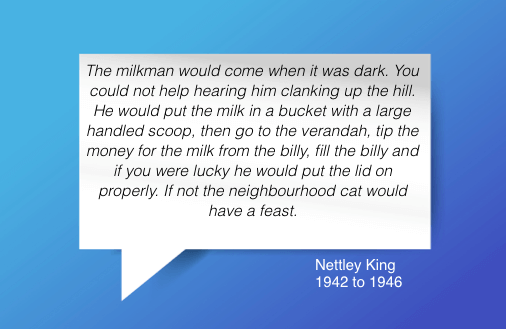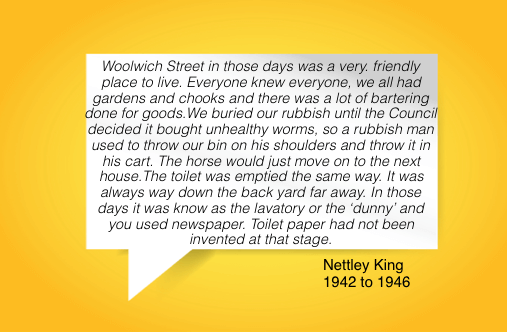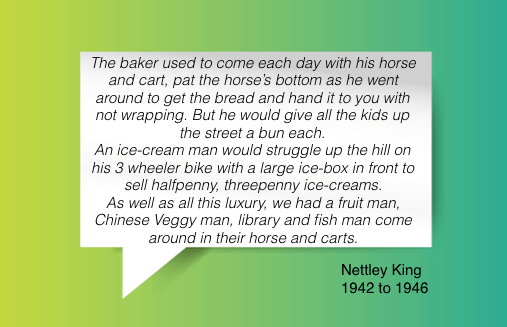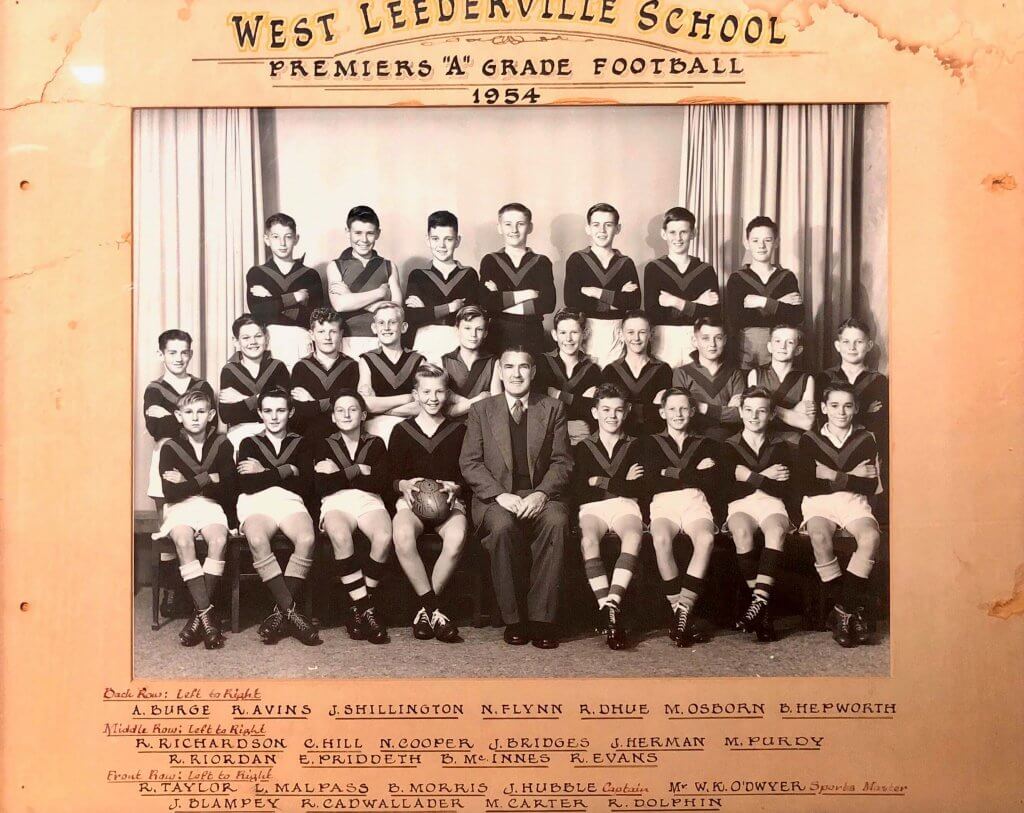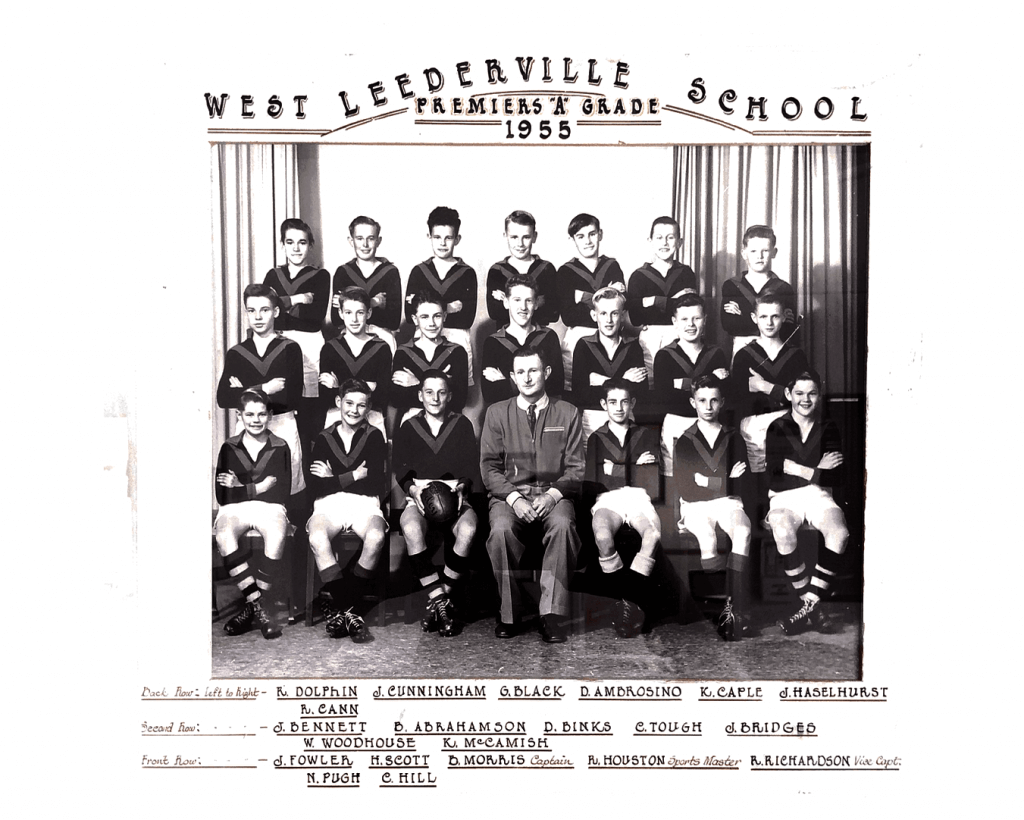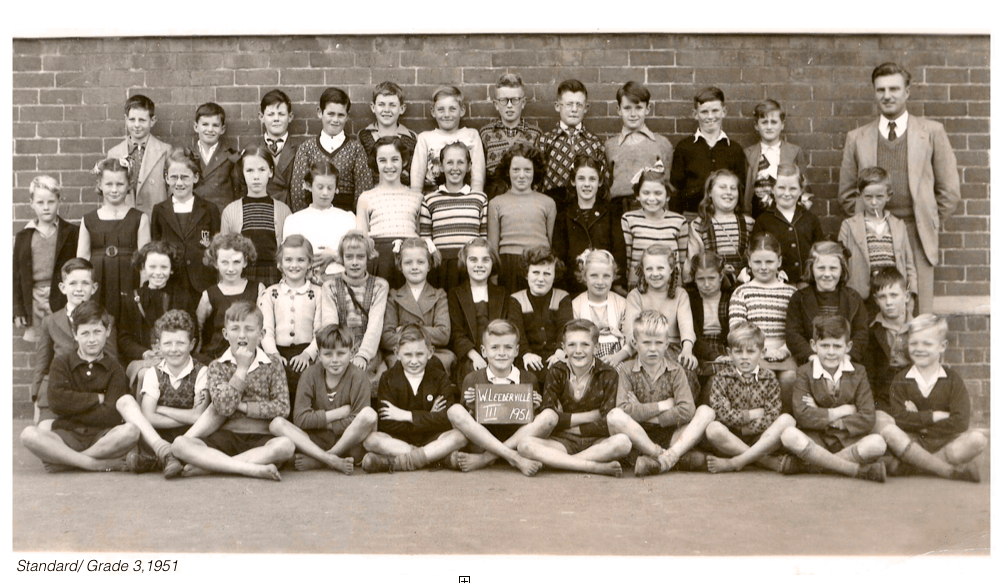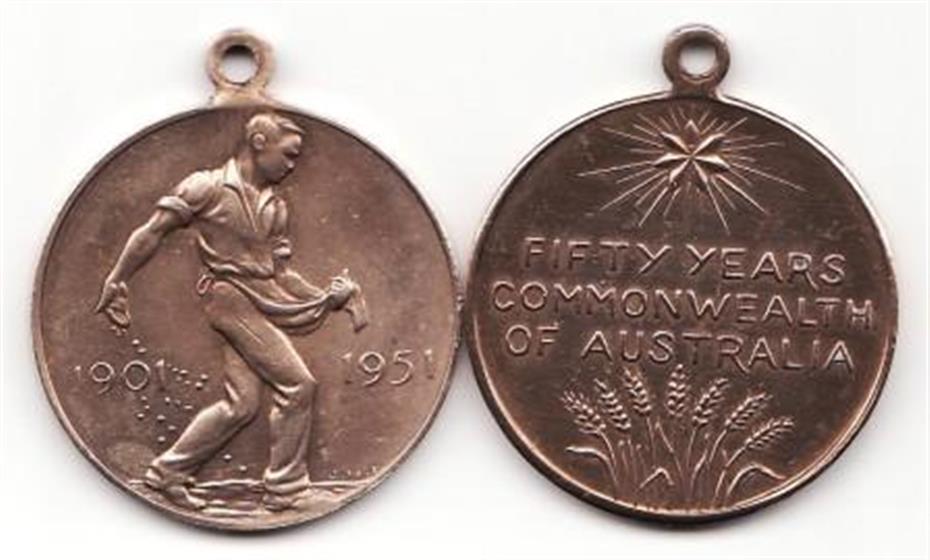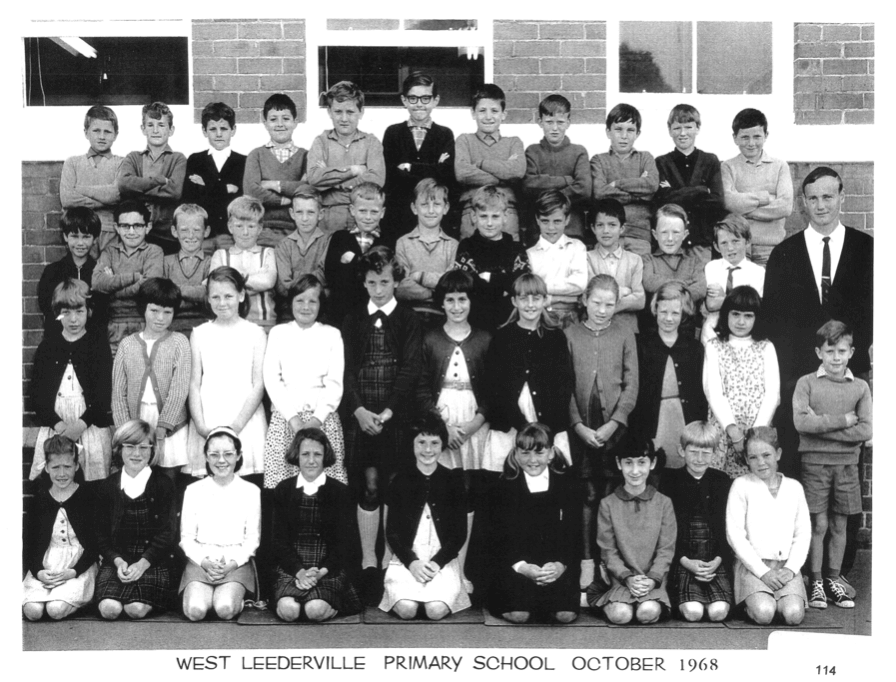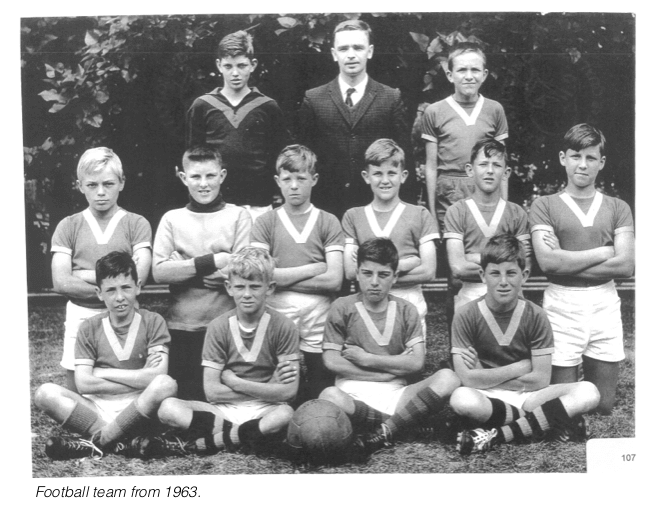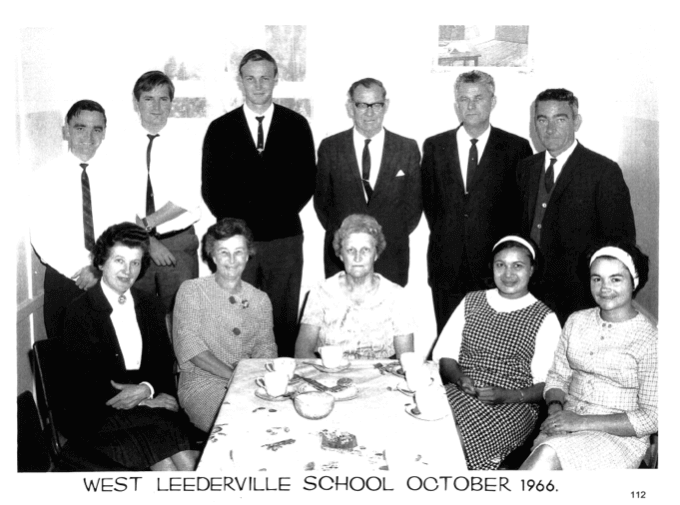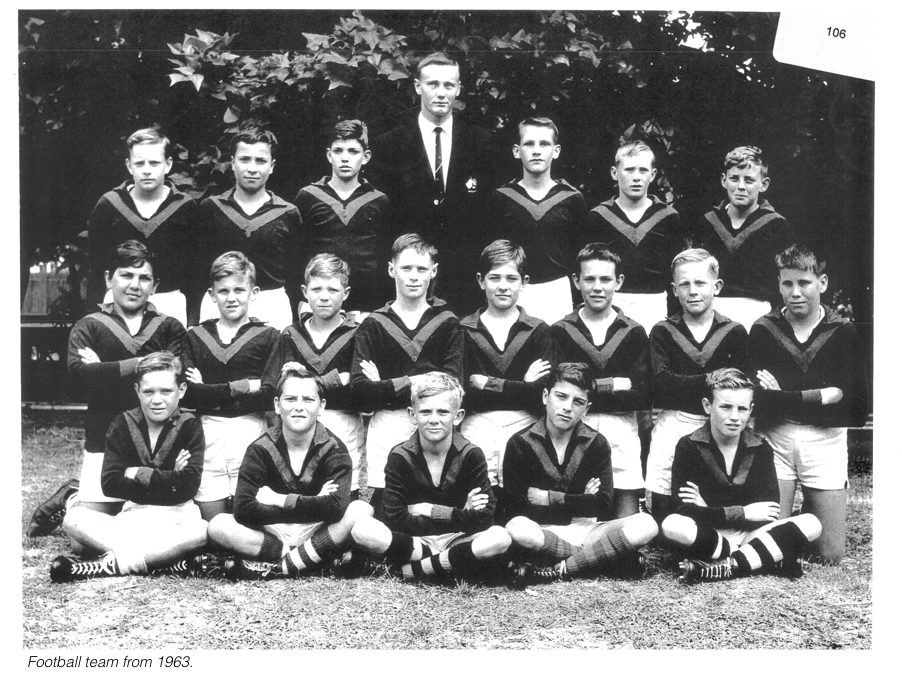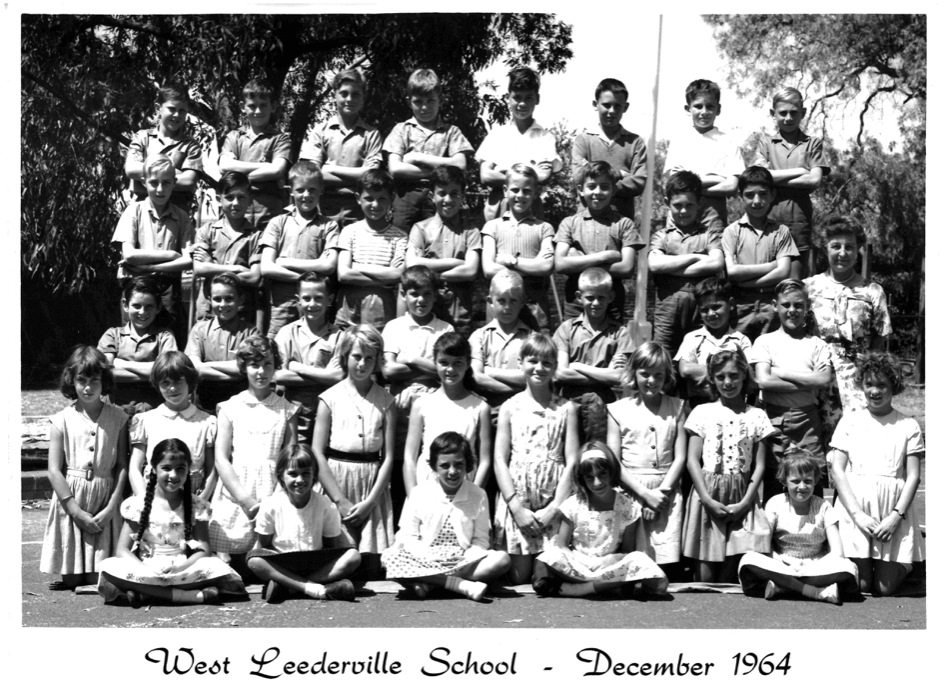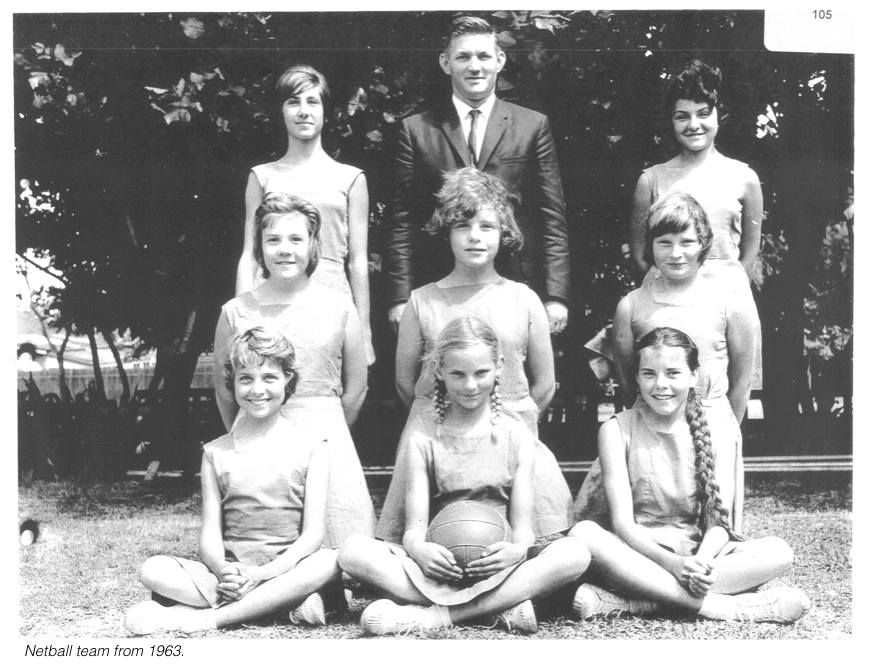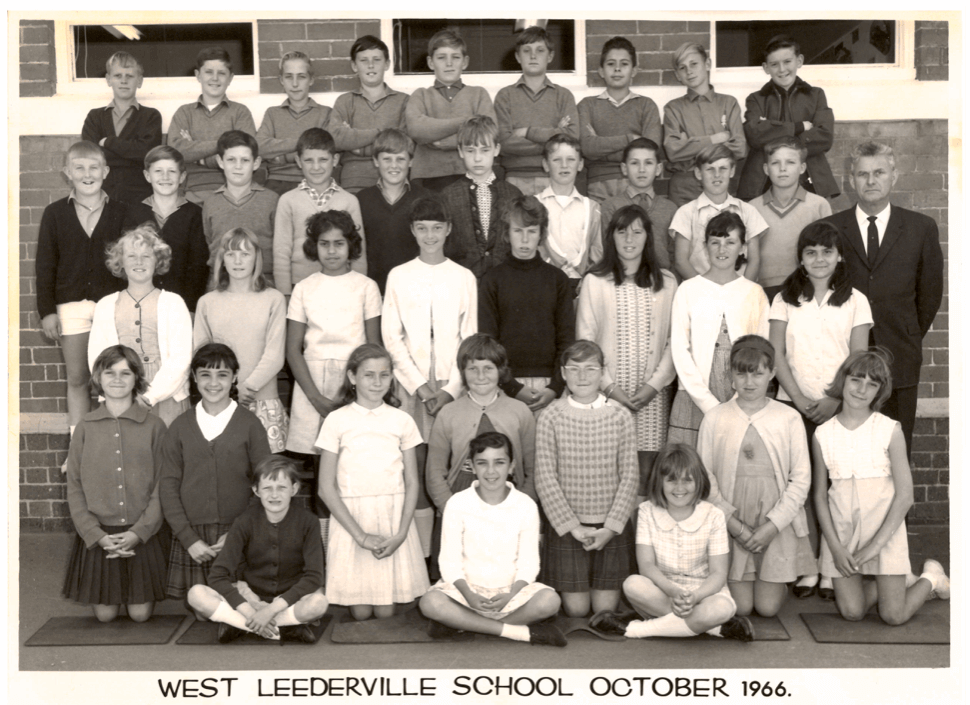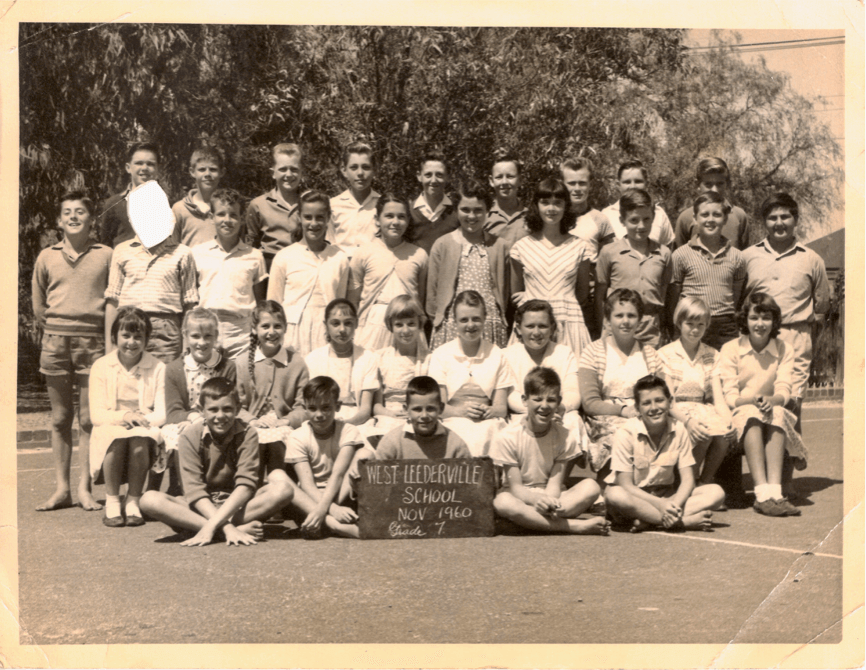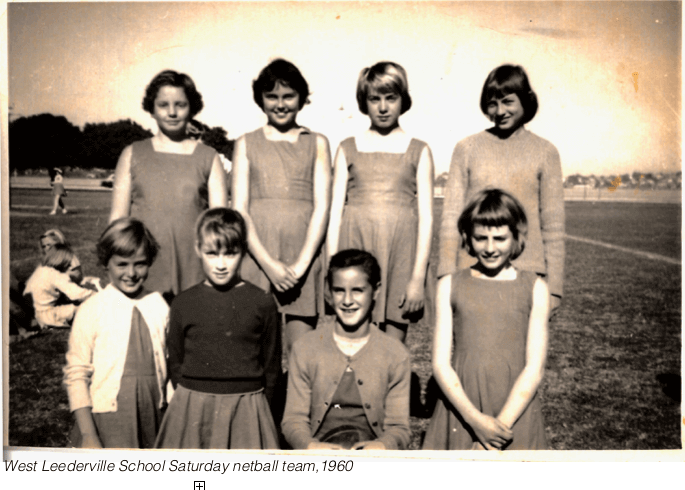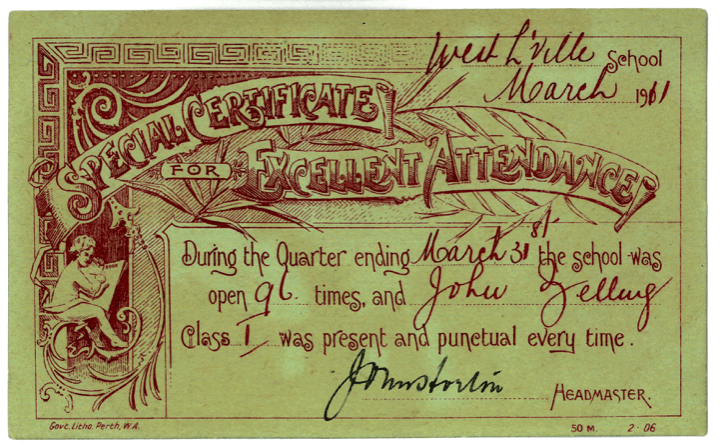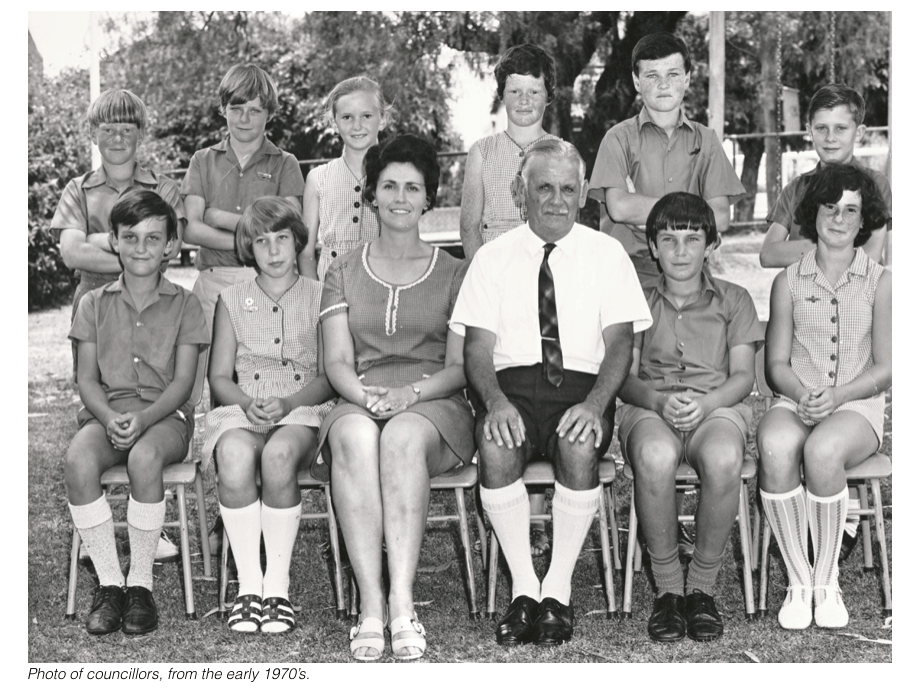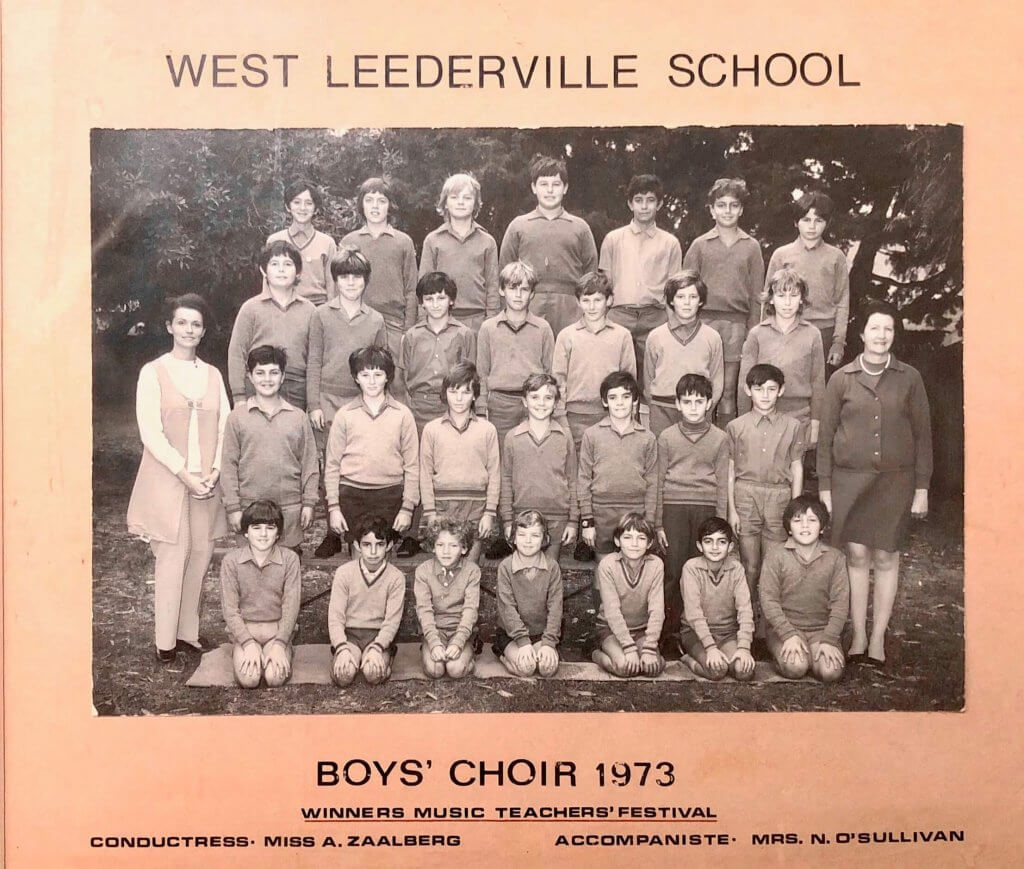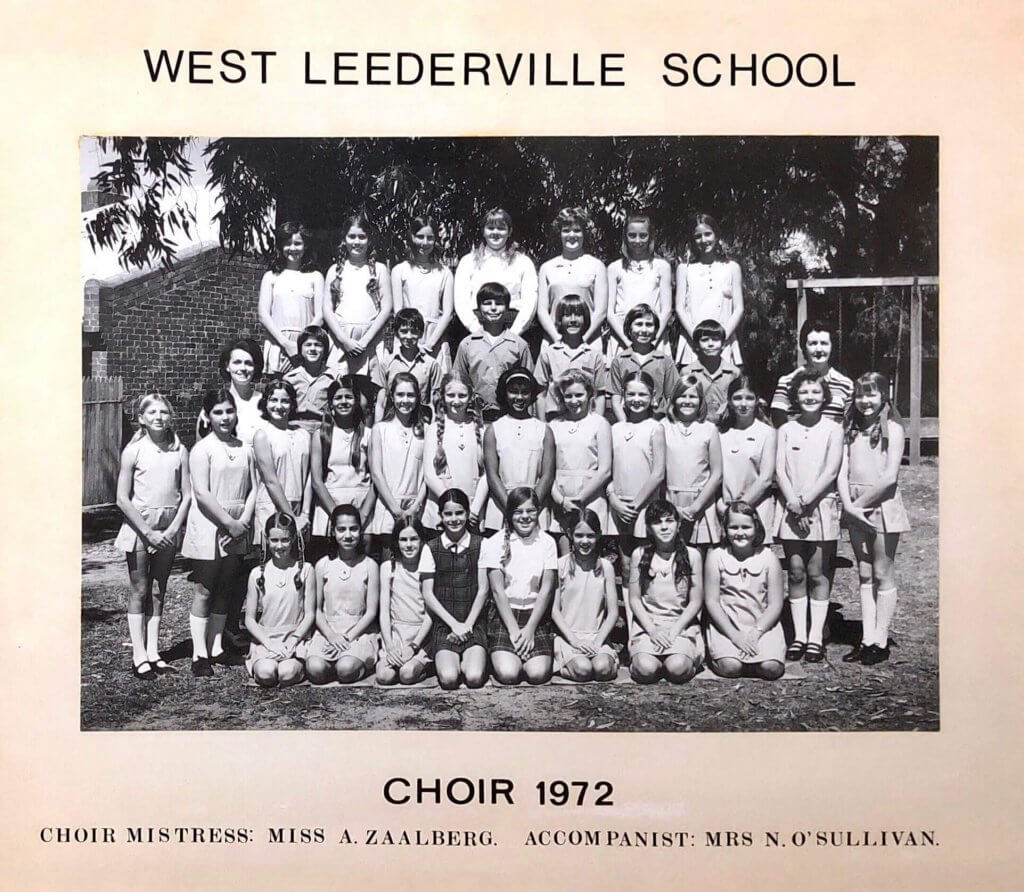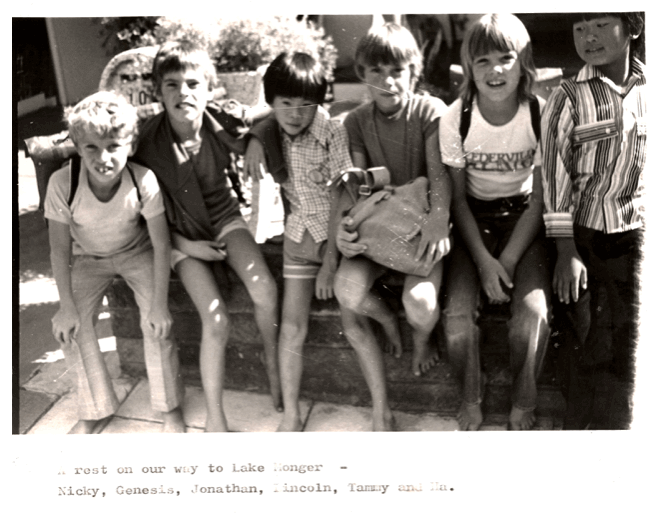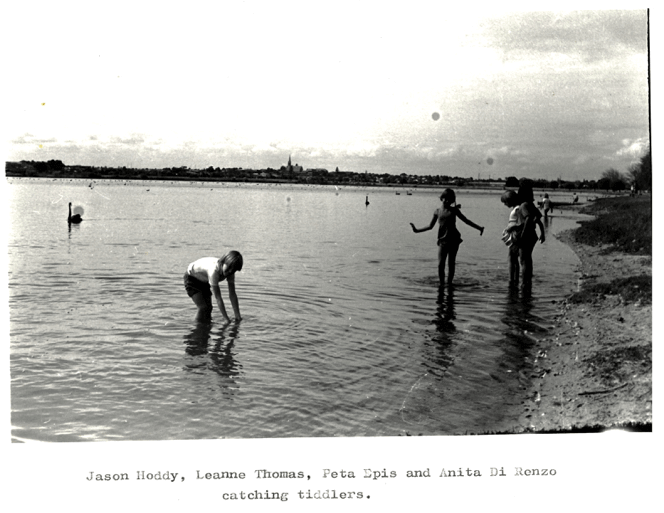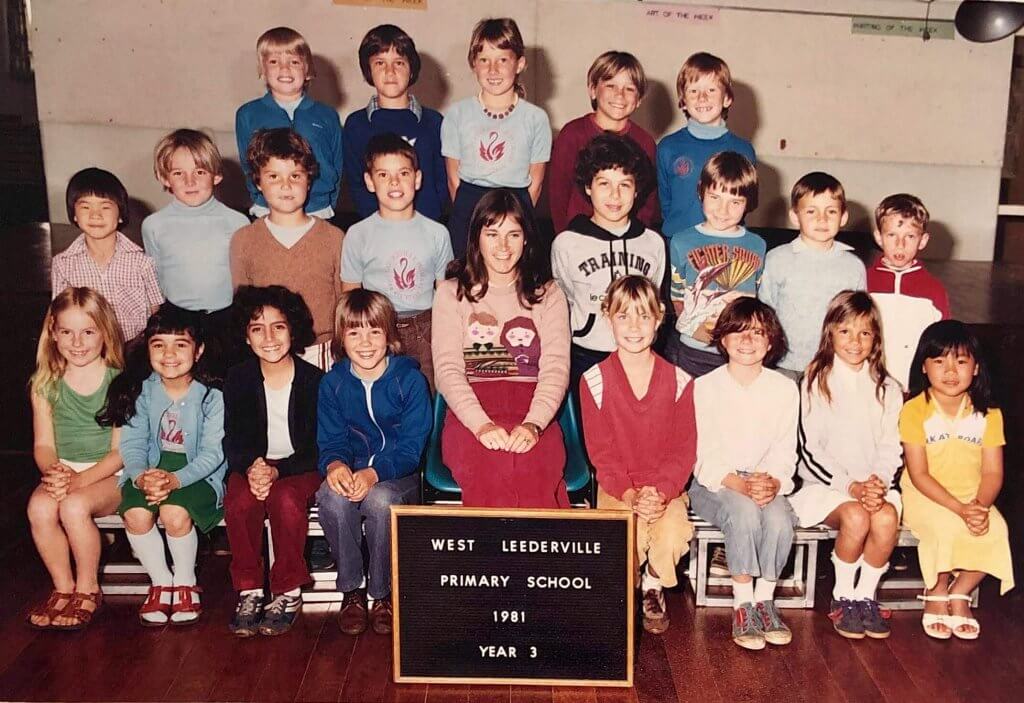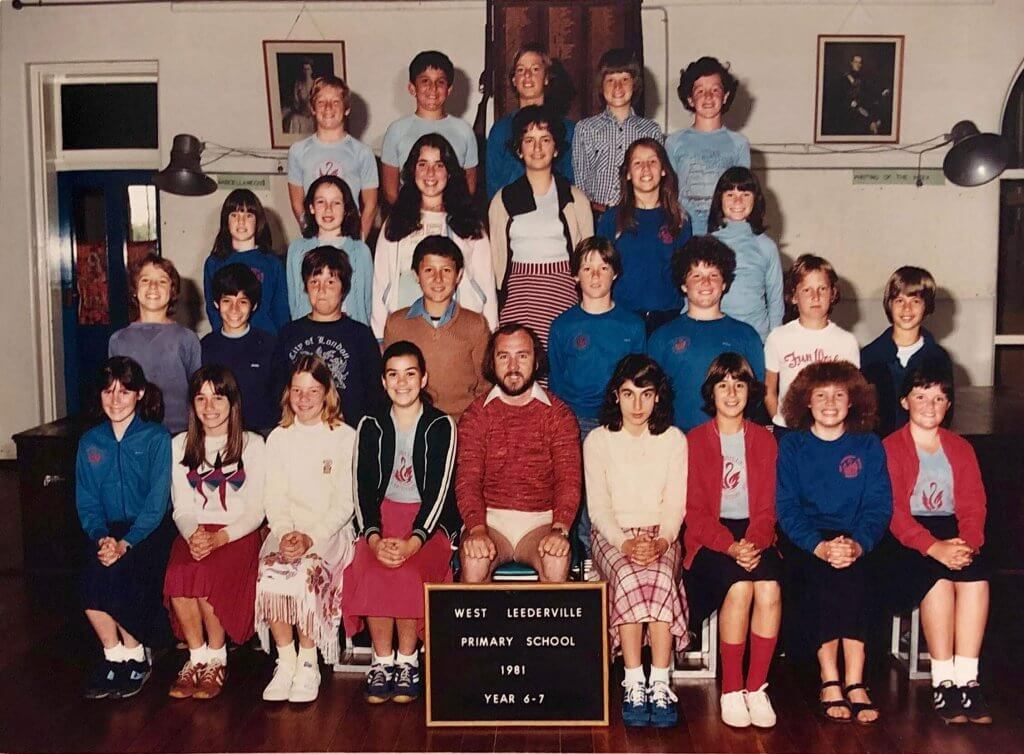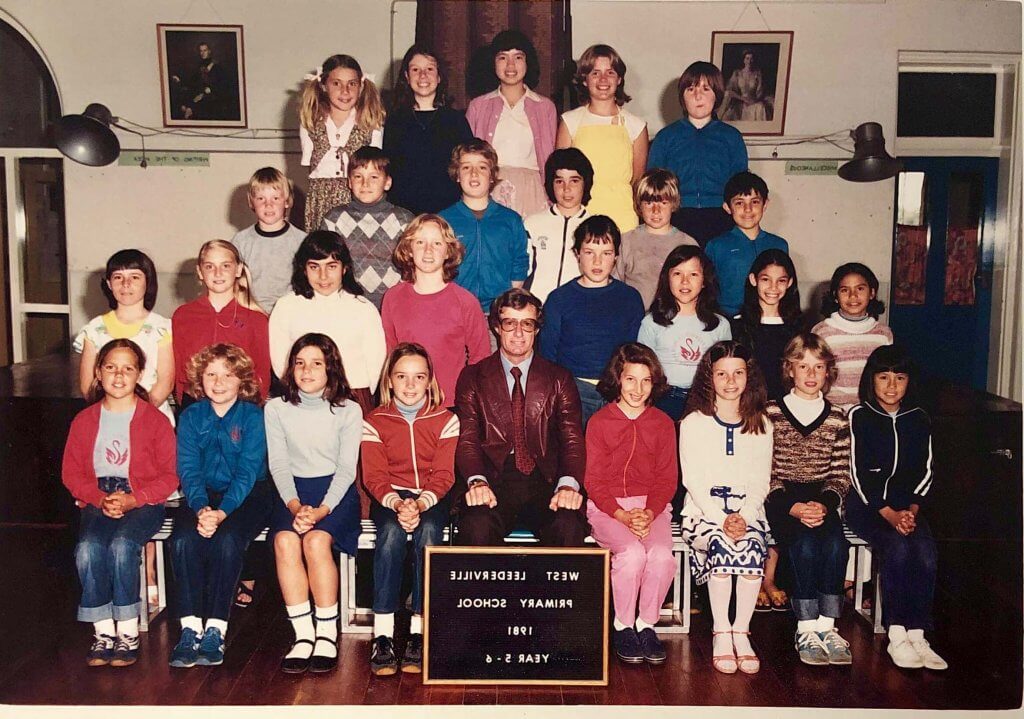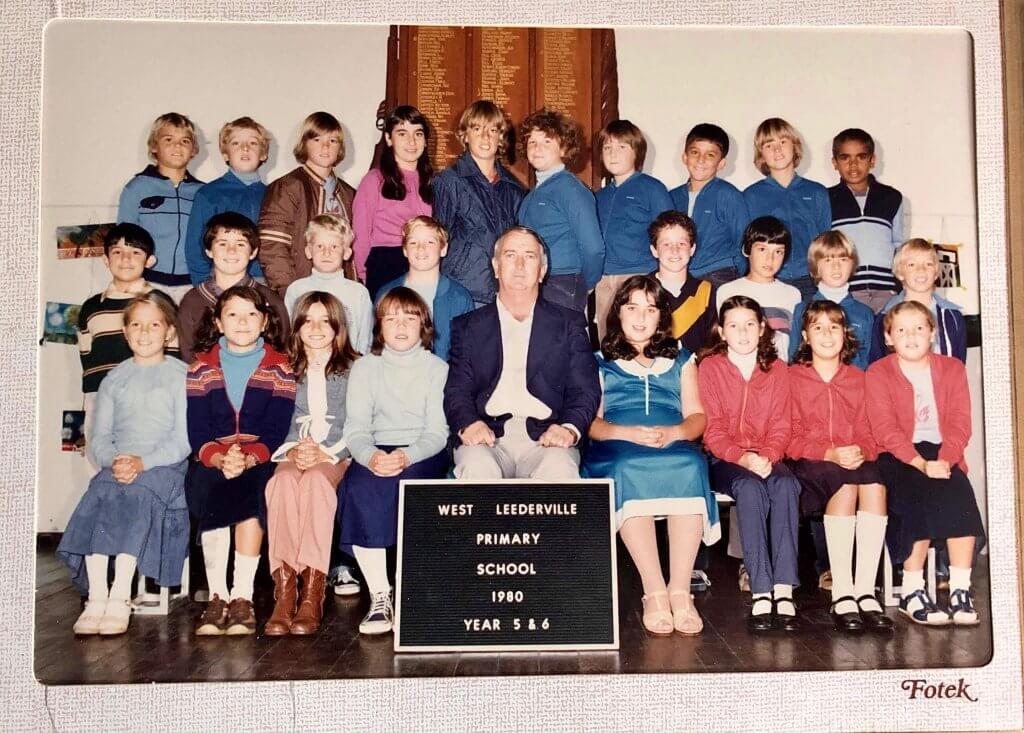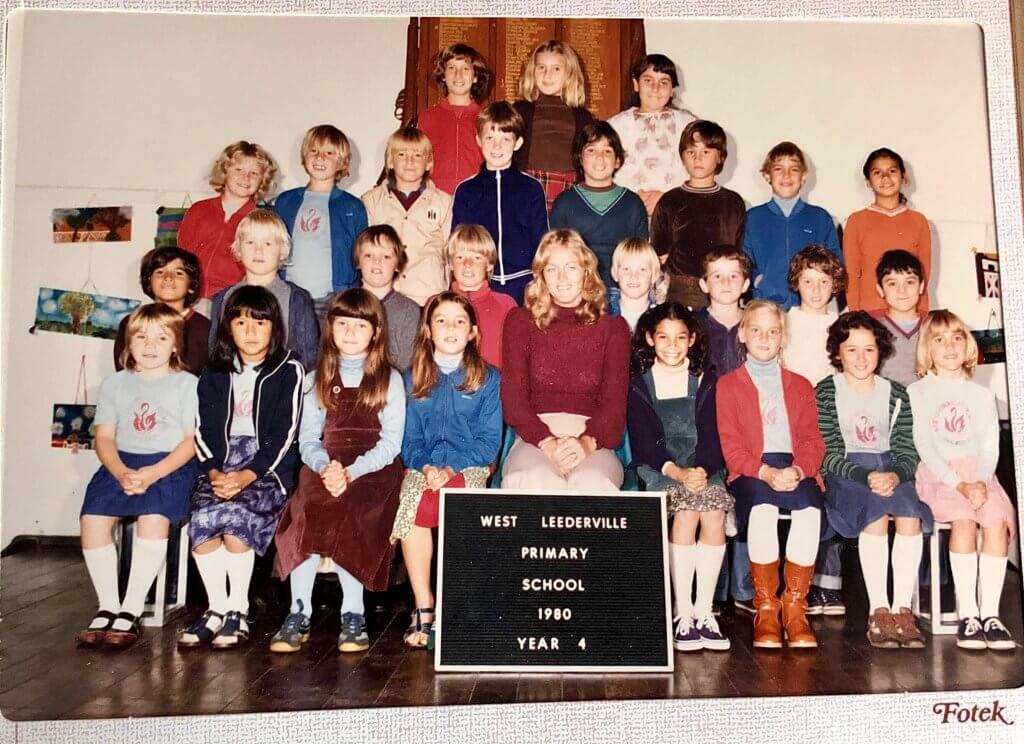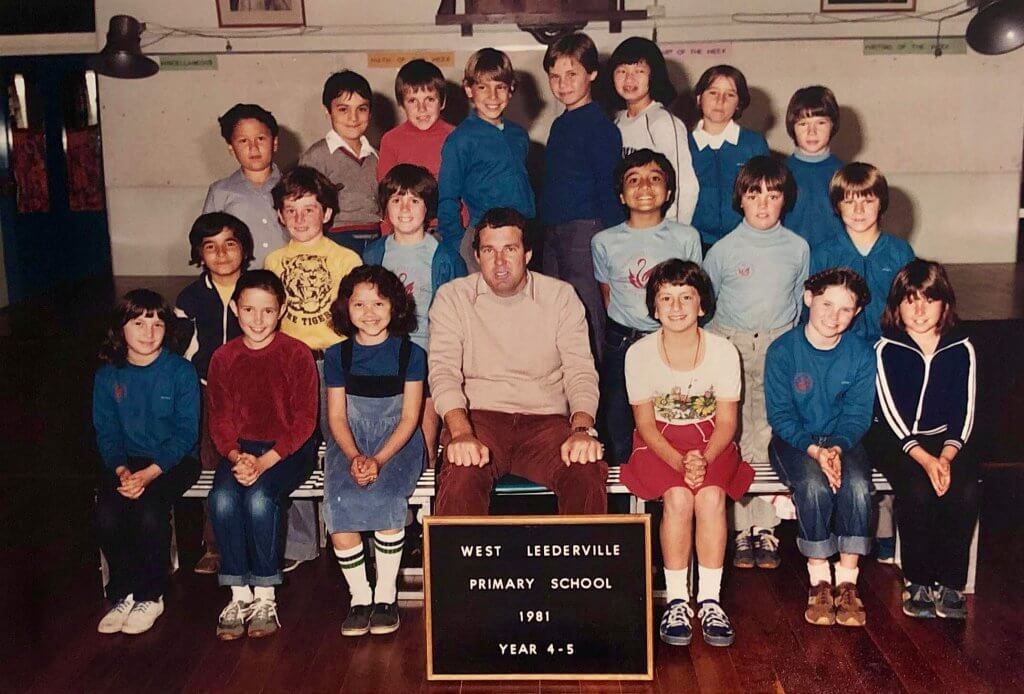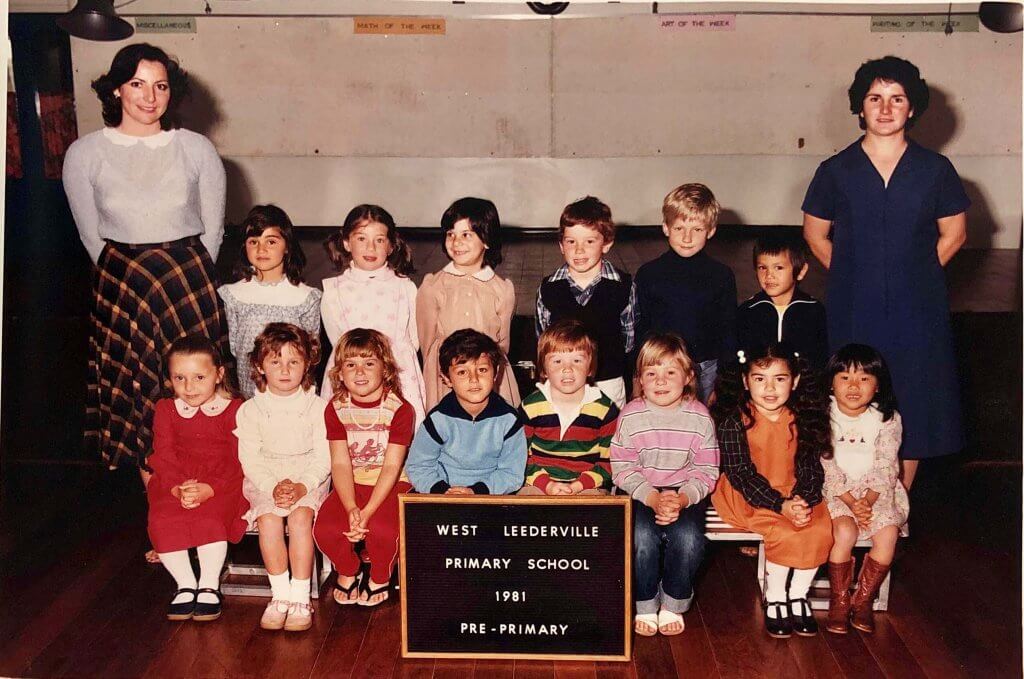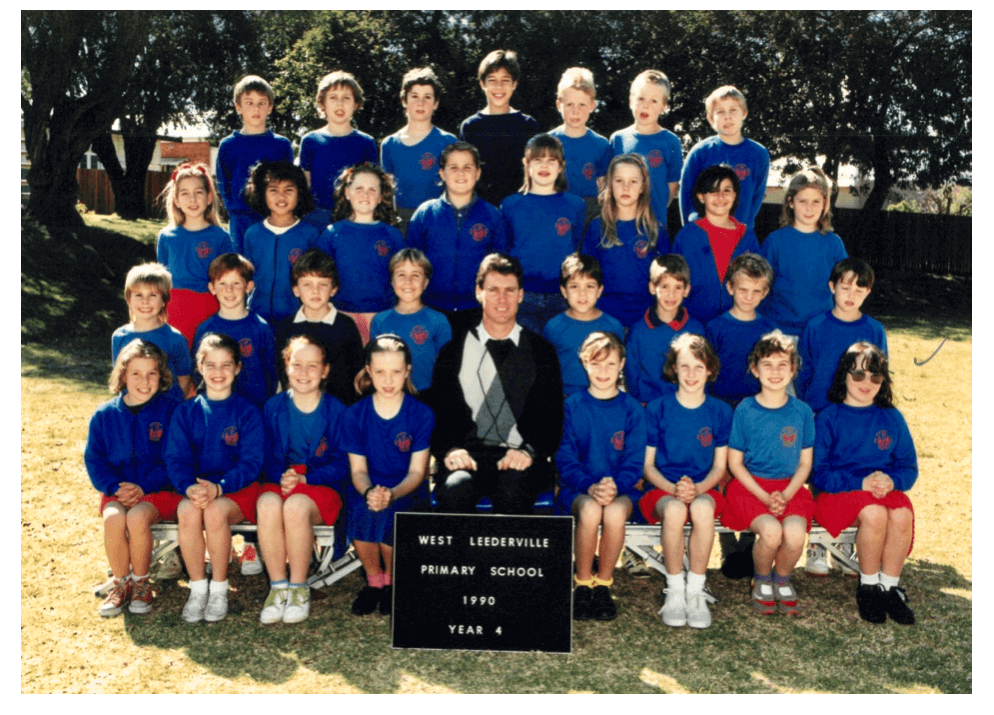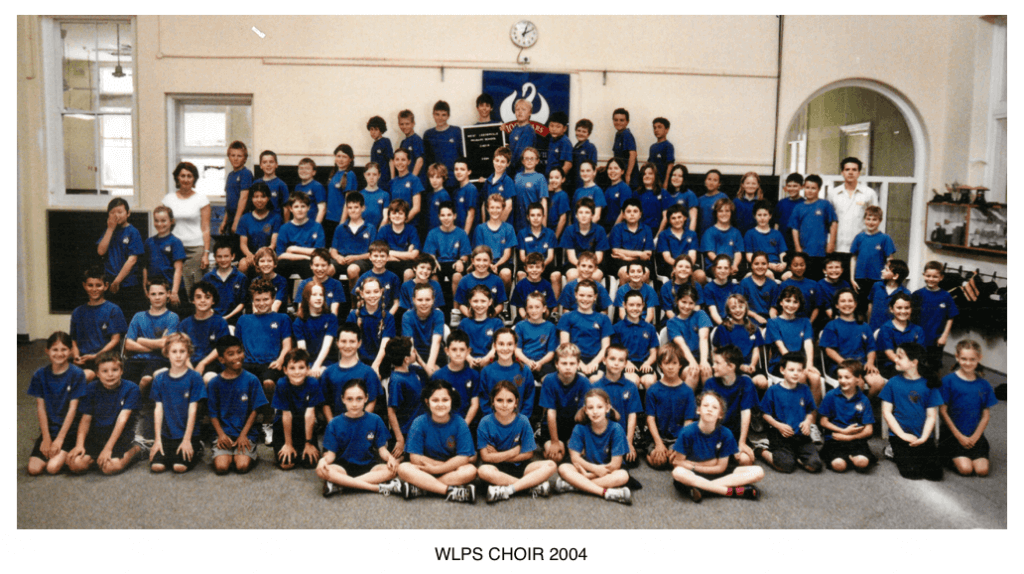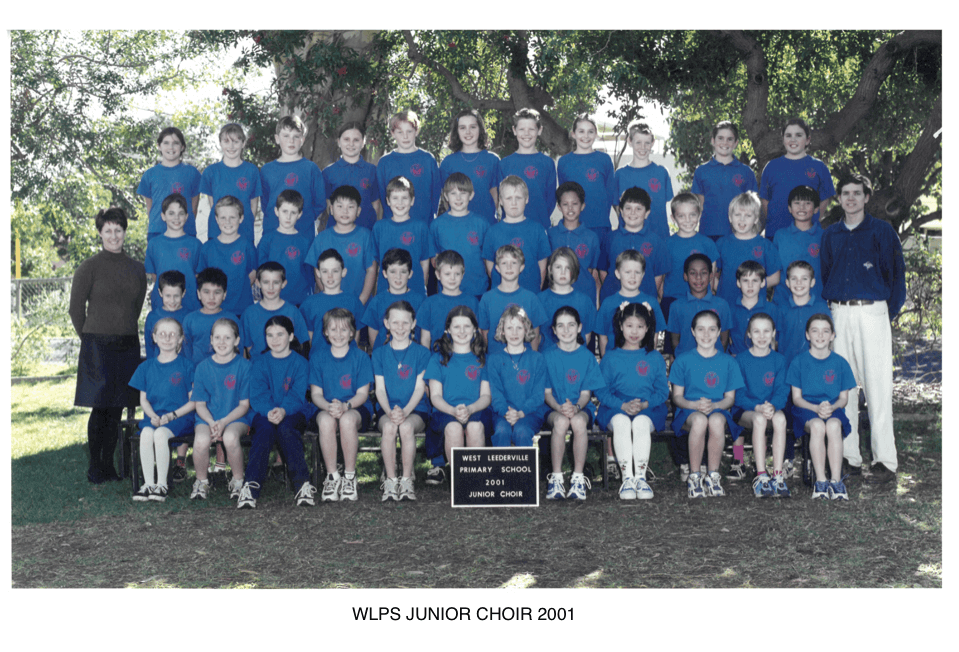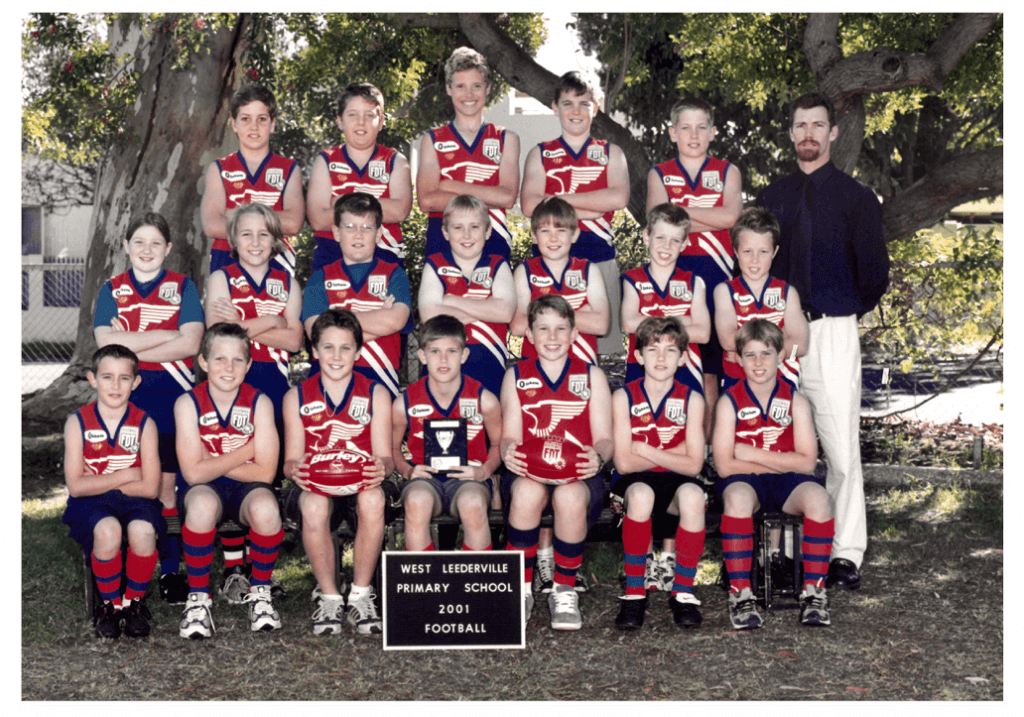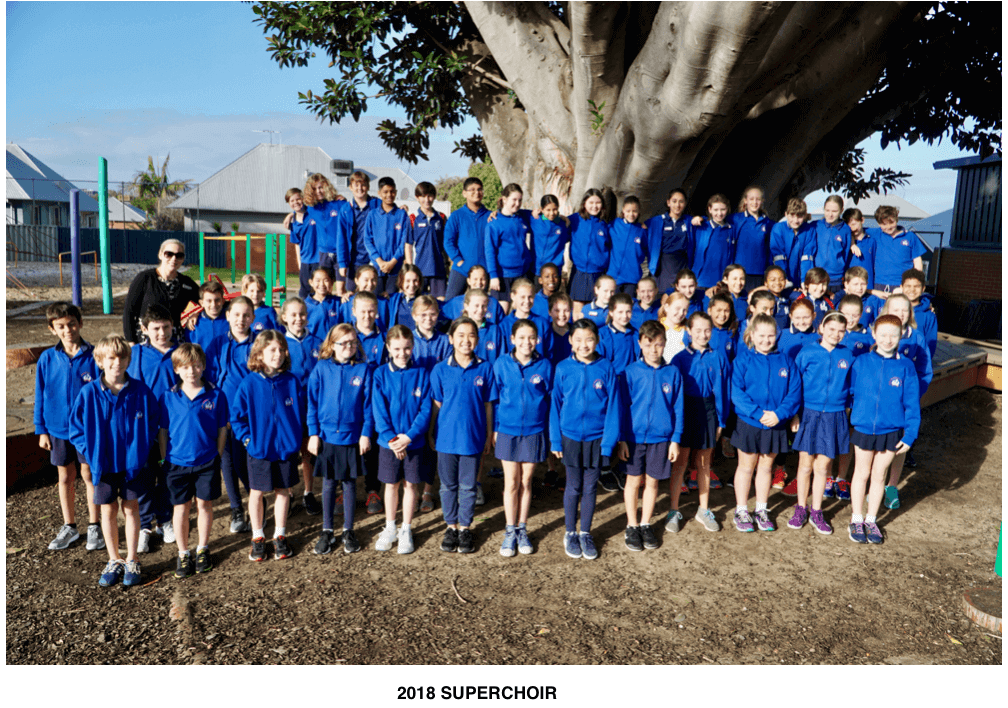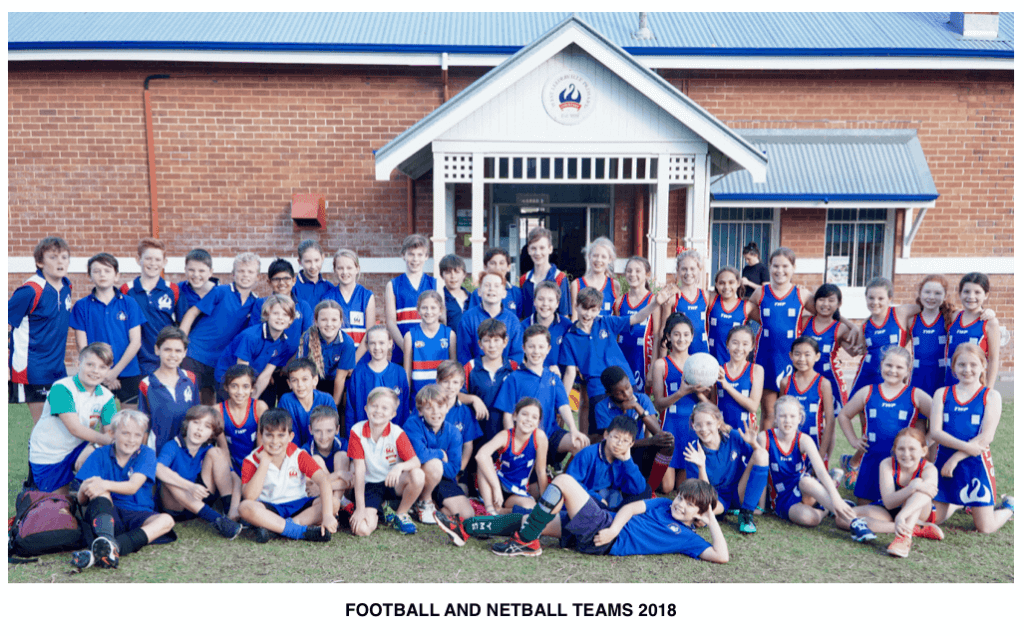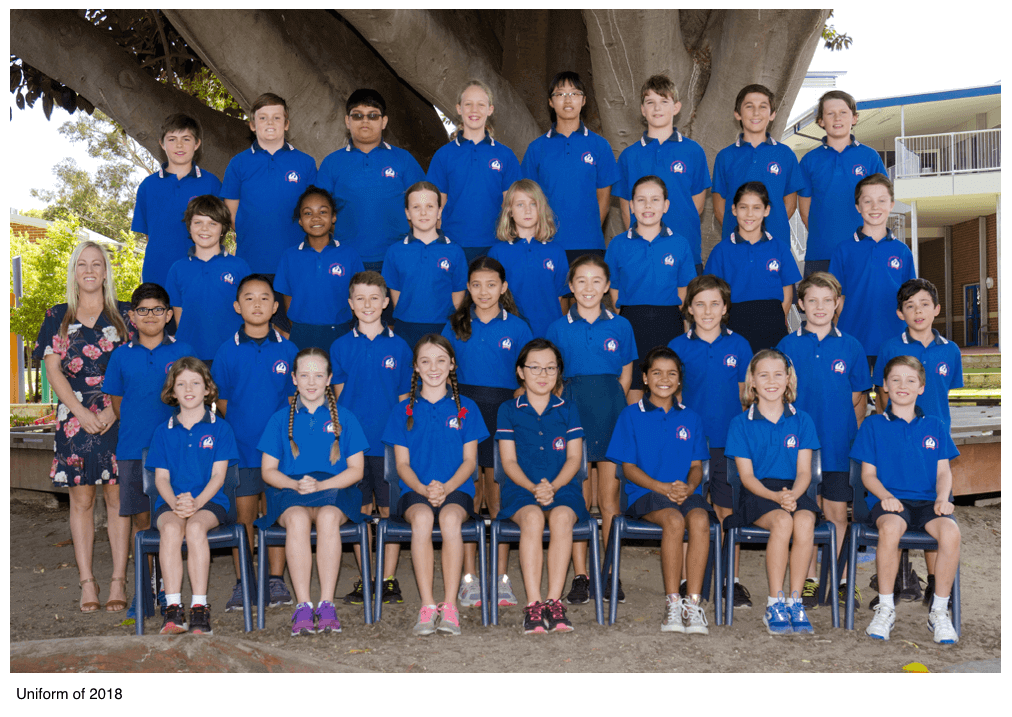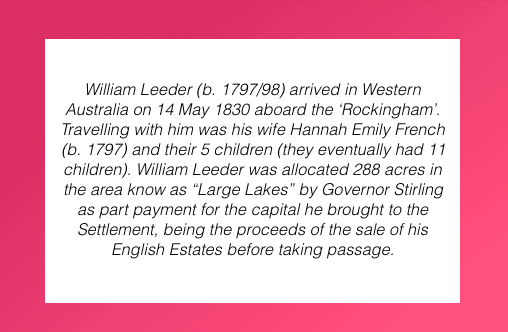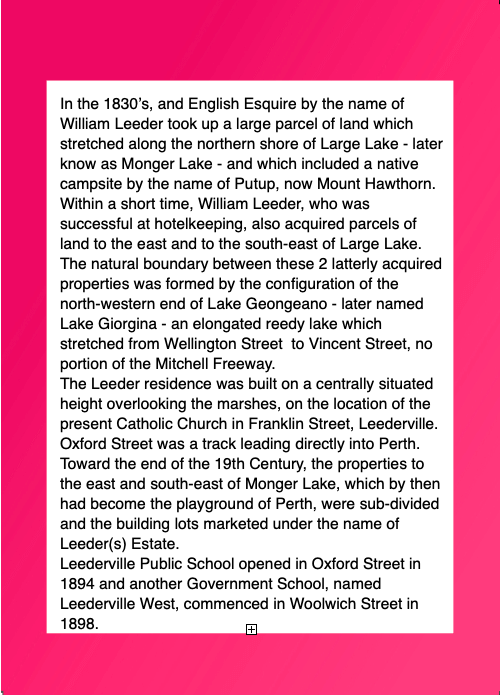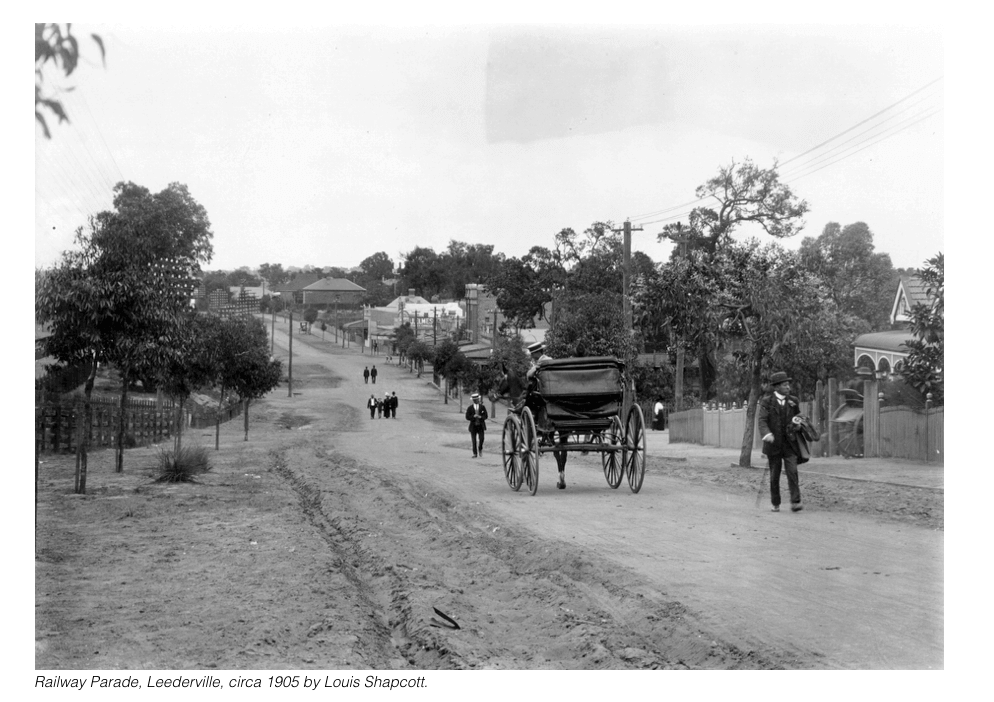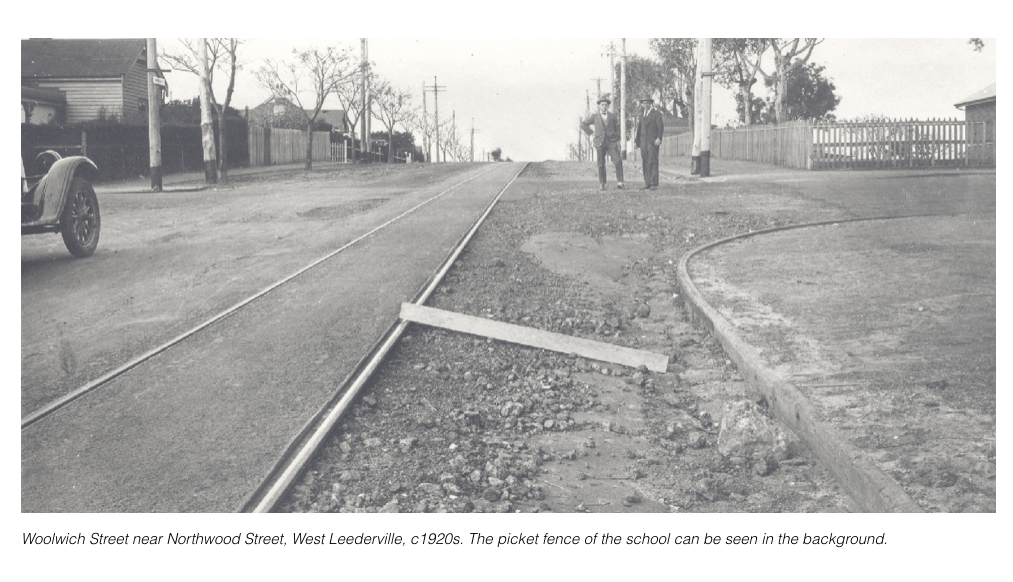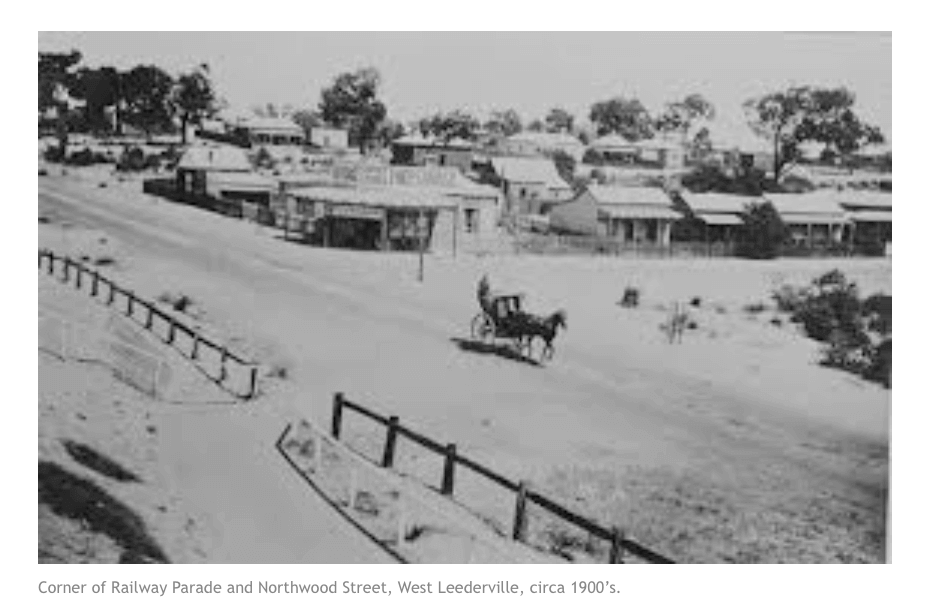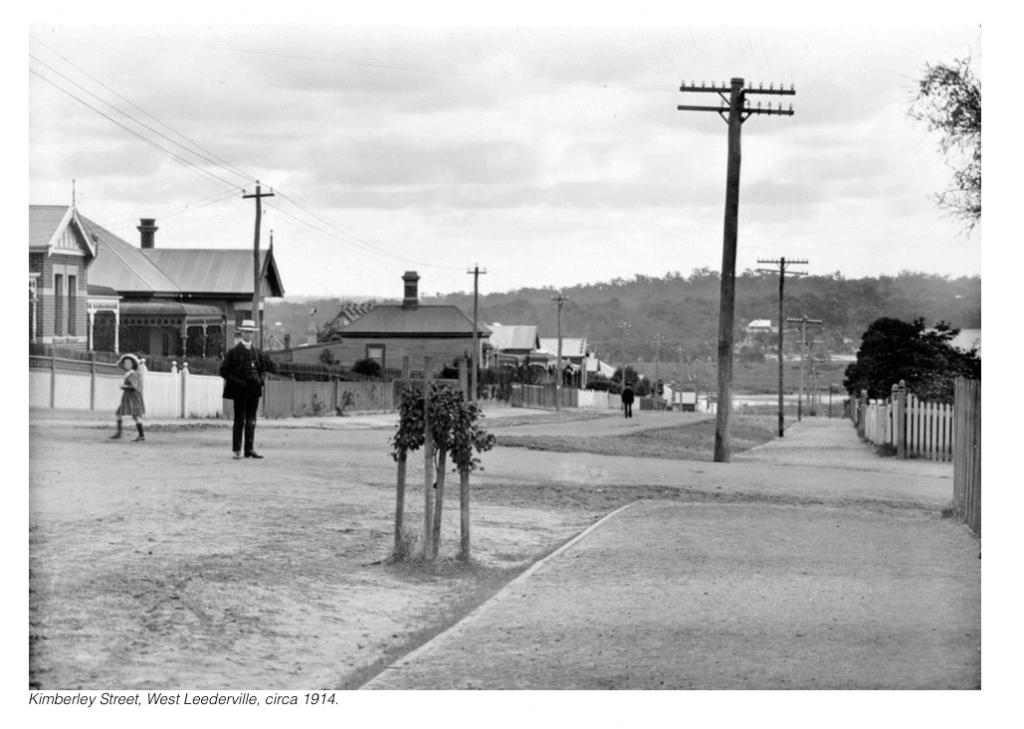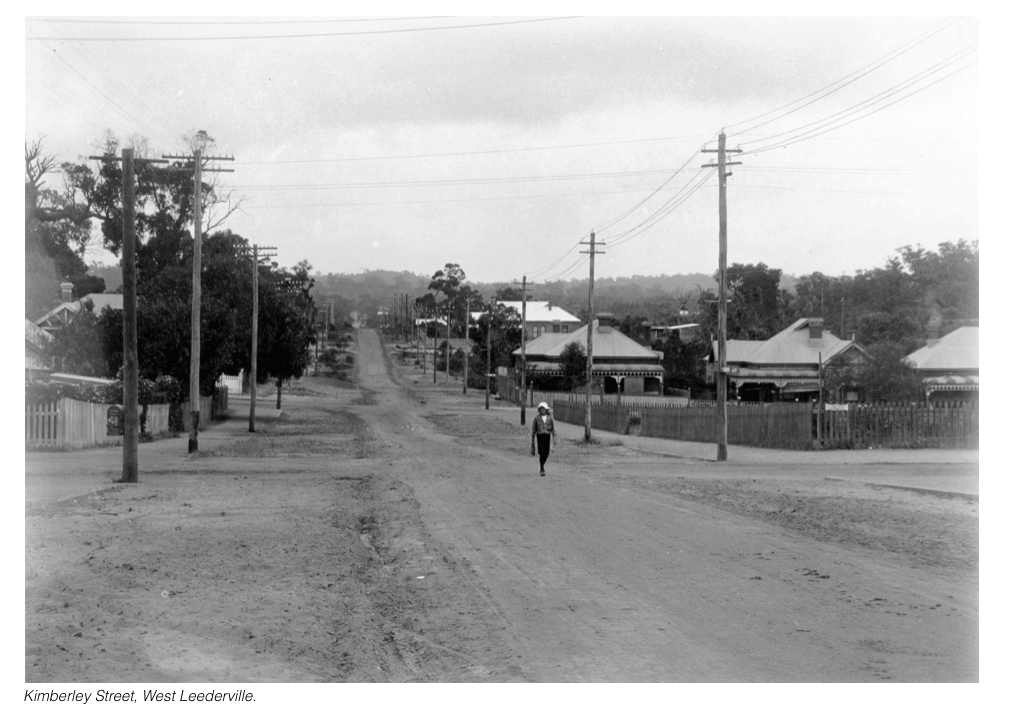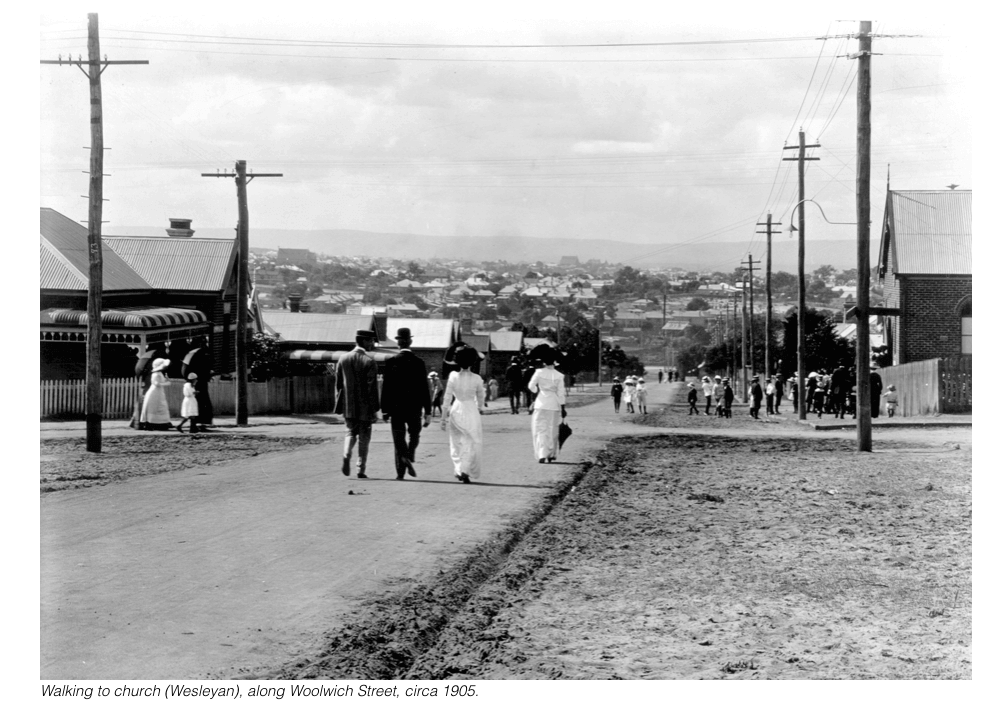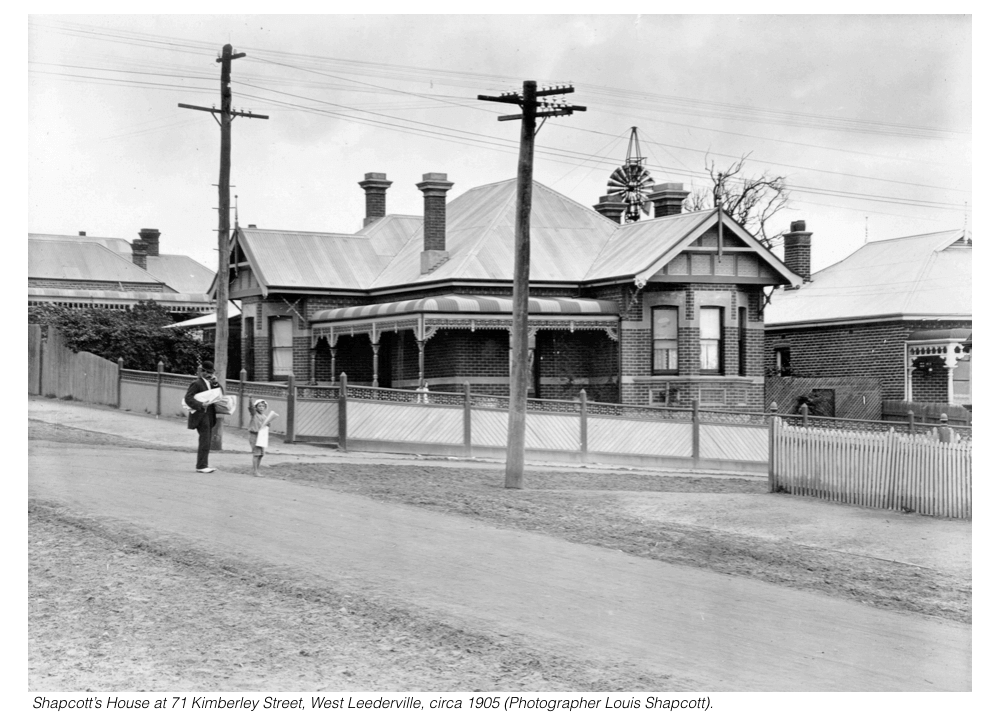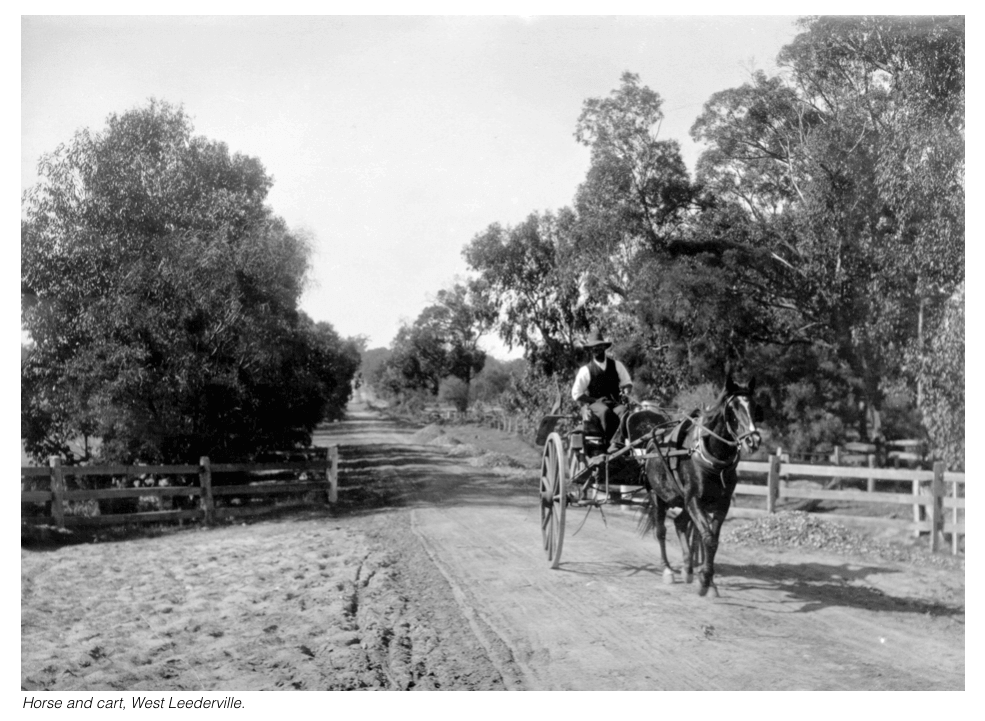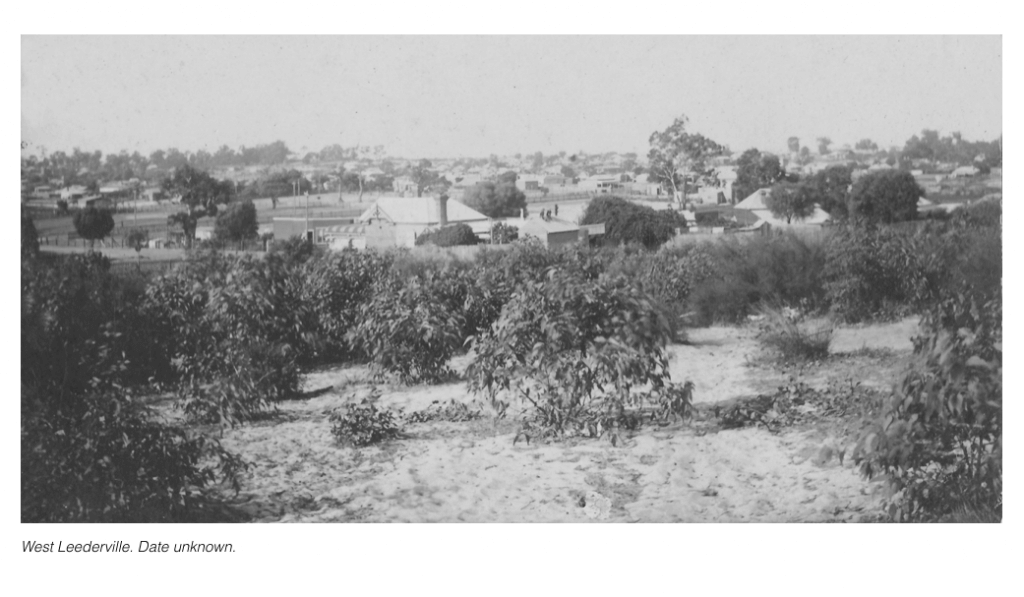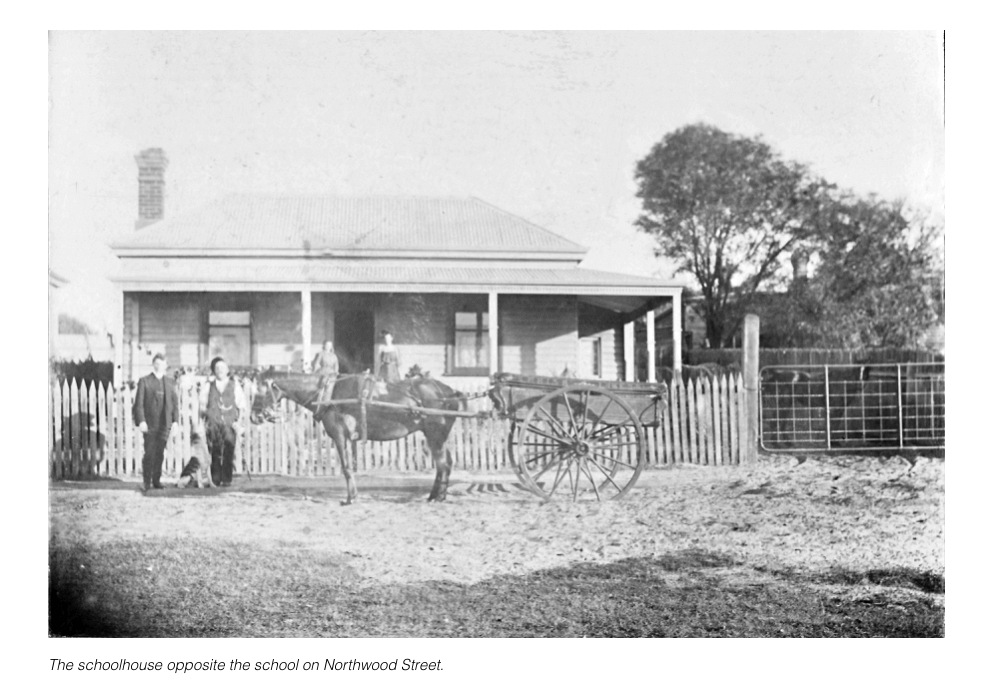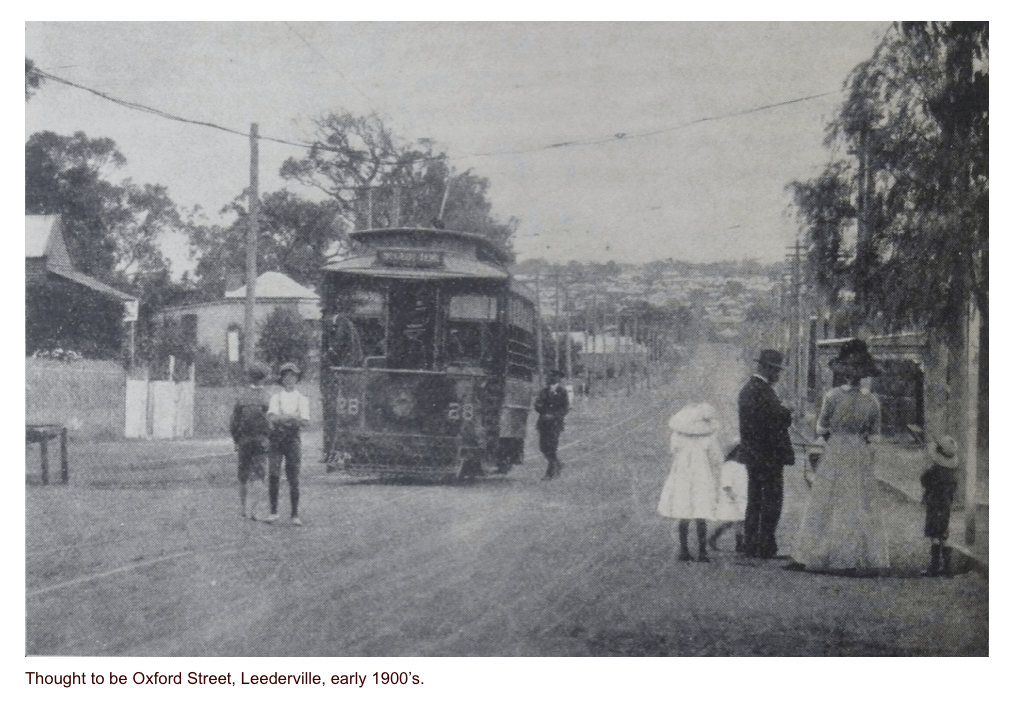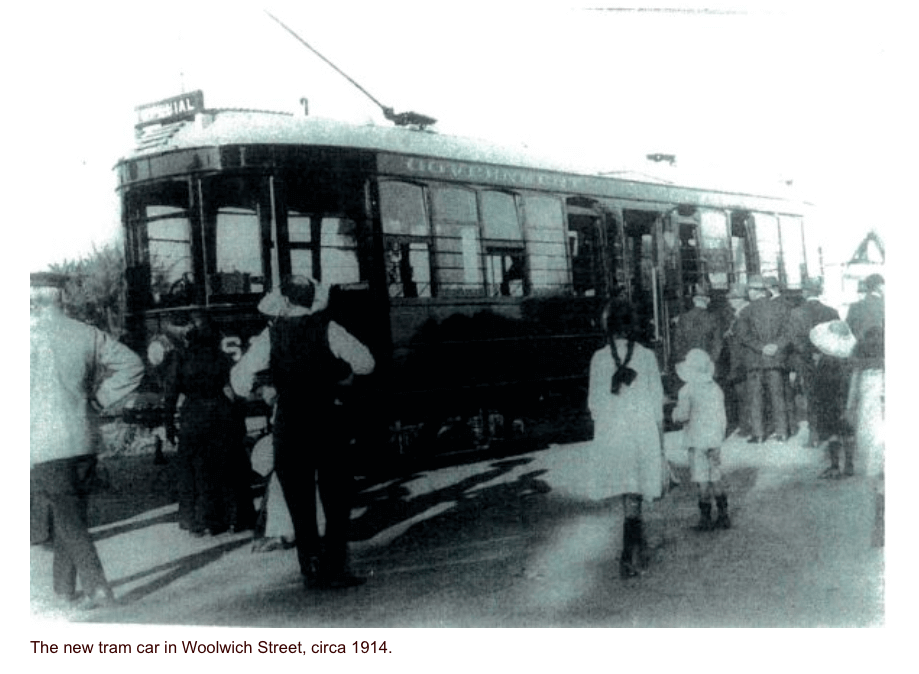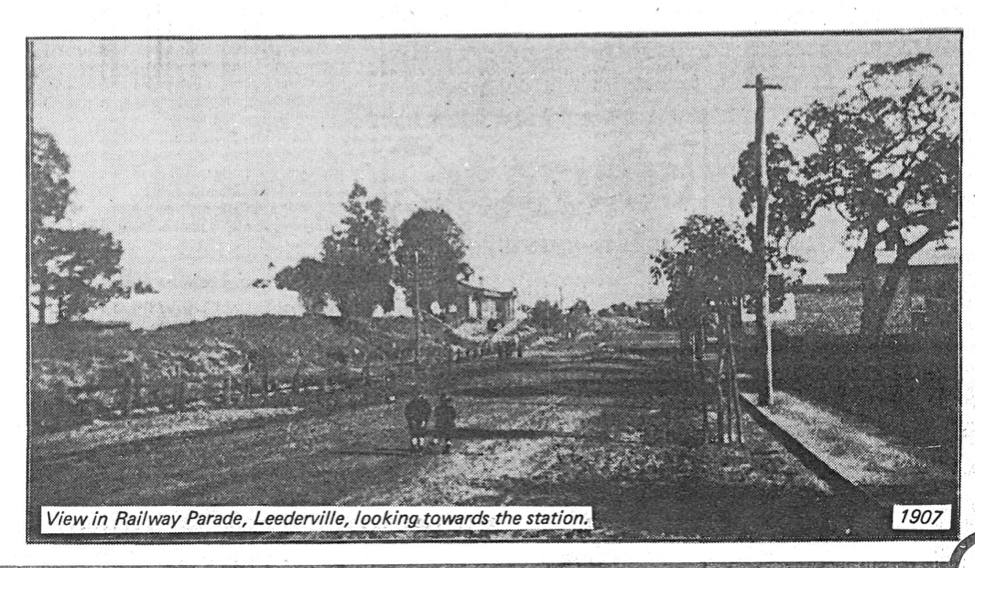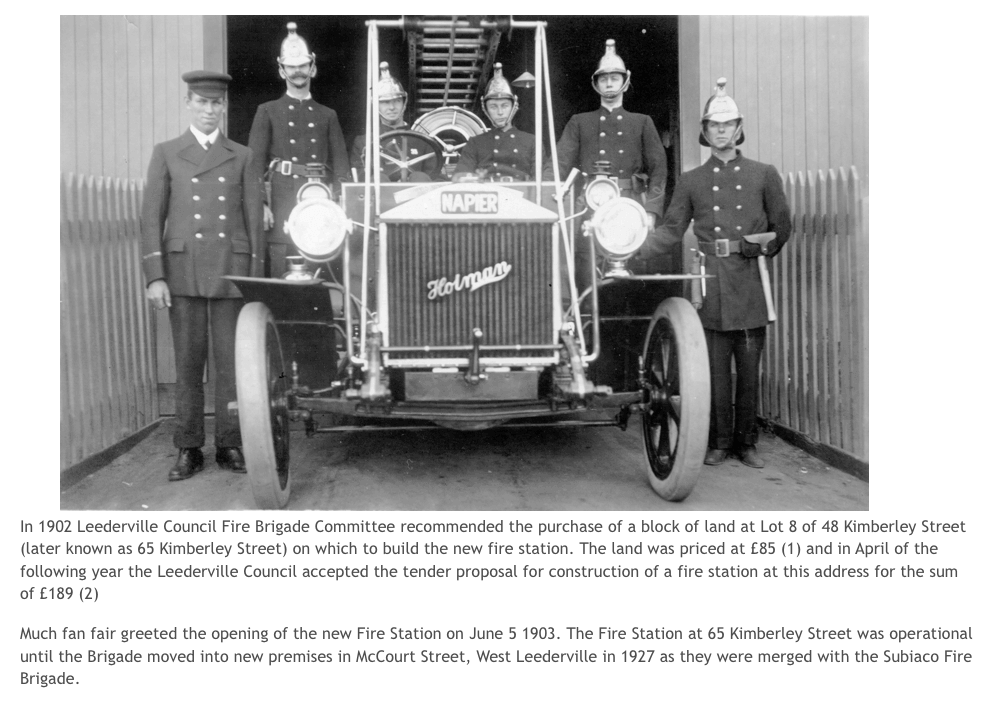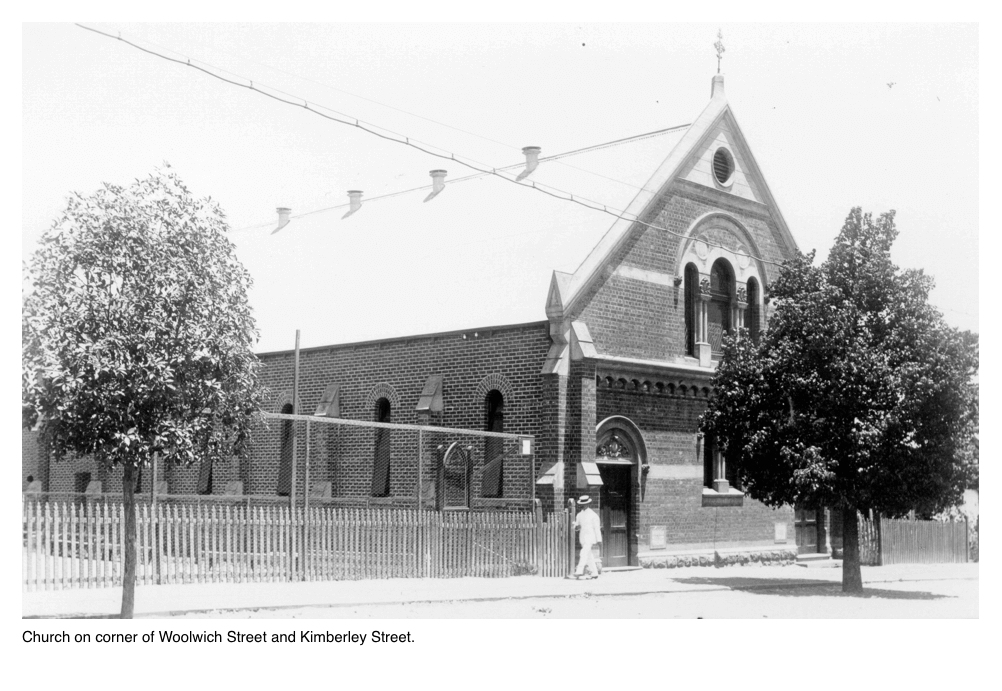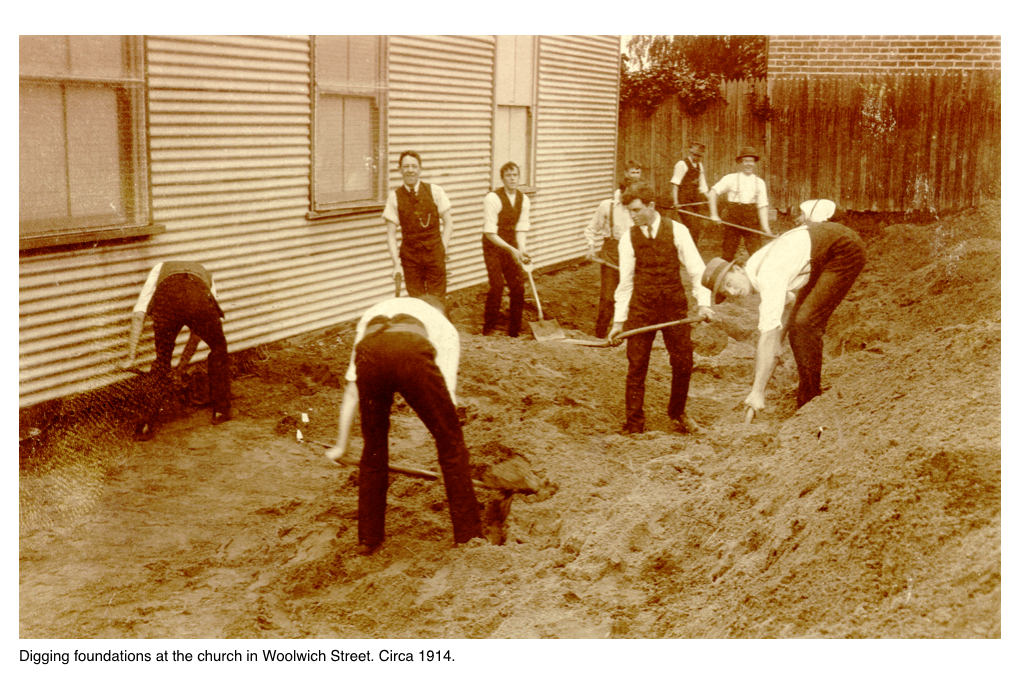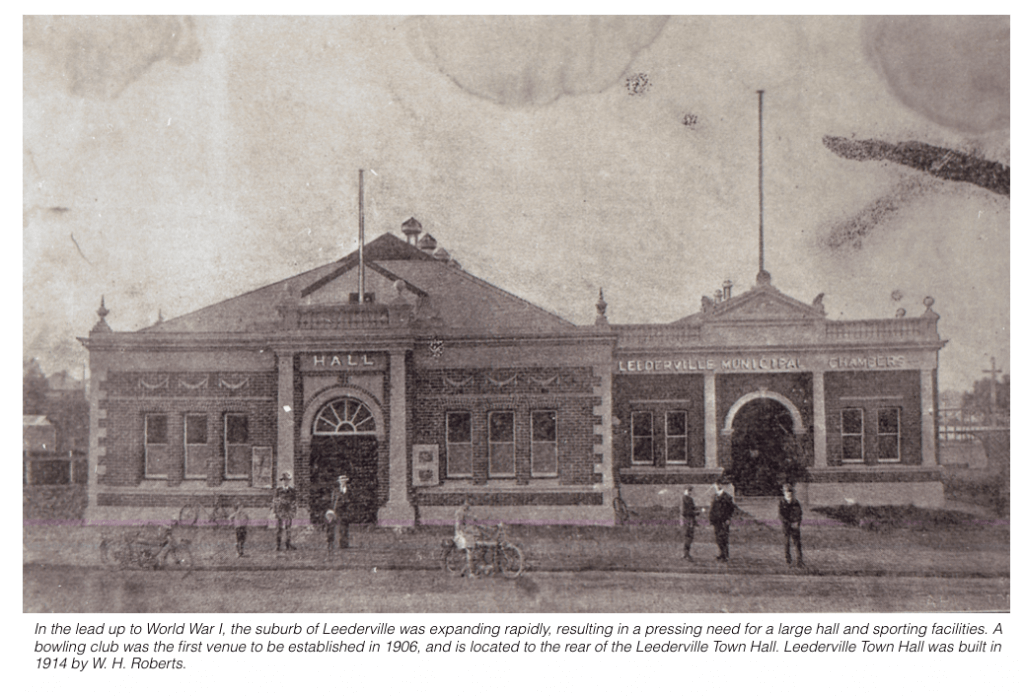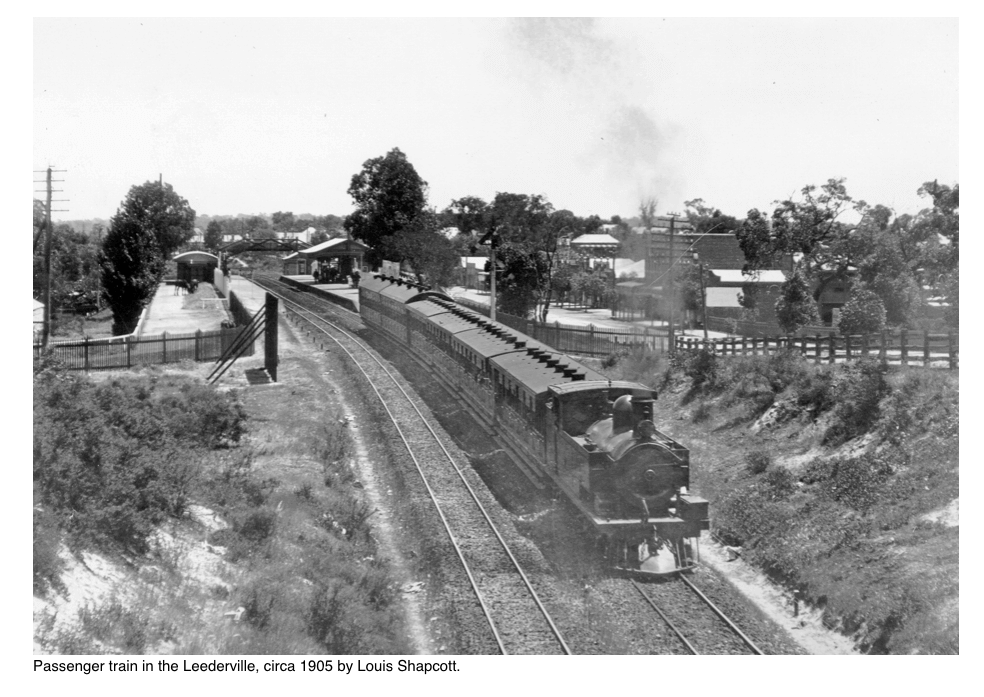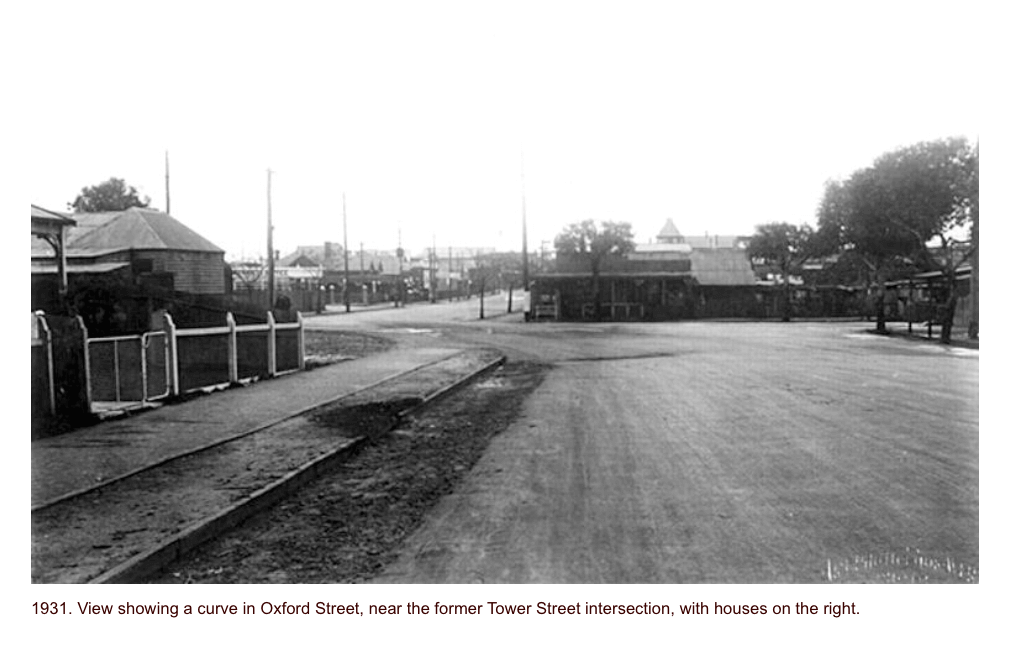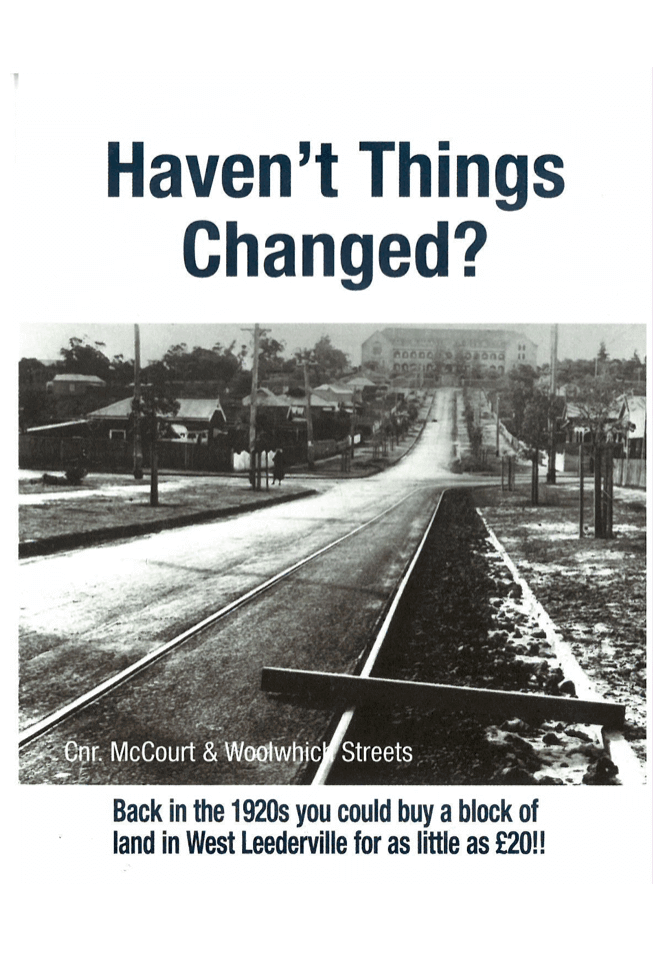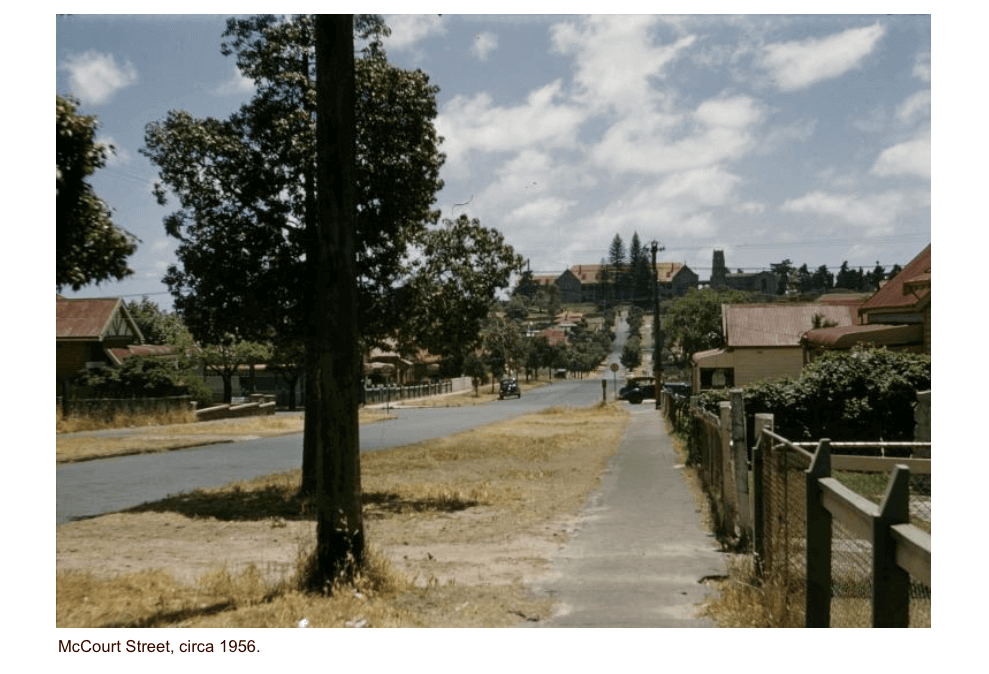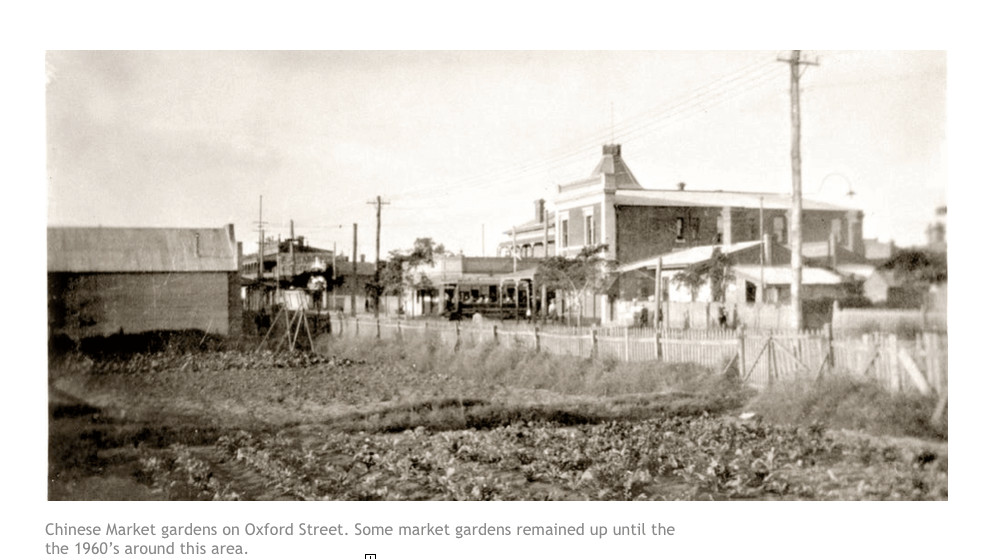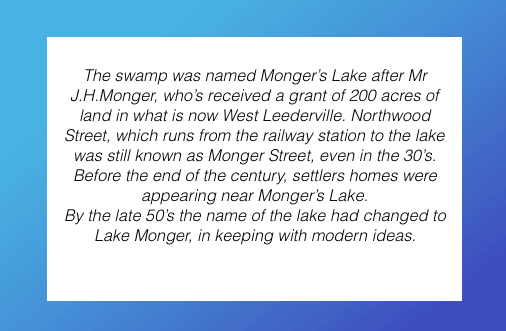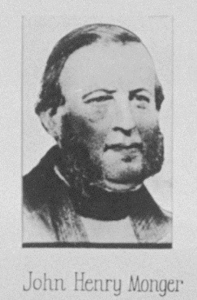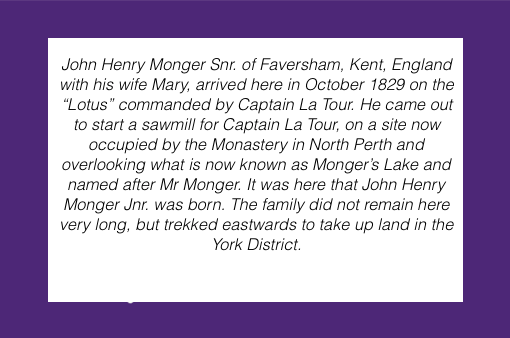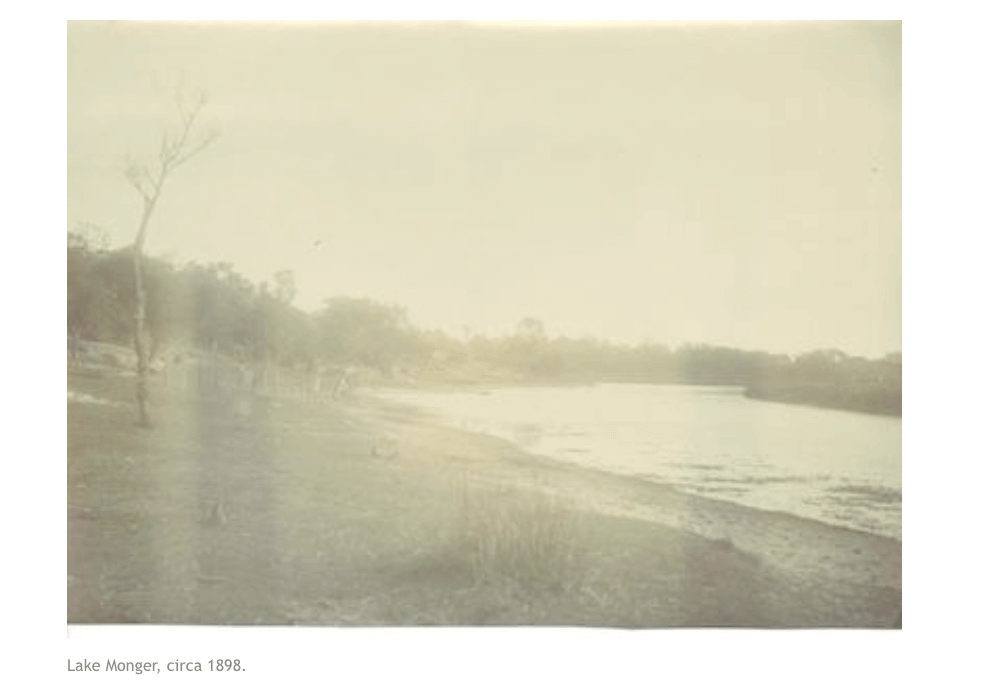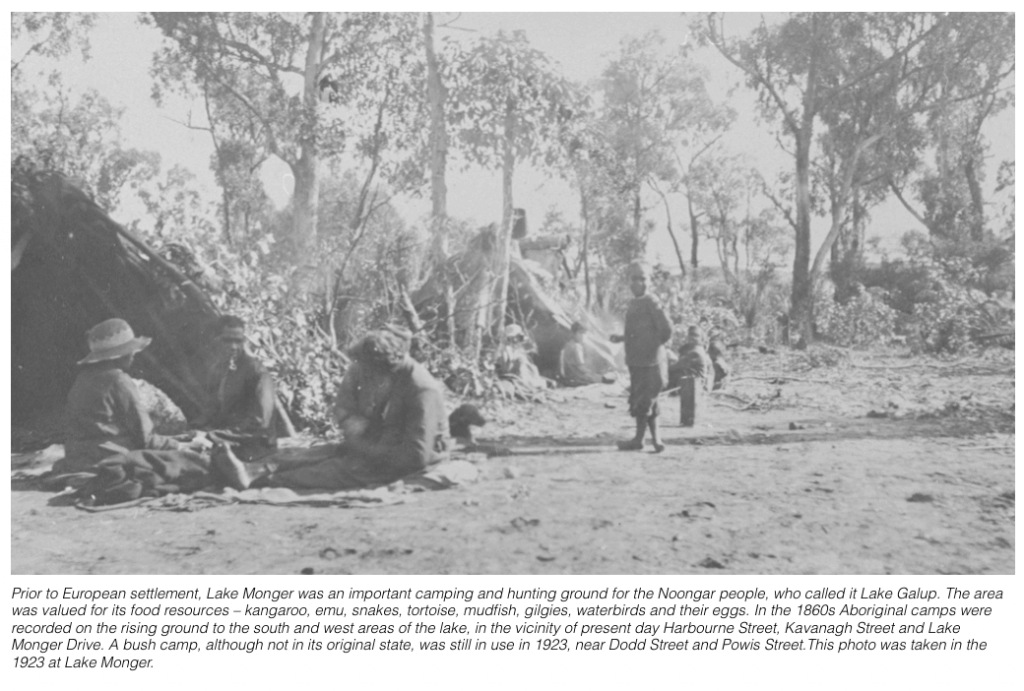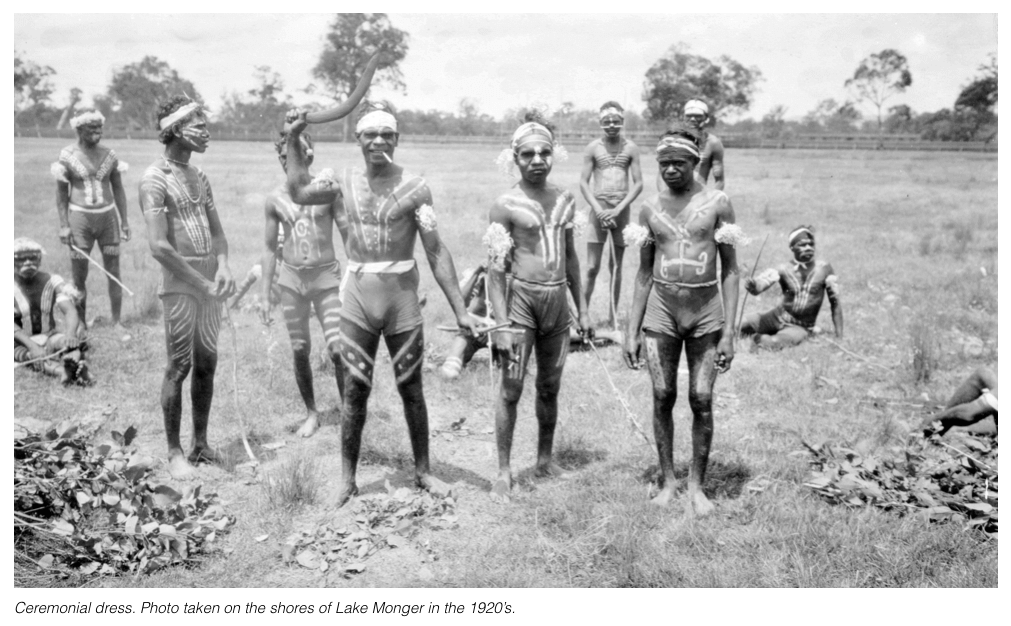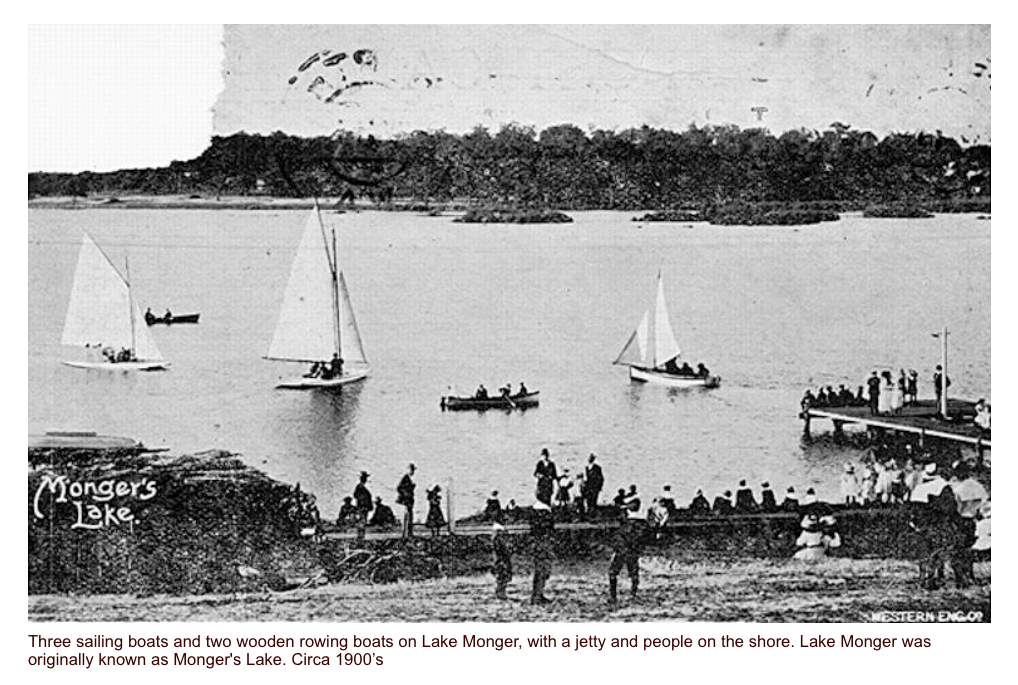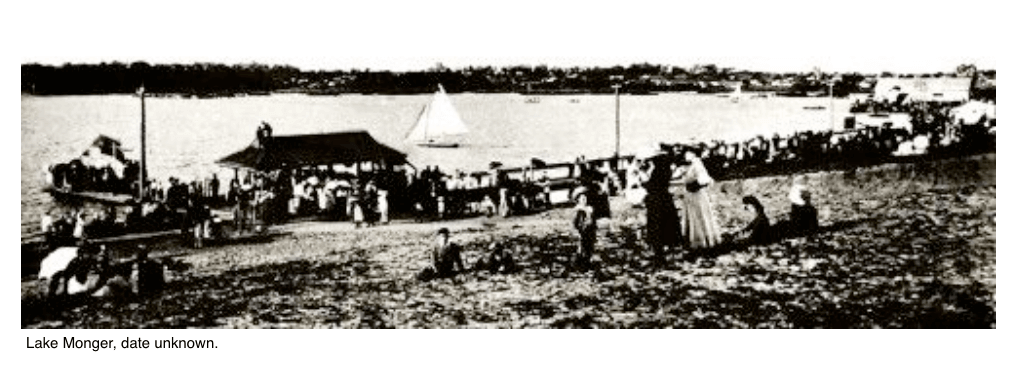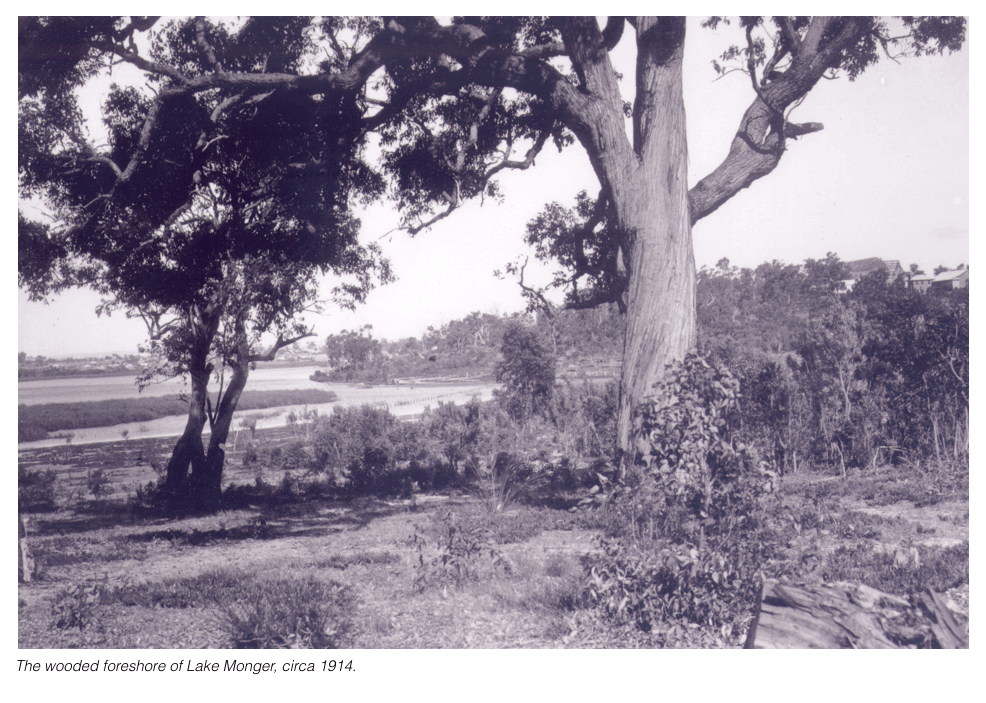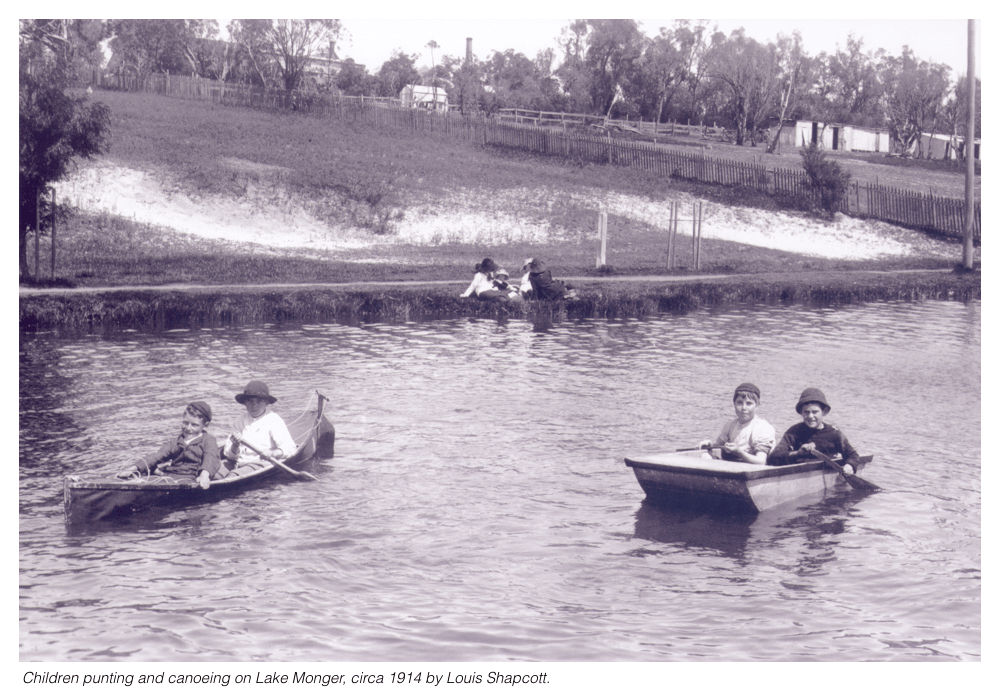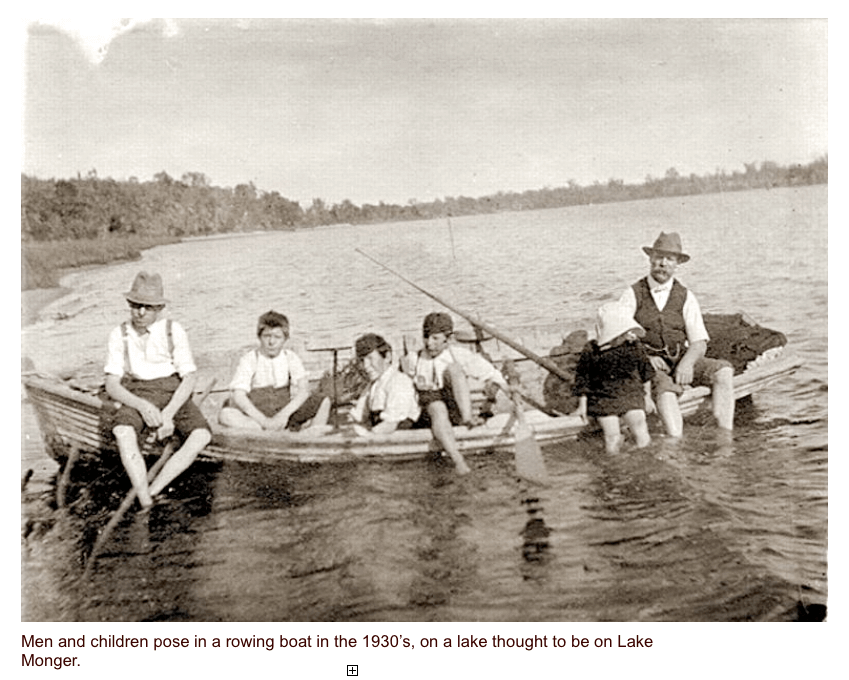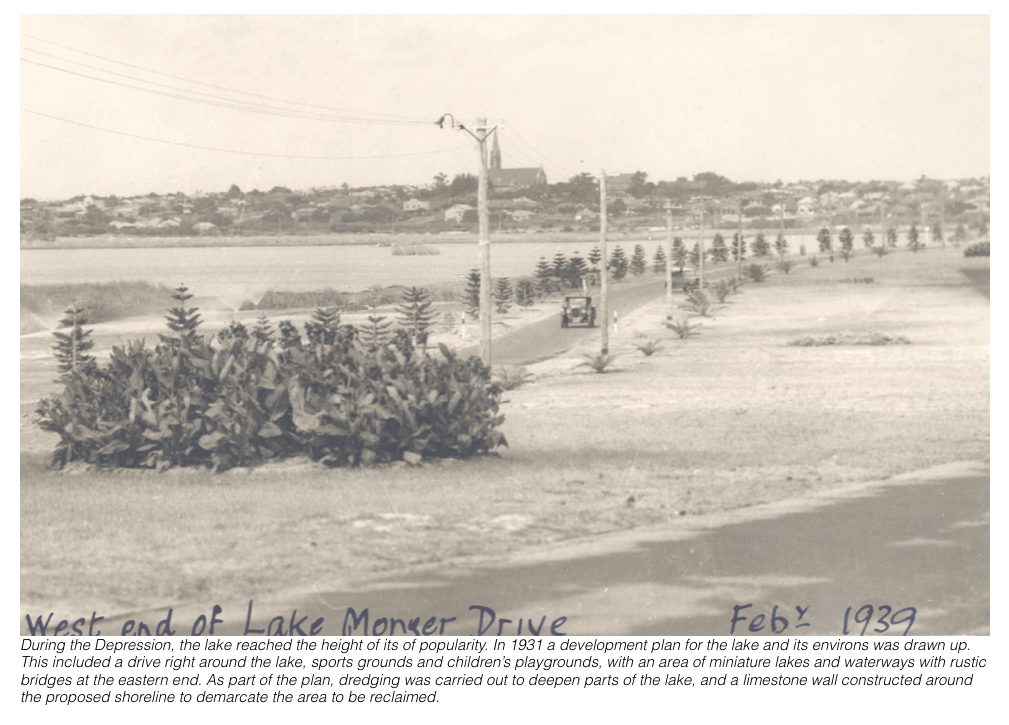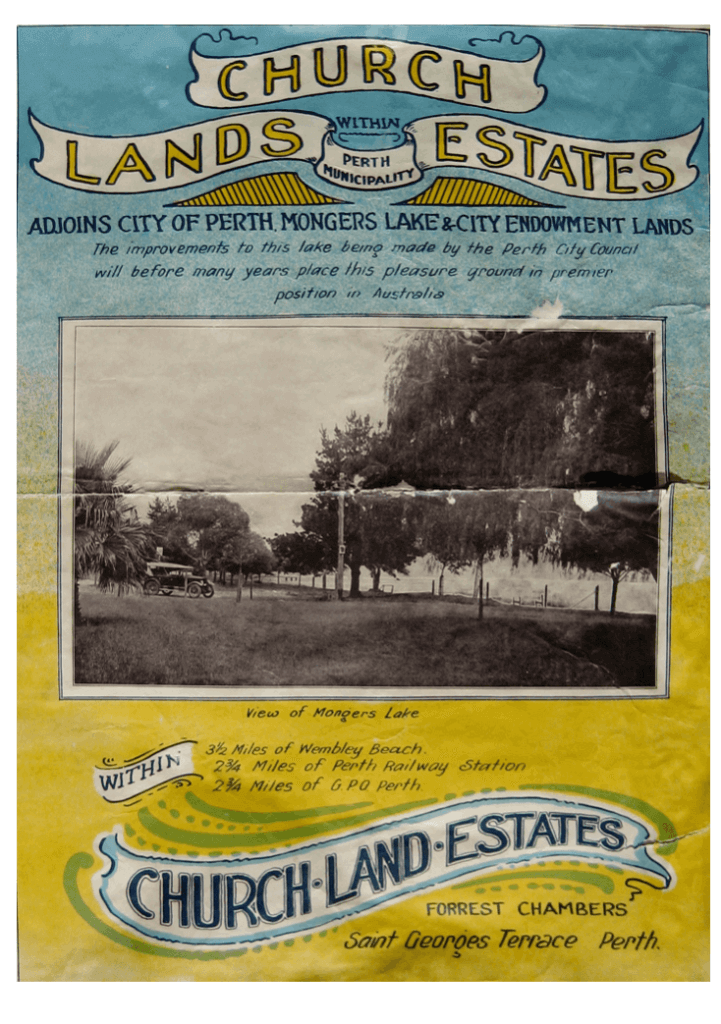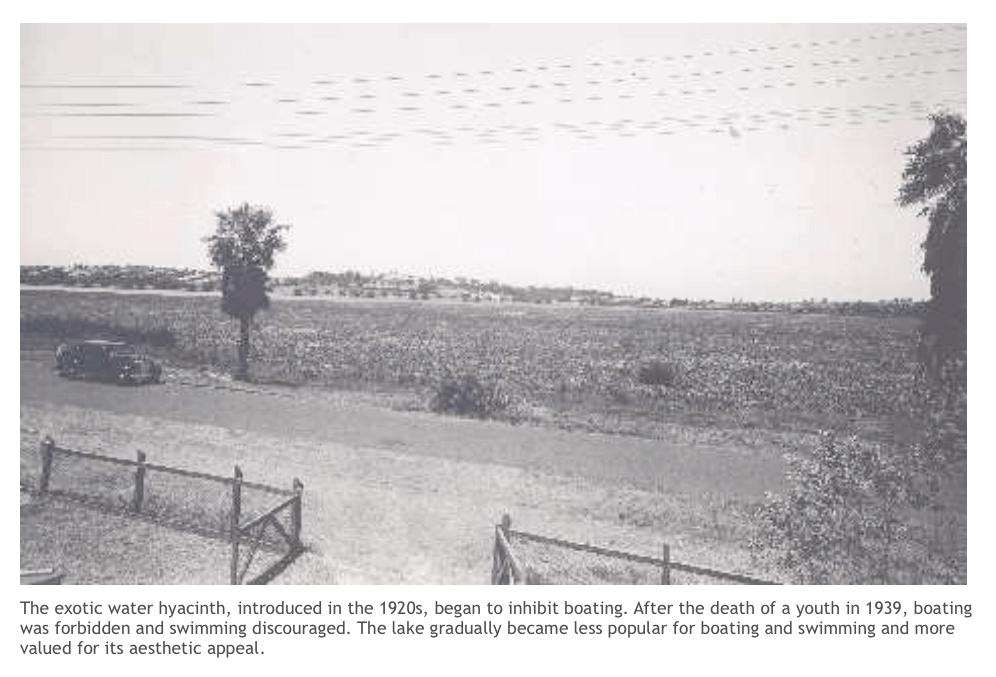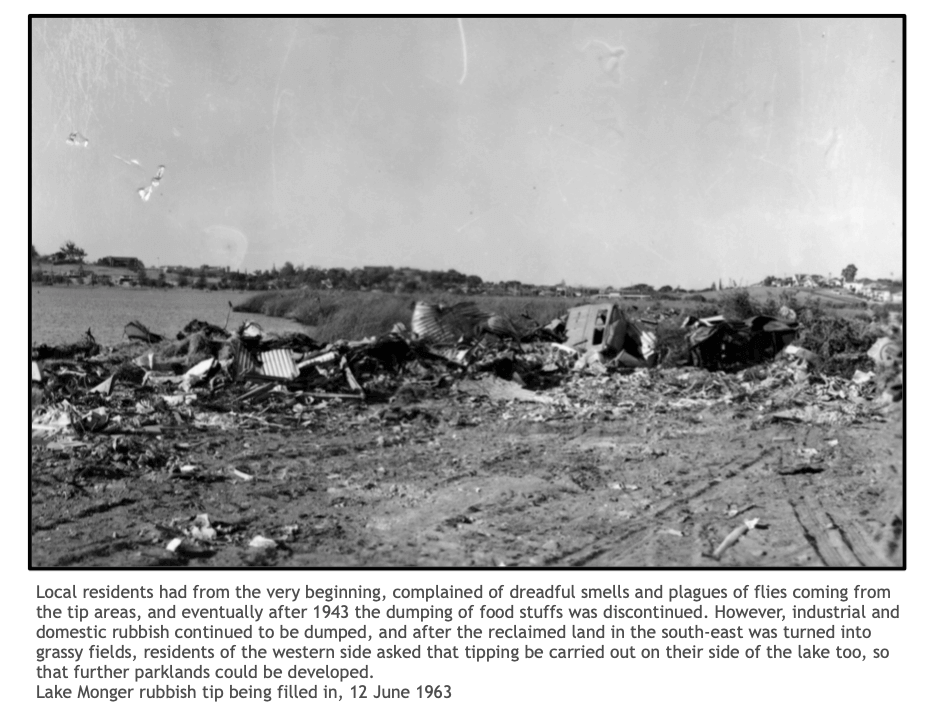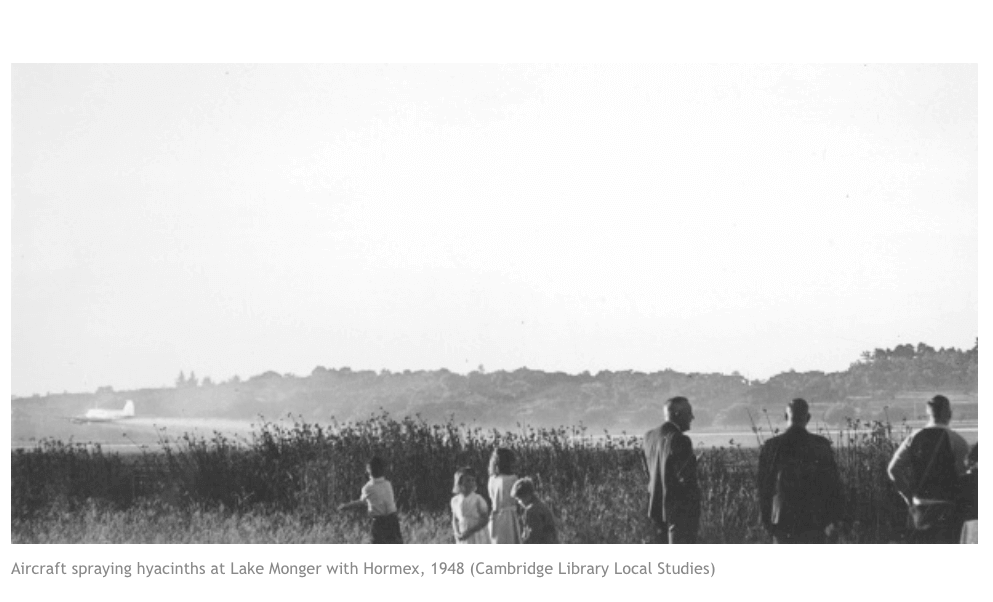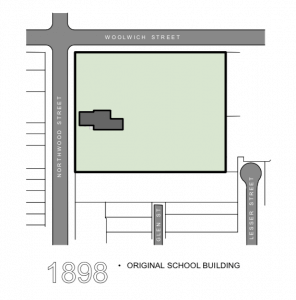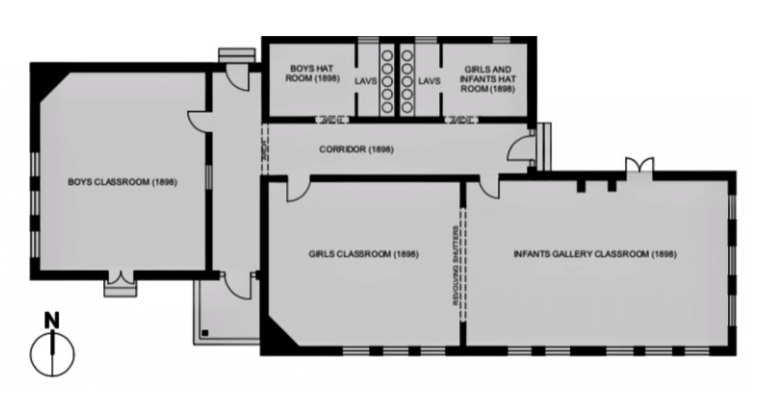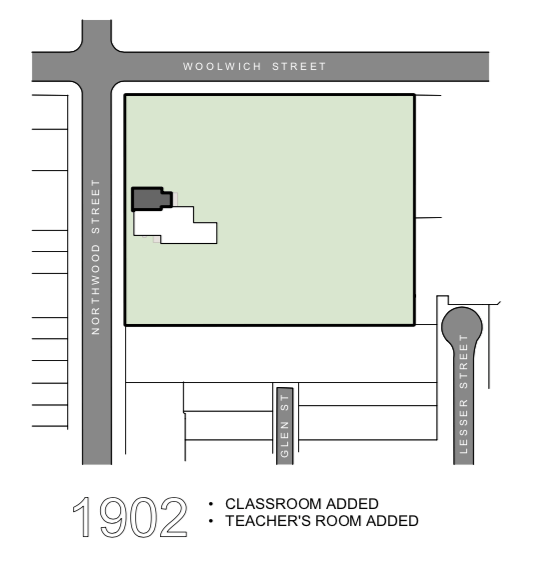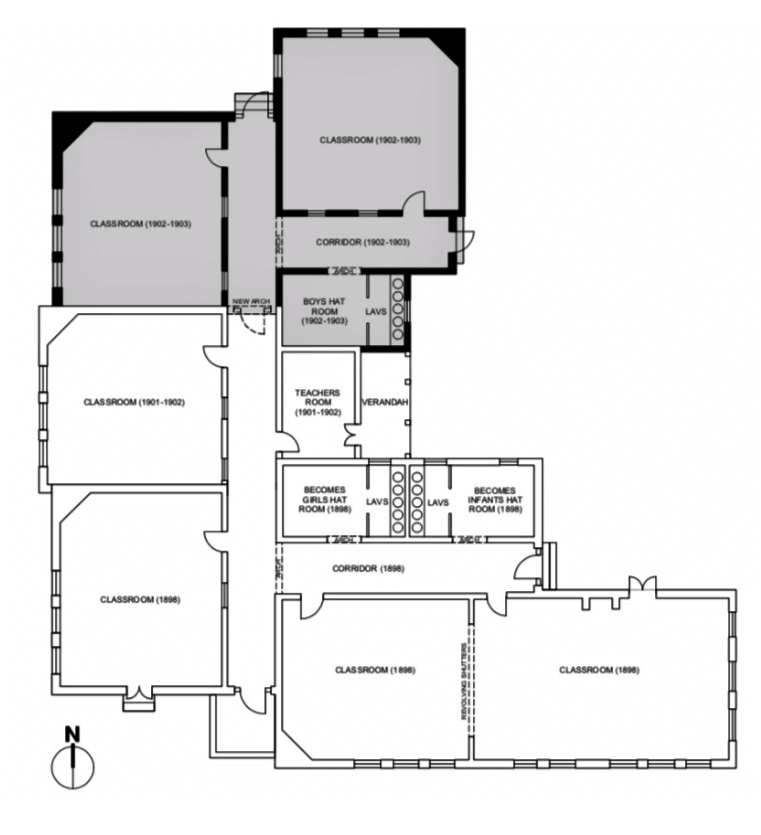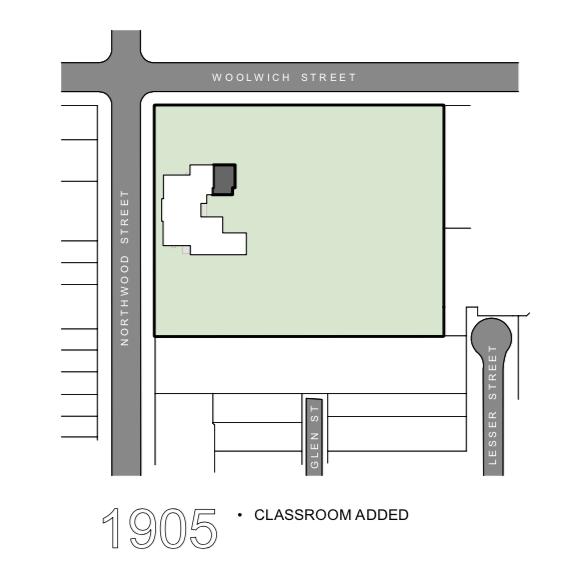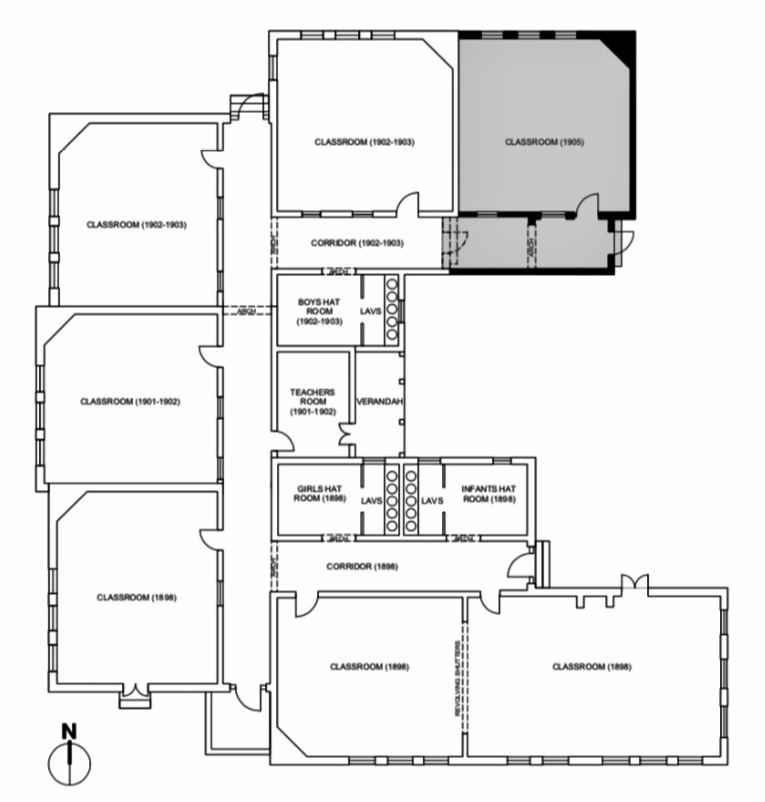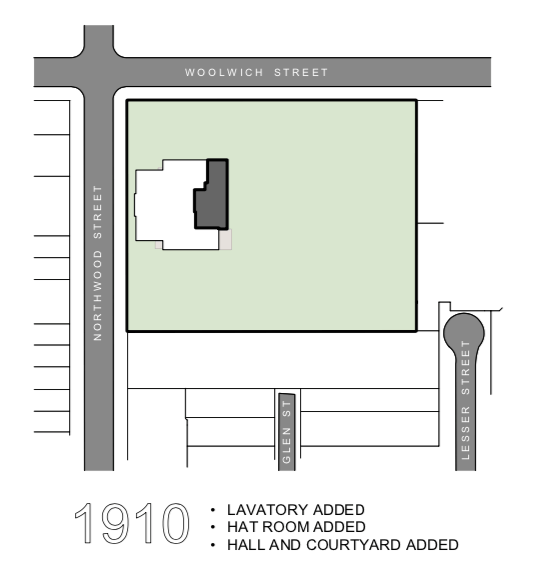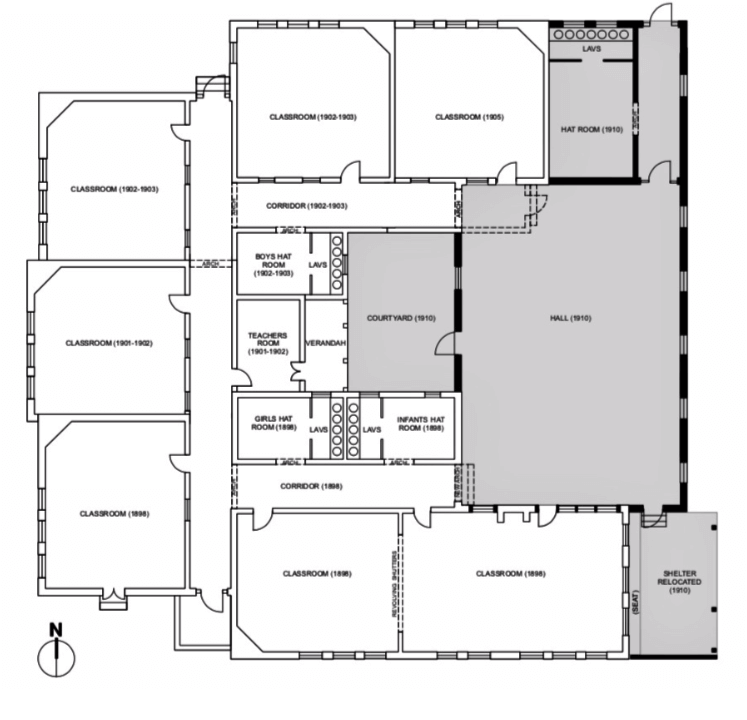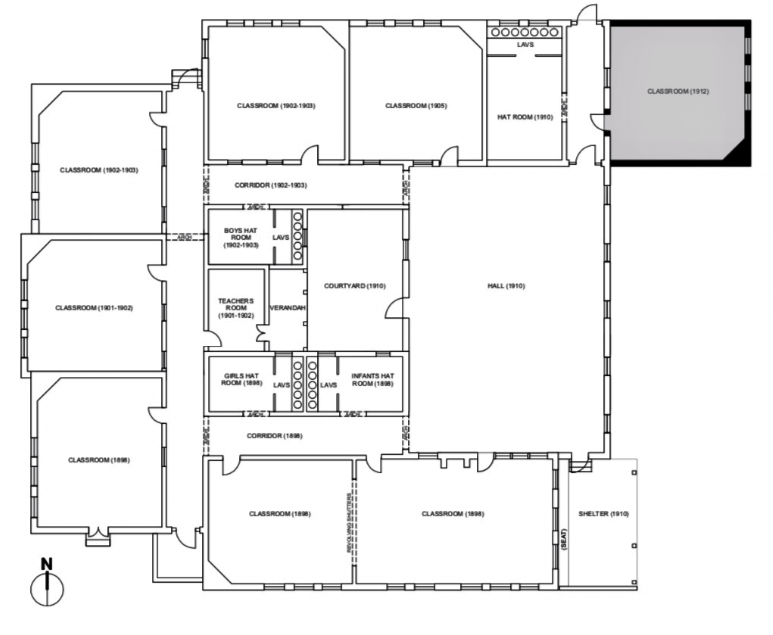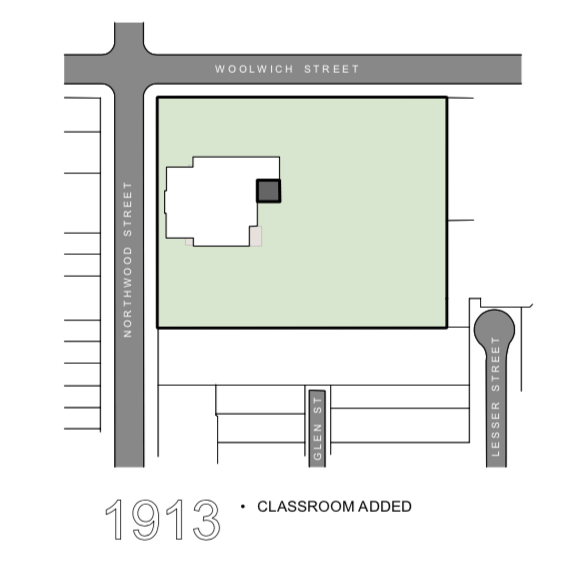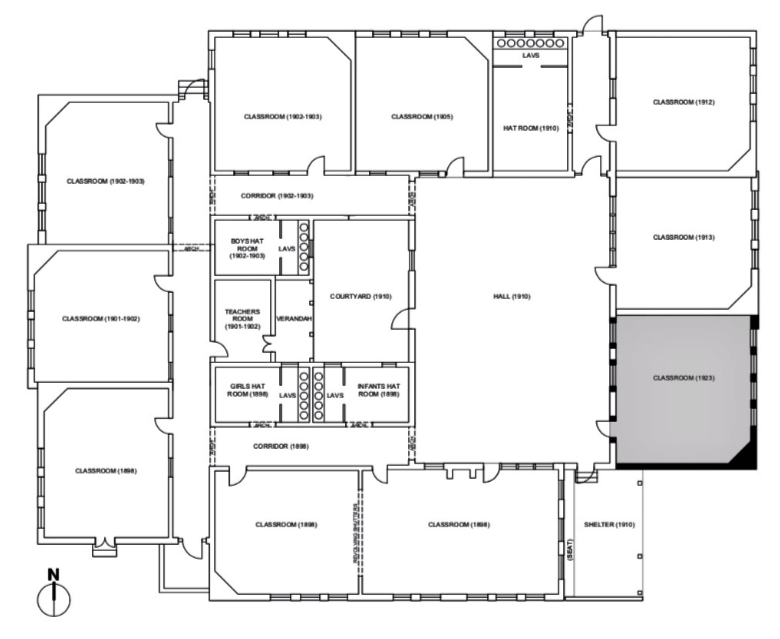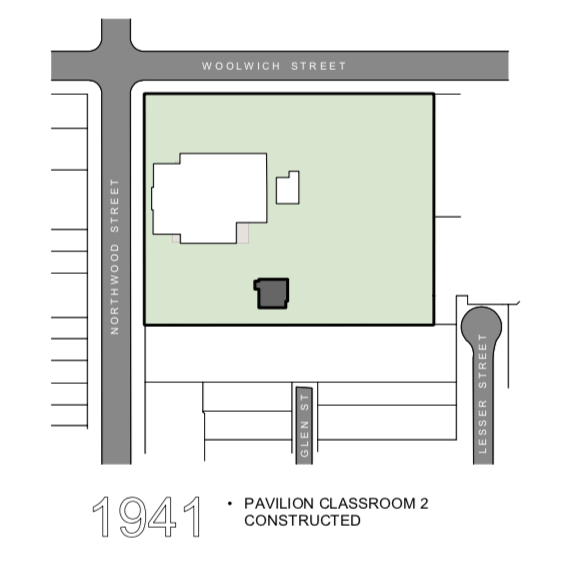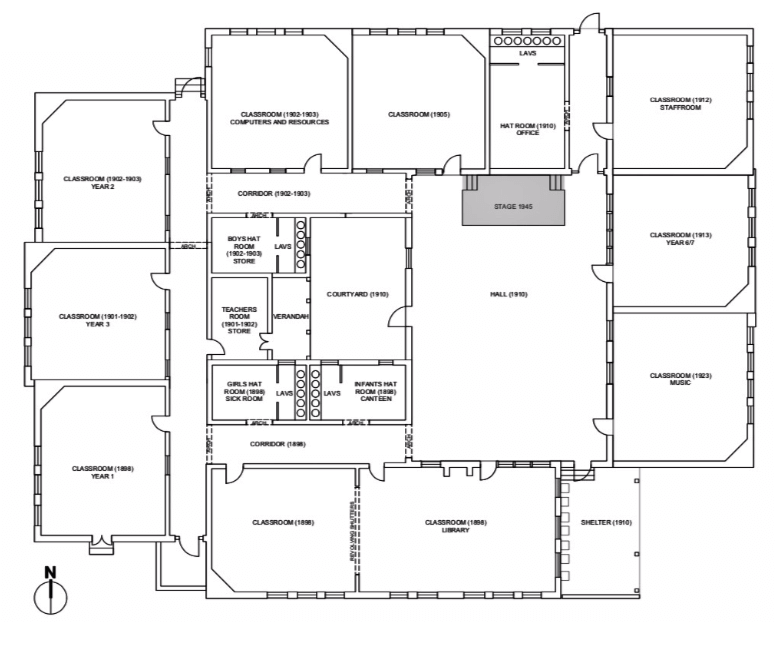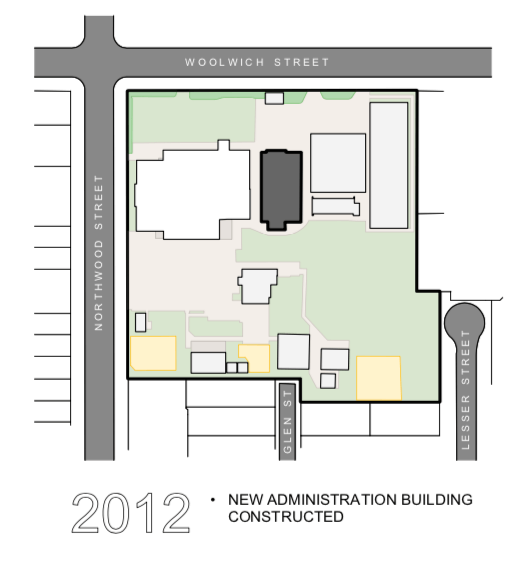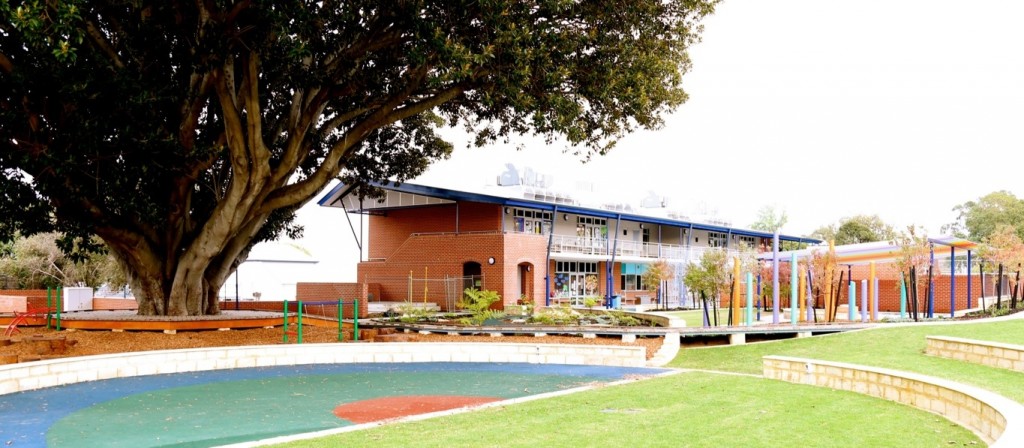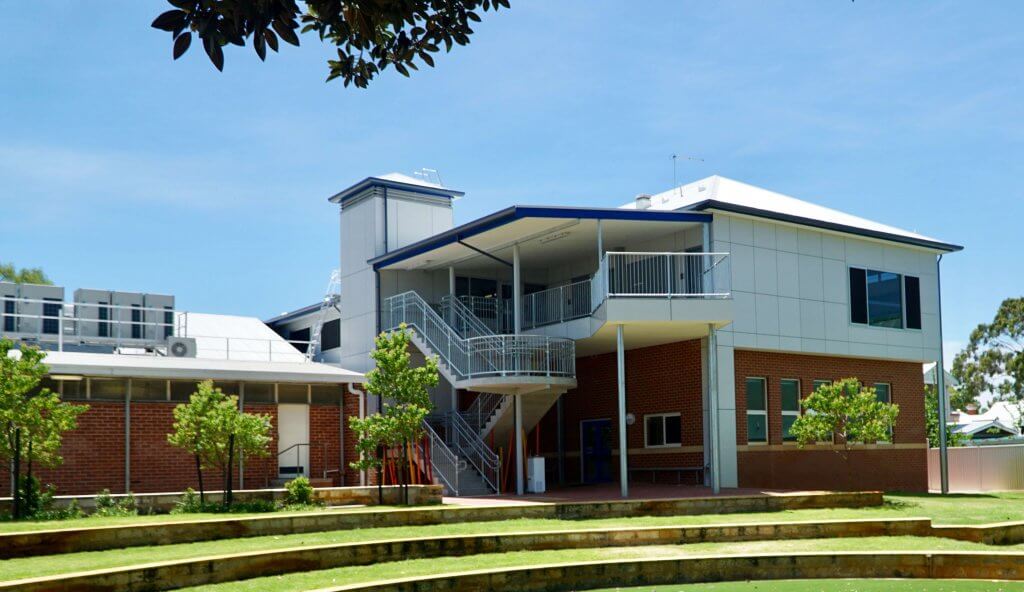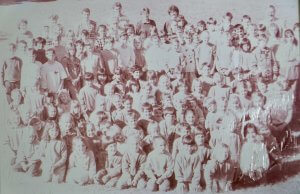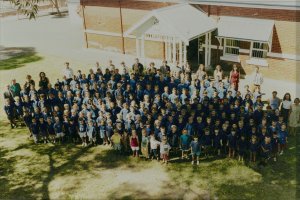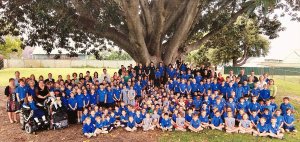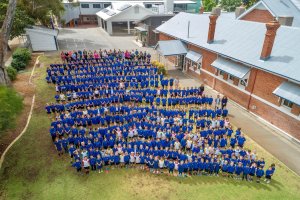Delivering Educational Excellence
World War 1
” When the news came that the war was over, we were having drill in the playground after morning recess. Immediately everything was forgotten and bells from the Church, firestation and the school rang out. It was terrific and I can still remember 70 years later the cheering and shouting everywhere”.
Jessie Elizabeth Howe, as recounted in 1988.
Class photo circa 1910 to 1920.
1929 Western Australian Centenary
In 1929 Western Australia celebrated its Centenary and the school joined in celebrations. There was a production line in the hall stuffing paper bags with food for a picnic at Lake Monger. Each child was given a bag containing sandwiches, cakes, fruit and sweets. A medal was also issued to all children.
“The highlight of the year was a gala day at the WA Cricket ground for which the Governor, Sir James Mitchell, granted a special holiday. We had practised for weeks, young classes around the maypole, the boys doing callisthenics and also folk dancing. The West Leederville juniors were dressed as red poppies, the dresses and the little hats made from crepe paper, other metropolitan schools were arrayed in glorious colours. It was a fantastic display. Then all the children were given a little Centenary Flag which we all waved enthusiastically as the Governor was driven around the arena before leaving. The day had been grey and rain threatened but fortunately it held off until late afternoon. When it came, the red dye ran from our costumes but the day had been such a delight that nothing could dampen our spirits and the poppies had served their purpose. We were very excited to have picture in the local paper.”
Mrs Enid Cannon, nee Foulkes 1926-32
Primary Skills
The curriculum for a long time centred on reading, writing, arithmetic, home preparation (sewing and domestic science for the girls and manual arts for the boys) and drawing.
“Home science consisted of cooking and ironing, taught at the Leederville school. We made Cornish pasties. Two children were selected to take them back to their own school in cane basket. They went to each classroom and sold the pasties for lunch. When they had sold all the pasties, they had to bring the basket back to Leederville school and account for the money they had collected. The irons we used were very heavy and had to be heated on a stove. Zebo polish was used to clean the stoves.”
Mrs Rita Fischer, nee Meyer 1925-1932
Much emphasis was placed on sewing for the girls as it was considered of paramount importance for employment after leaving school. The models they made were often sold back to them at the end of the year to raise money which went towards buying more material for the following year, prettier material than that which was supplied by the Department.
In the senior sewing classes girls were instructed to make a practice of darning their own stockings.
Boys attend the Manual Arts Centre at Subiaco.
(taken from West Leederville Primary School 1898-1988 Remembering the Days…)
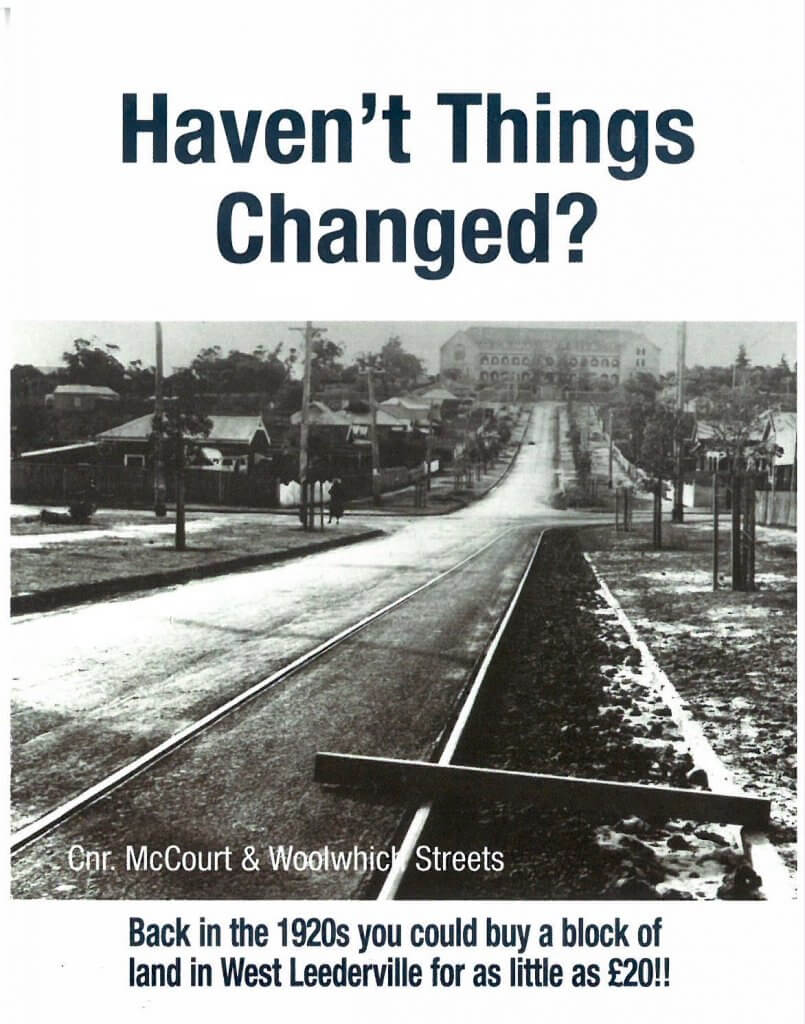
The Great Depression
In 1930 the Great Depression began with many people jobless. Many school children came to school shoeless, their bright pink feet in the bleak winter weather an example of the hard times. Although for some boys the wearing of shoes other than in the coldest and wettest months was just not on anyway and class distinction was very much on the side of the shoeless!
Reminiscing
Recollections from former students interviewed in 1988 for the occasion of the 90th anniversary of the school.
World War II
The war had commenced and the teaching staff especially the men were fast disappearing. Seven teachers had been conscripted during the year from the staff and six added.
In 1942, after Darwin was bombed and Broome and Wyndham were attacked, it was considered Perth could be next and the Government asked anyone with relatives in the country to send their children away.
During this time slit trenches were dug in the school grounds in the north eastern area. Regular trench drills were held and the children were made to wear trench capes made from hessian with a hood tied under the chin. Attached to these was a cord with a small half rubber ball and them were taught to bite on these if there was any hint of bombing.
On the lighter side, air raid practice was considered to be fun because normally the girls and boys were segregated into their own play areas and never the twain should meet. This was one occasion where they both made for the same trenches in the schoolyard.
Children were also taught how to lie in the street against the curb on the way to and from school nad practised putting on a gas mask in case of a bomb attack. Children from Wembley were often required to run home and were timed to see how long it took.
Two gateways were made in the northern fence as the school was made and A.R.P. (Air Raid Precaution) depot. The A.R.P. helmets and fire fighting gear was kept at the school and a large garage with trucks was placed in the school yard.
Although the school suffered through fluctuations in enrolment and changes in staff, the efficiency remained high and patriotic activities of the children were keenly met. these included War Savings Certificates, collections of sugar, tea, cash, waste material, aluminium paper and rubber, and the knitting of jumpers.
Remembering the days…
The Jubilee of Australian’s Federation was celebrated on the 3rd May, 1951 with a series of pageants in the hall commencing at 10.15am. Drill displays were given in the afternoon and a flag was presented to the masses in the yard followed by singing and the presentation of Jubilee medals.
Empire Day was also celebrated on the 24th May, 1951 with the distribution of badges.
The erection of an open air theatre surrounded by lawns and garden was an excellent feature of the school in 1953. Pavement slabs were laid as paths round seats and tables. This delightful facility was enjoyed until 1978 when it fell into disrepair and was removed. The white ants had struck again.
1954 was to be a high point in the school’s academic and physical education. In this year fourteen children won scholarships, the choir was chosen to take part in the Secondary Schools Music Festival, the football team won the District Premiership, the girls won the basketball, the girls physical training was rated excellent: together with a fine record of Junior Red Cross activities, Gould League membership and collection for the Silver Chain. Parents also showed their appreciation by voluntarily contributing over 200 pounds towards school funds. An interesting feature was the adoption of the Wittenoom Gorge school for the purpose of social educational projects. The senior girls also began using a new Singer sewing machine valued at 40 pounds.
Memorial library
A Memorial library was instituted in 1957 and the West Leederville-Wembley-Floreat Park- Subiaco Branch of the RSL began donating books in memory of deceased ex-servicemen. Prior to this classes had to rely solely on their own individual libraries which were often funded by holding tuckshops organised by the teacher.
Remembering the days…
New school policies were formulated in 1971 to meet the needs of a school population affected by:
- A recent but significant increase in the number of migrant children, which represented 21 different nationalities by 1973.
- Widely differing socio-economic backgrounds from the more favoured localities in the Lake Monger and Wembley areas, to large families housed in small, old timber-type homes with little or no playing space.
- A floating population from the recently constructed high-rise flats along the arterial roads.
“When my three children started at West Leederville in 1971, there were about 250 children enrolled. I can remember a Christmas Pageant when the children had to come in national costume and there were twenty-seven different nationalities represented. The school grounds were quite different too. Outside the Headmaster’s office where you now have lawn, it was all tarmac.”
A new tradition begins
The old school bell made by Metters was situated in the sand area directly in line with the hall door. Due to the constant onslaught of white ants and weather it was brought inside and installed in a place of honour in the hall in 1978. A new tradition began for the Year 7 (now Year 6) students. At the end of their graduation ceremony they now file past and each in turn is given the opportunity to pull the bell rope. This is now the only occasion on which the bell is rung.
The first school tuck shop opened in 1971 under Mrs Uhe and still functions as a canteen today.
1898
On Tuesday, 1 November 1898, the Minister for Education and Colonial Secretary, George Randell, MLC officially opened West Leederville School. The majority of the 91 children enrolled at the school had been born outside Western Australia.
1902
In 1902, the number of students enrolled at the school continued to increase with over 300 children on the roll. Tenders were called in late 1901 for a new classroom to accommodate 50 children a teachers’ room and verandah to be added to the school, as per the 1897 plan, along with an additional hat room.
1903
In 1903 proposed additions comprising two new classrooms, each with a corner fireplace and movable grading, extension of the corridor to a new boys’ entrance, a third corridor, and new boys’ hat room and lavatory. Tenders were called and the contract was awarded to W. C. Rose at a cost of £667 7s.
1905
The number of students continued to grow, and 384 students were enrolled at the school in 1905. Sketch plans were prepared for an additional classroom, and approval was granted.
1910
In 1910, 437 children were enrolled at West Leederville, and the average daily attendance was 352, which qualified it for a hall. A new hat room and new corridor were included in these works.
1912
1912, Leederville had grown to around 1,400 homes, of which around 80% were owner- occupied. With the continuing increase in population, additional accommodation was sorely needed at the school. In May 1912, tenders were called for building a further classroom, opening from the 1910 corridor.
1913
In September 1912, as the enrolment continued to increase, sketch plans were drawn for another classroom to be added to the school. Completed in March 1913, final plans show a new classroom to open from the hall, and adjacent to that recently completed.
1923
In August 1923, tenders were called and final plans were drawn for the addition of a classroom to West Leederville School, to open from the hall.
1941
In the early World War Two period, again there was insufficient classroom accommodation. The main hall and a cloak room were utilised as classrooms, and a local Church hall was hired for one class. In early July 1941, a pavilion classroom from moved from Bayswater School to West Leederville. A stage is added to the hall.
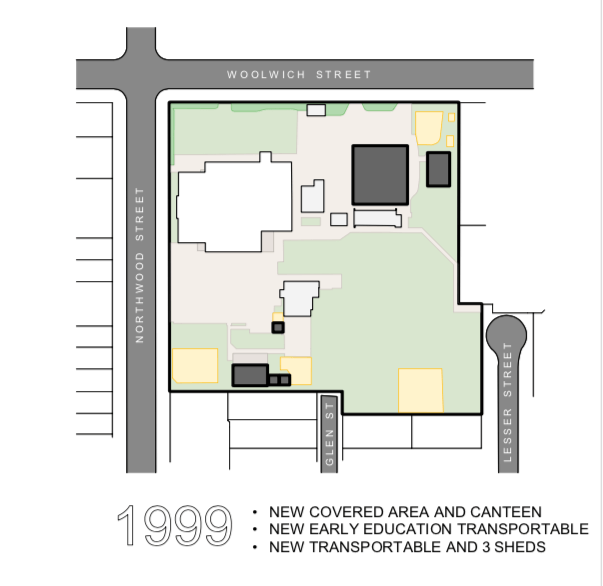
1999
In the late twentieth century, the Education Department implemented a policy to provide covered assembly areas at all schools. In January 1998, plans were drawn for a covered assembly area, canteen and store to be built at West Leederville Primary School.
2010
Plans for a new library wing, incorporating a music room and art/science room are drawn up. Building is completed in 2010.


